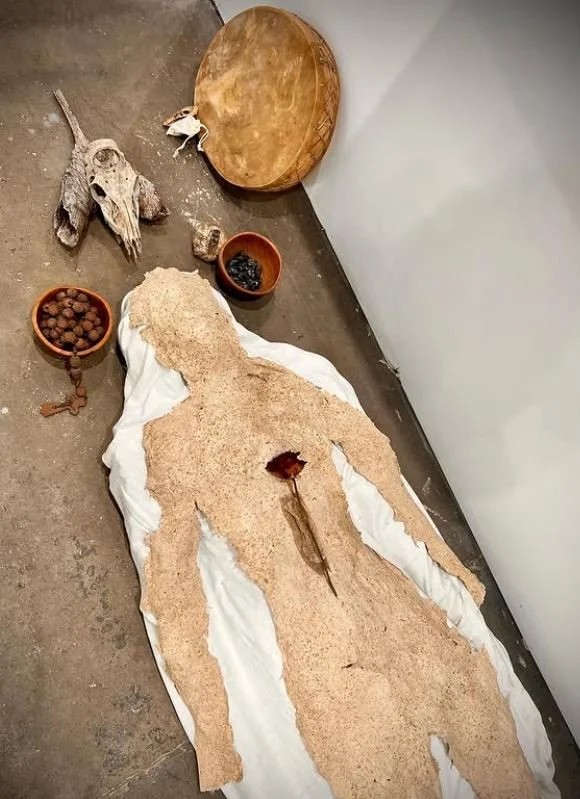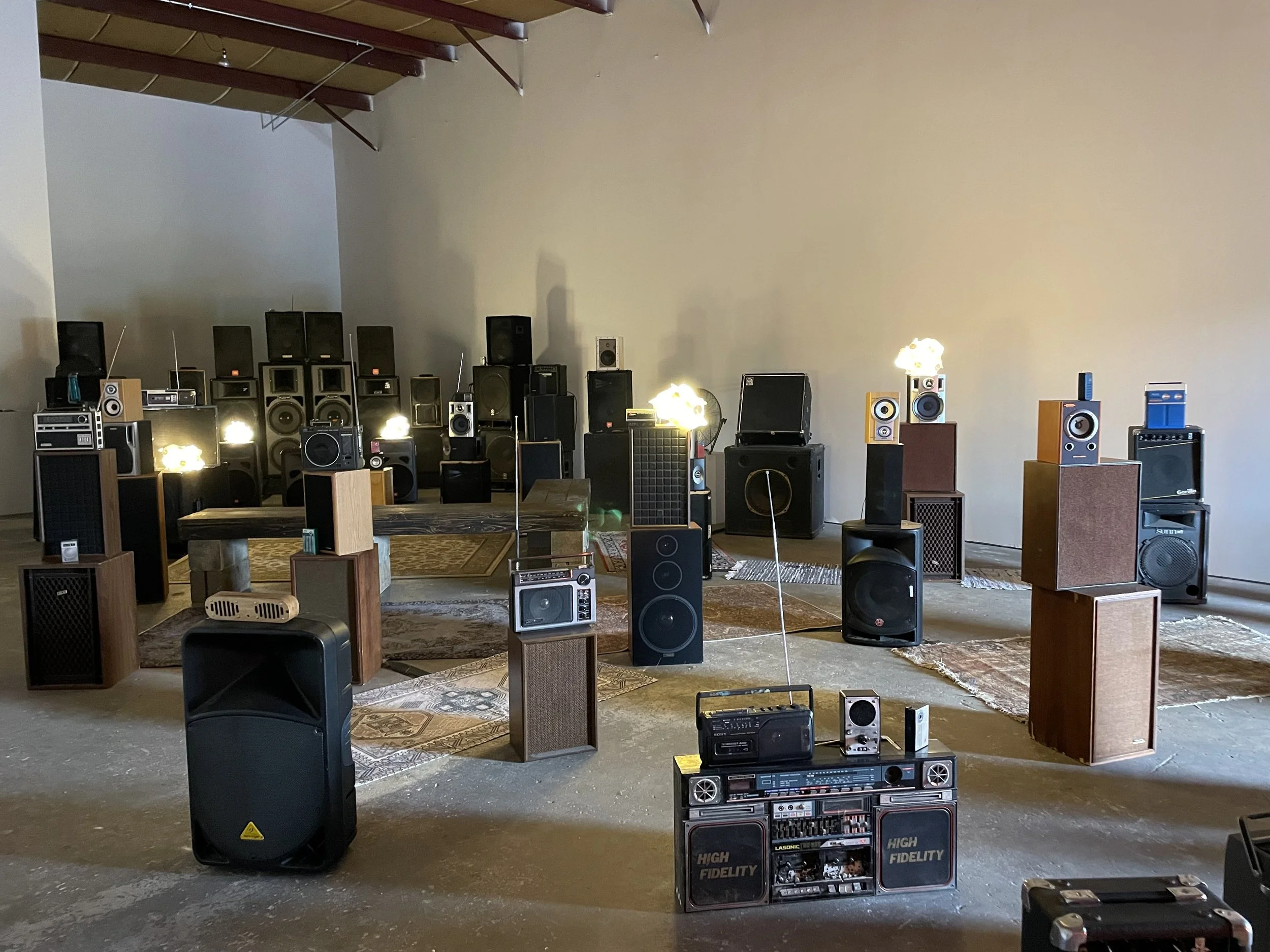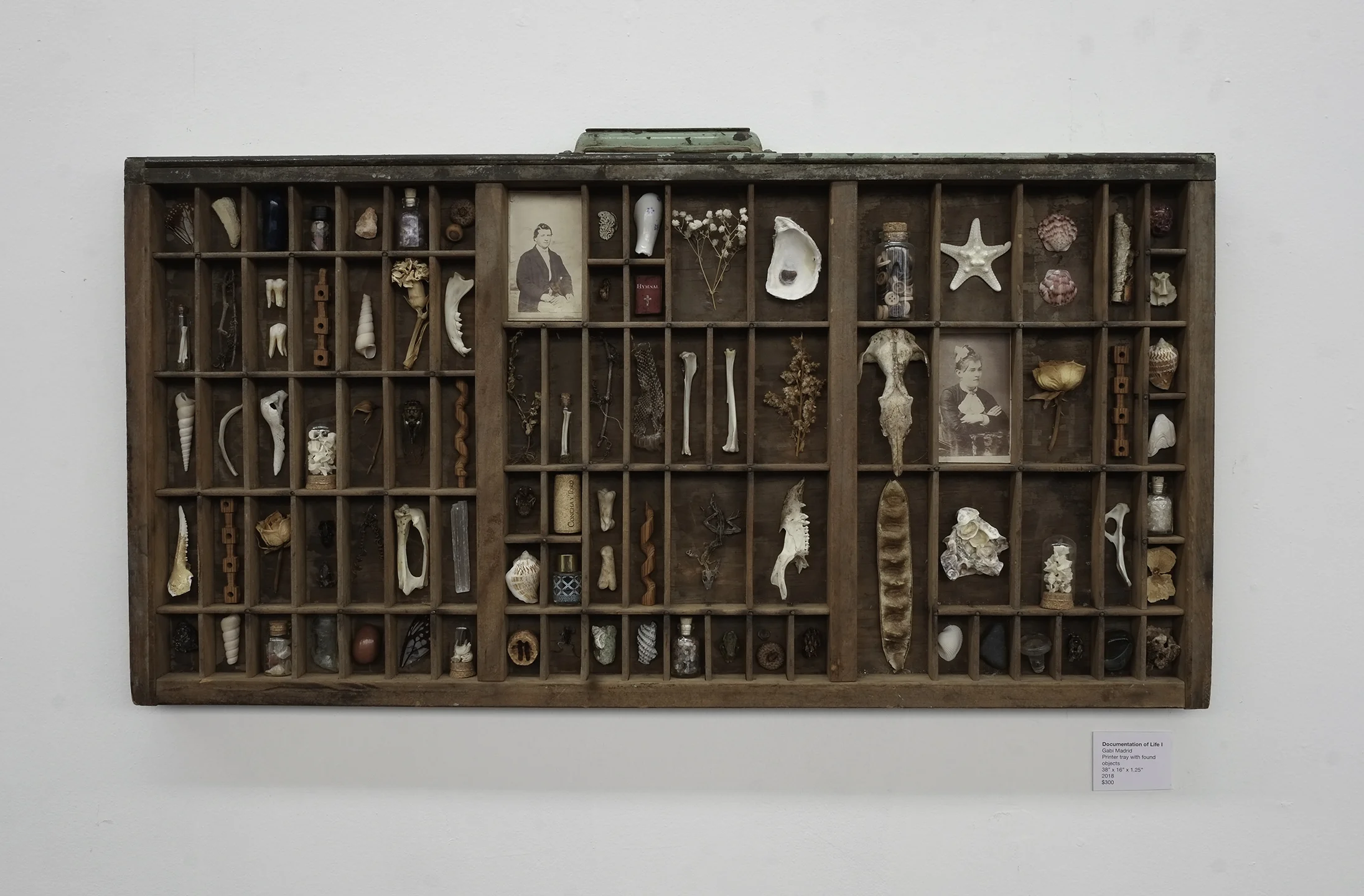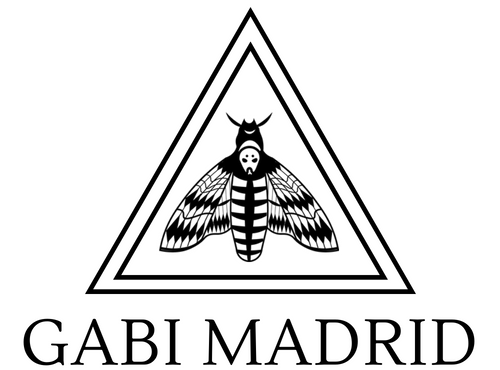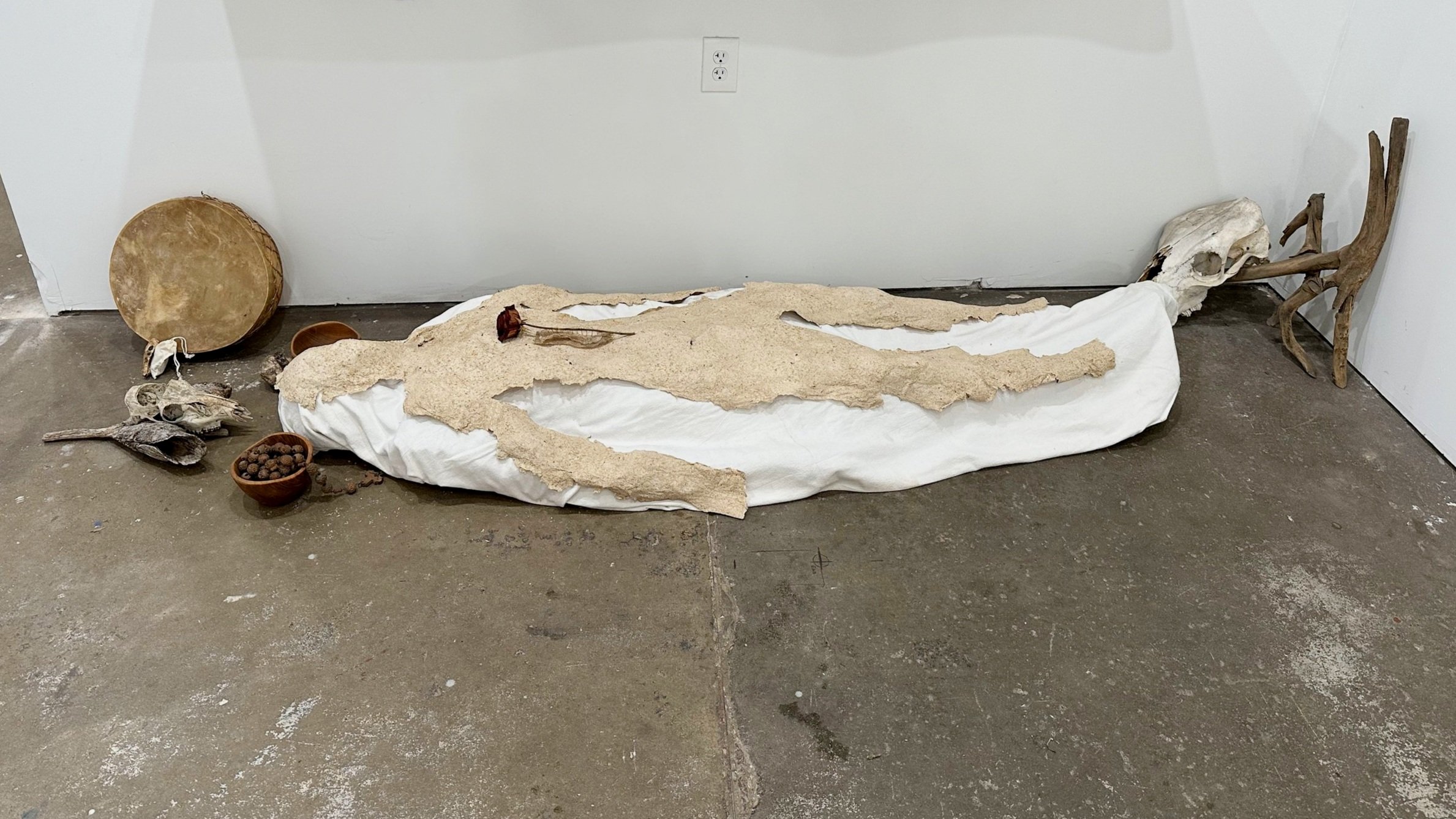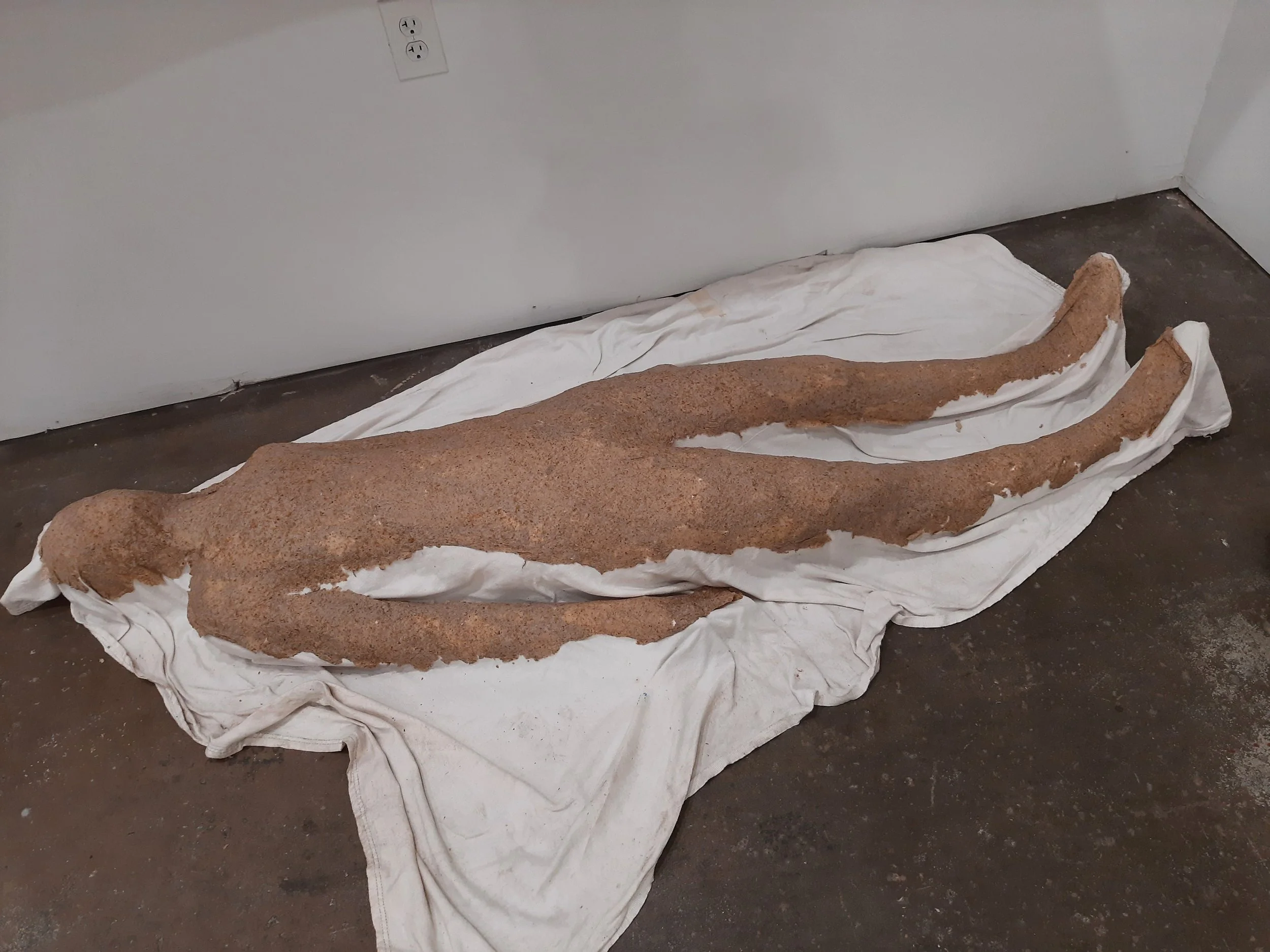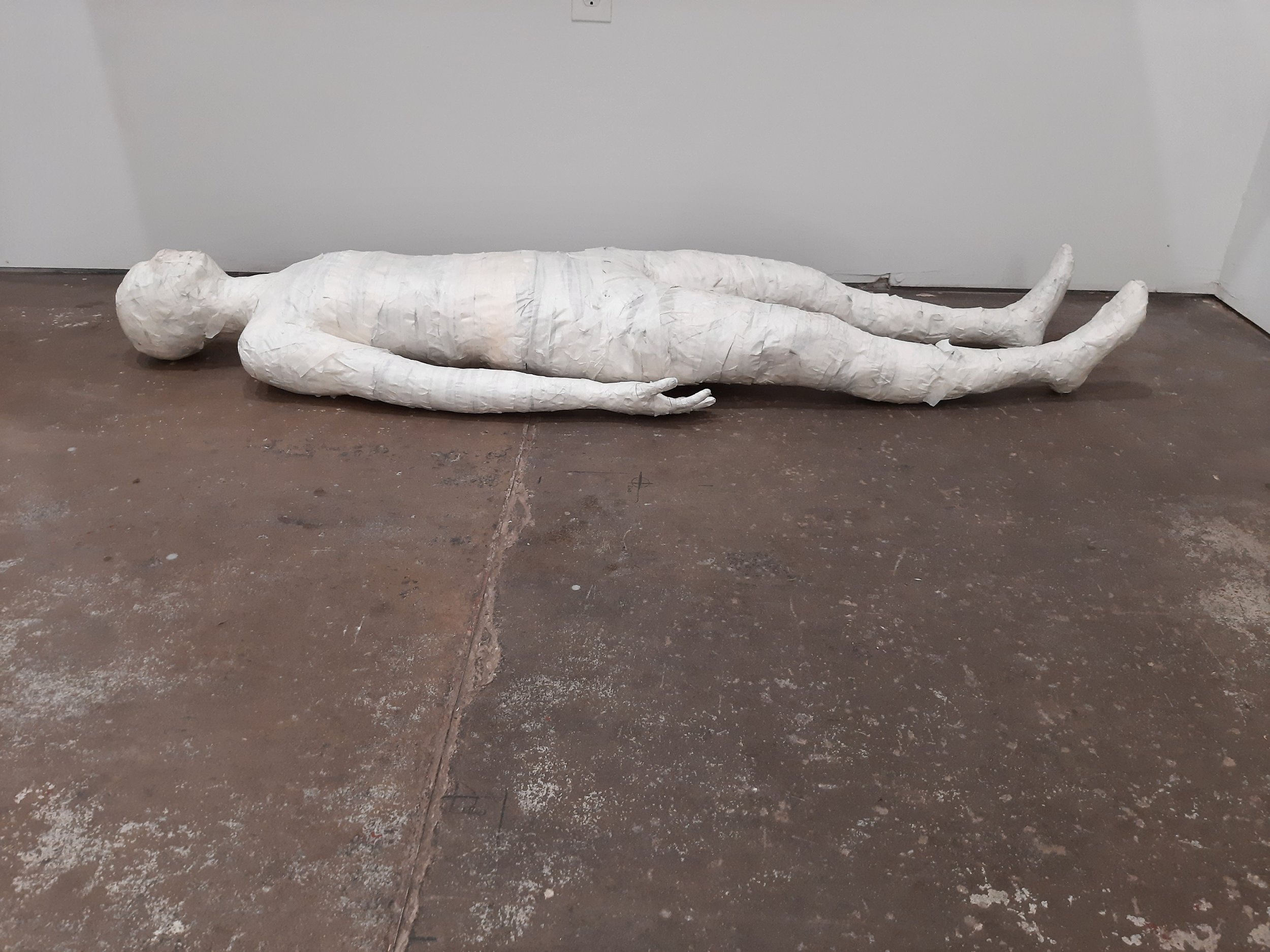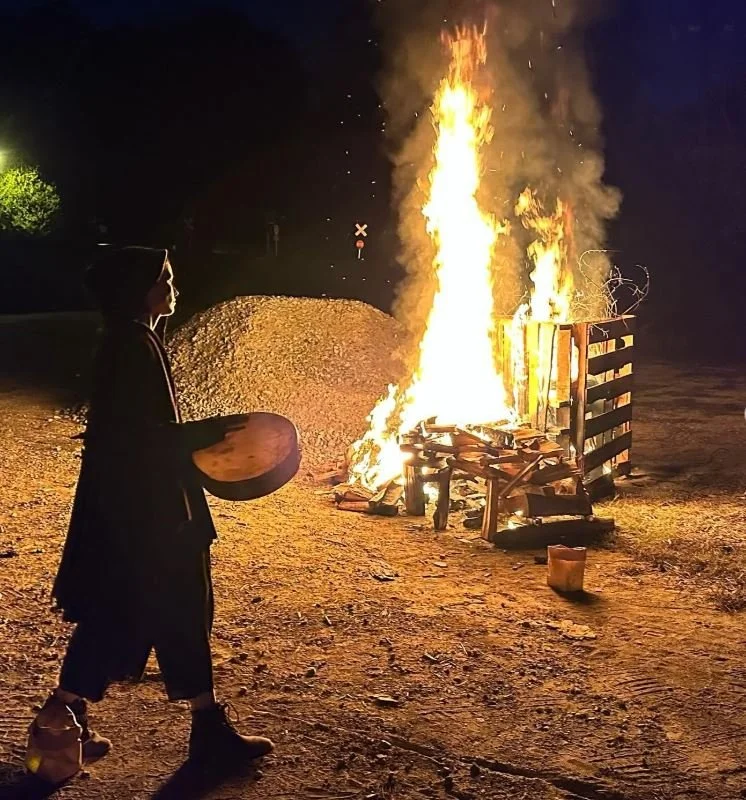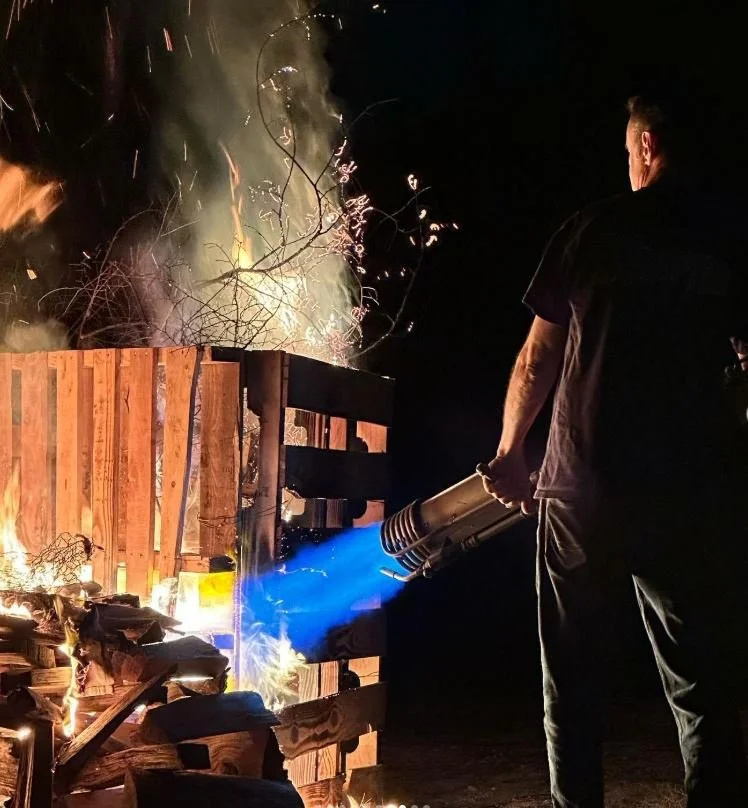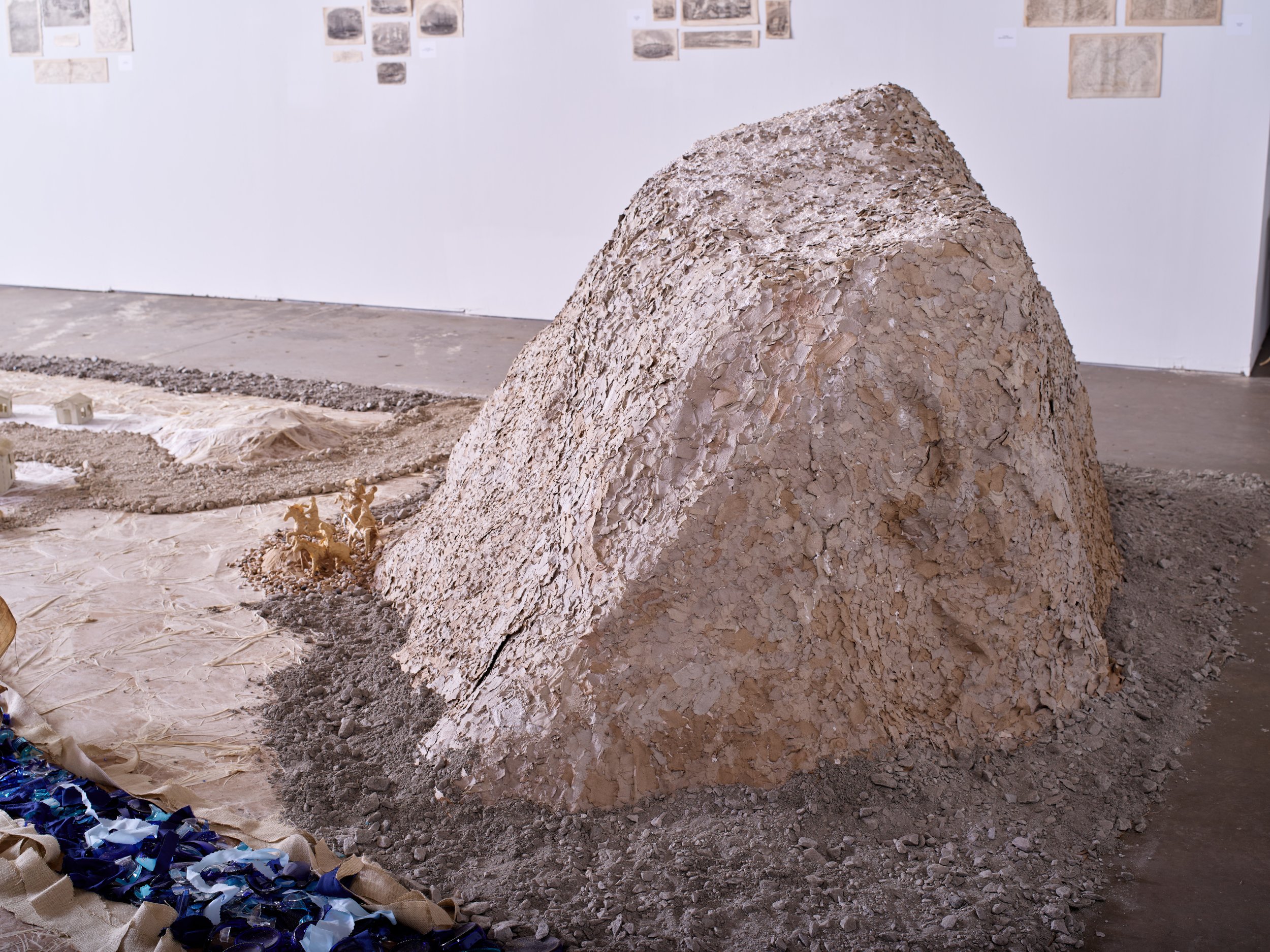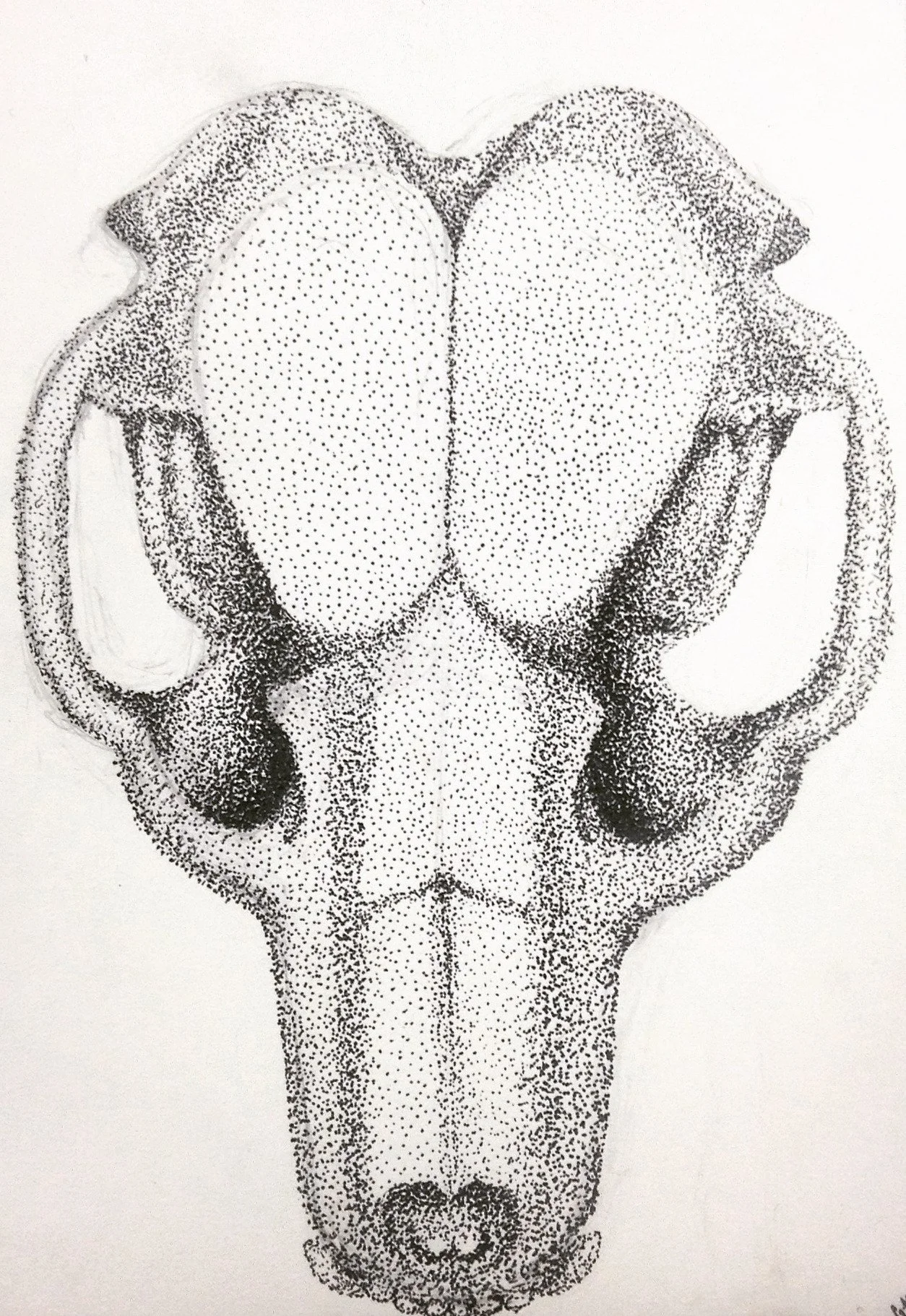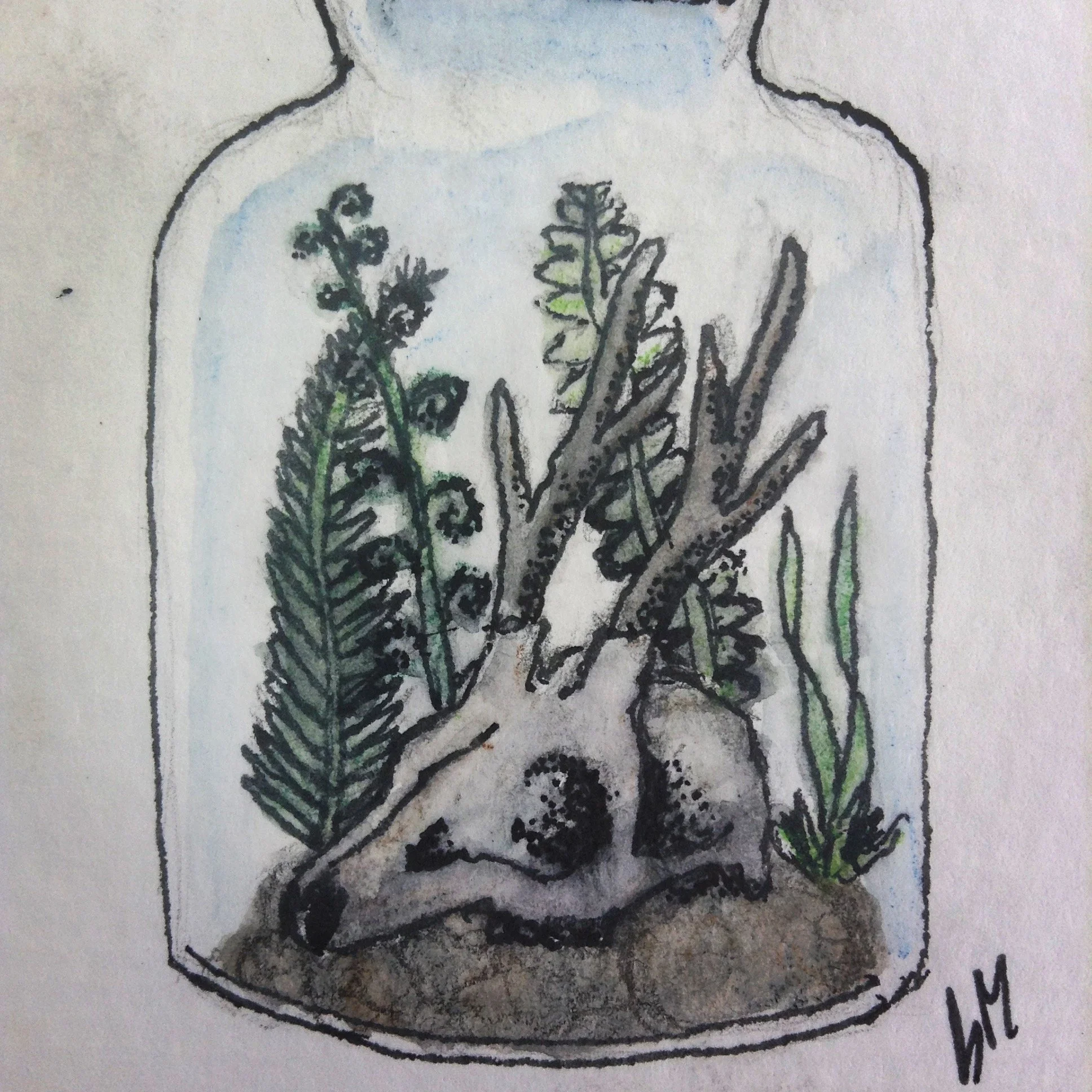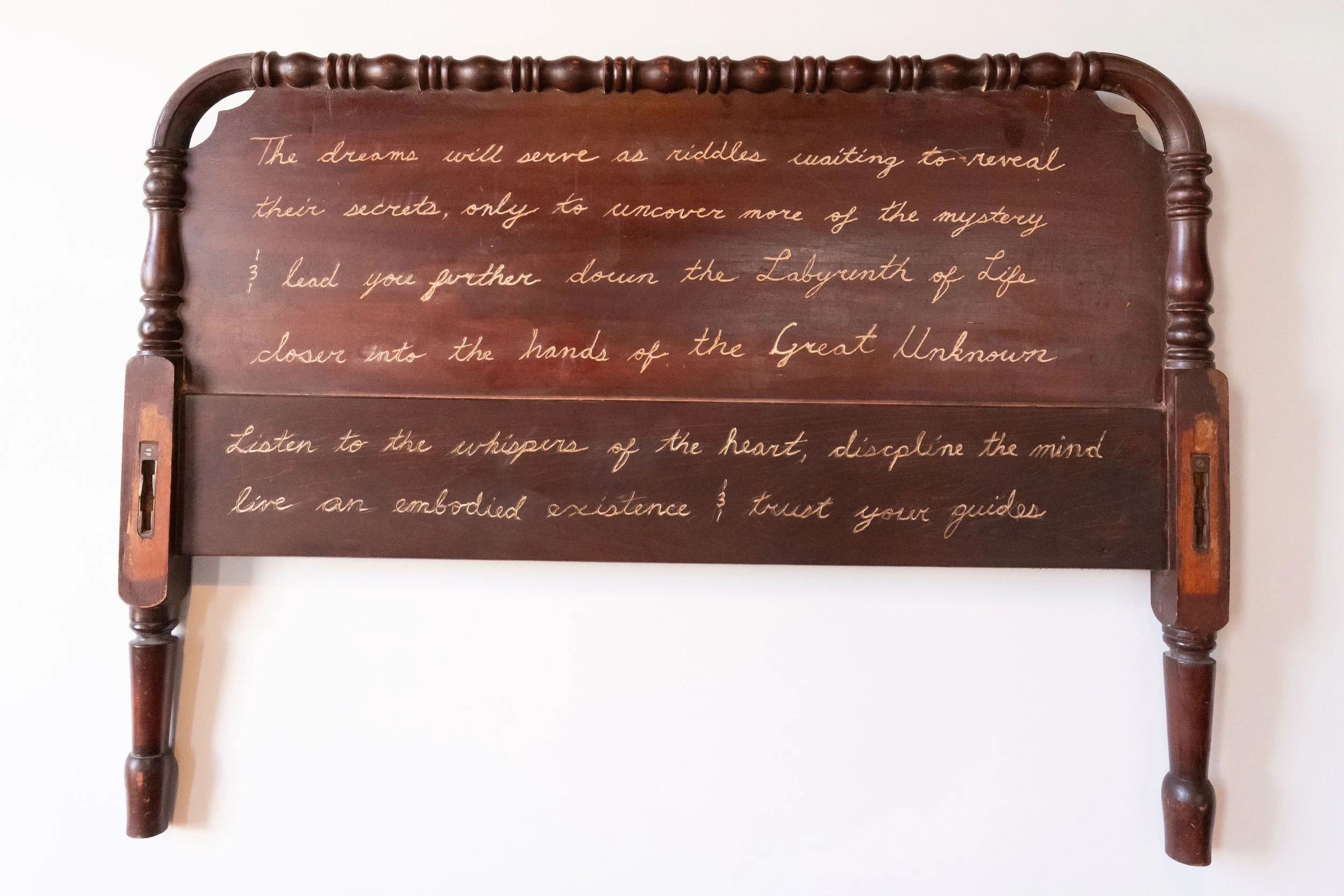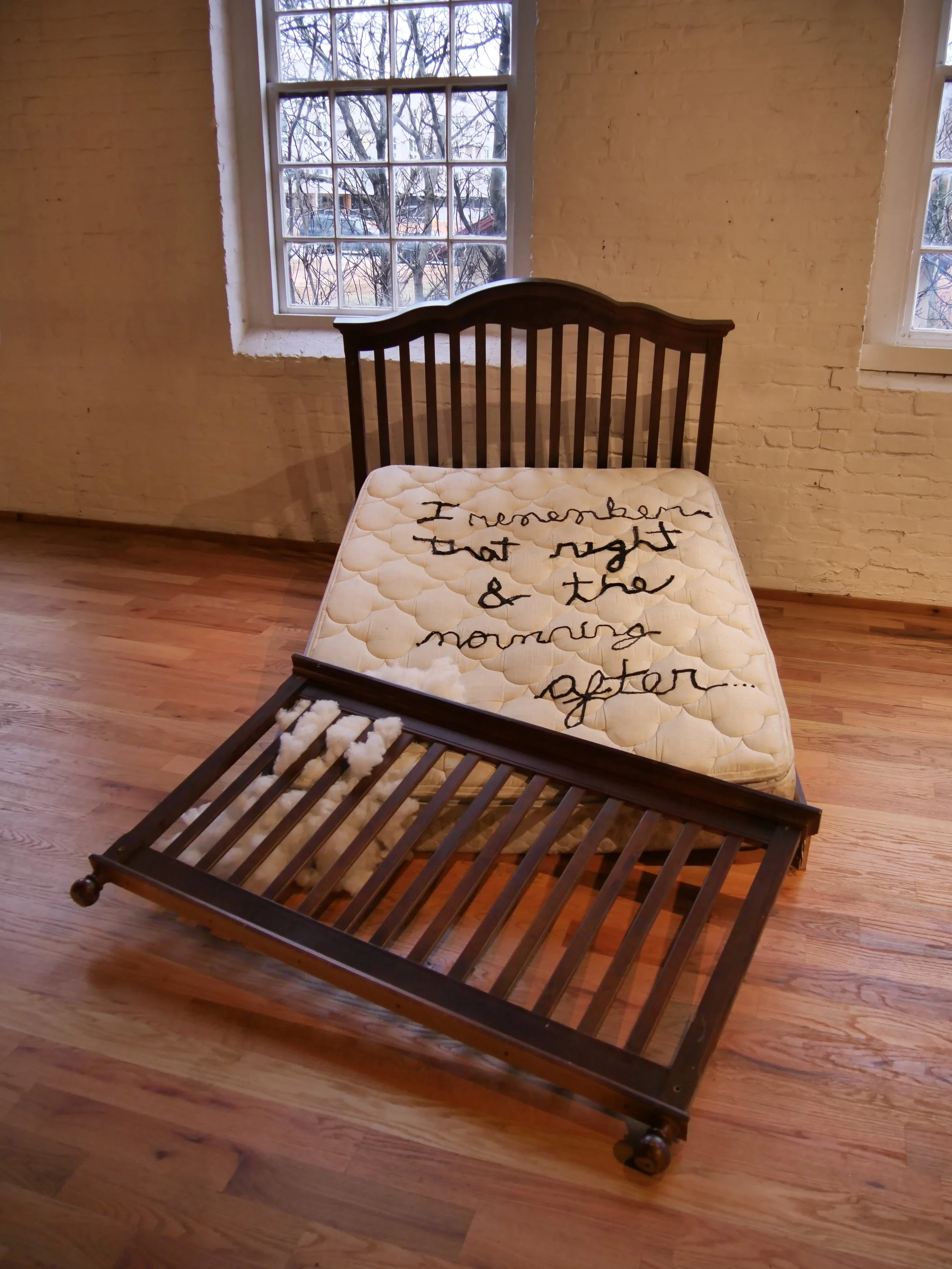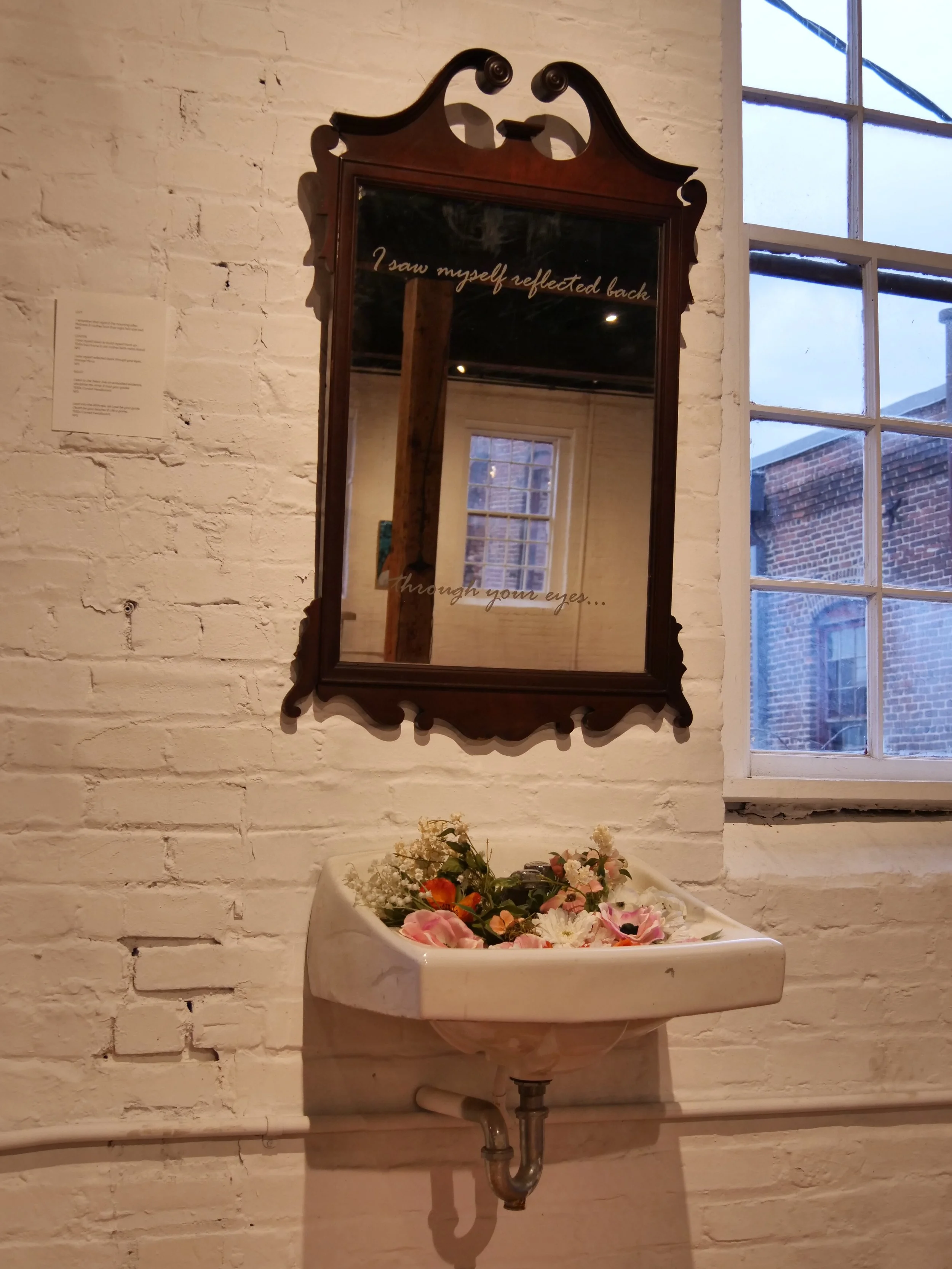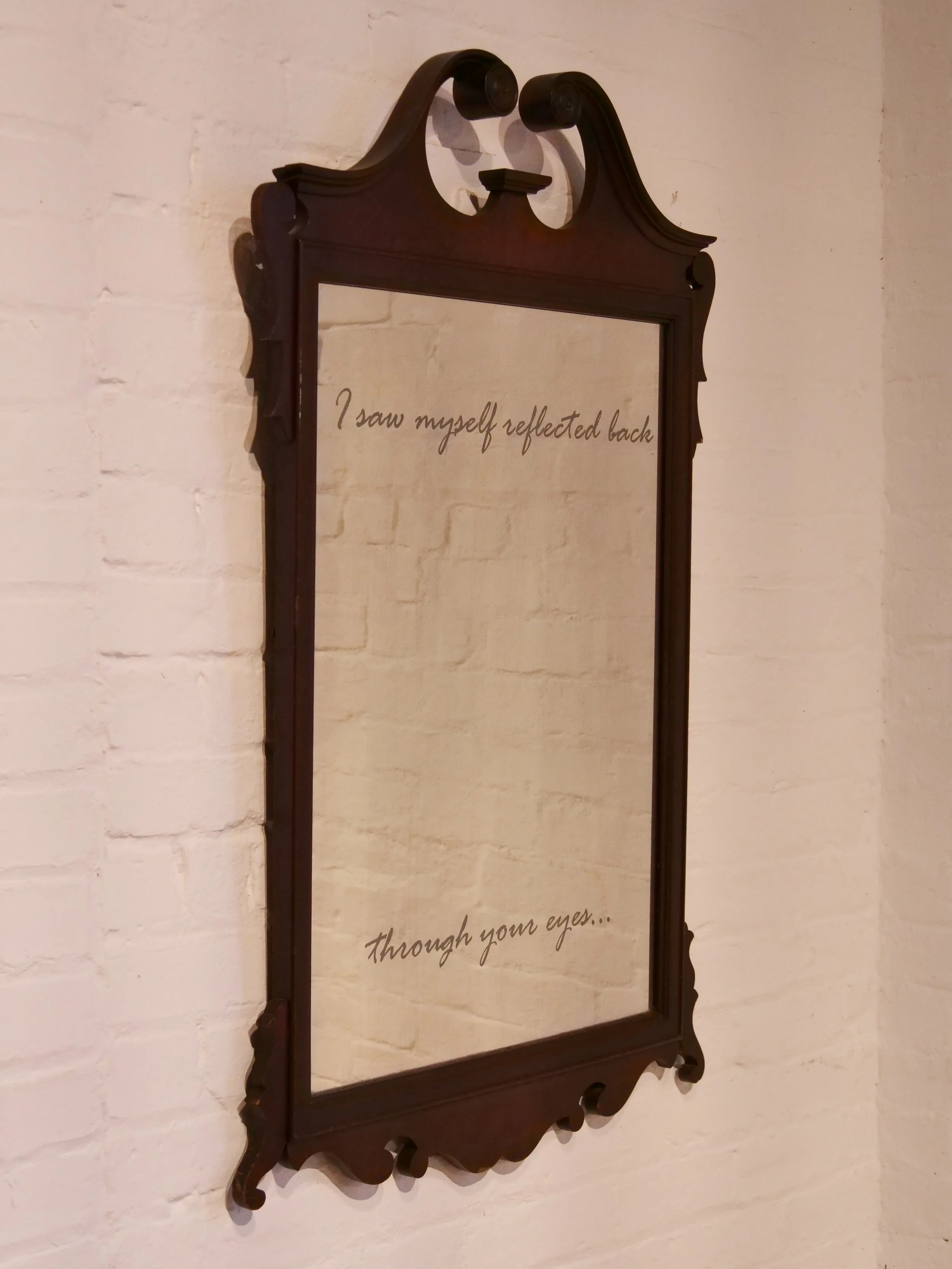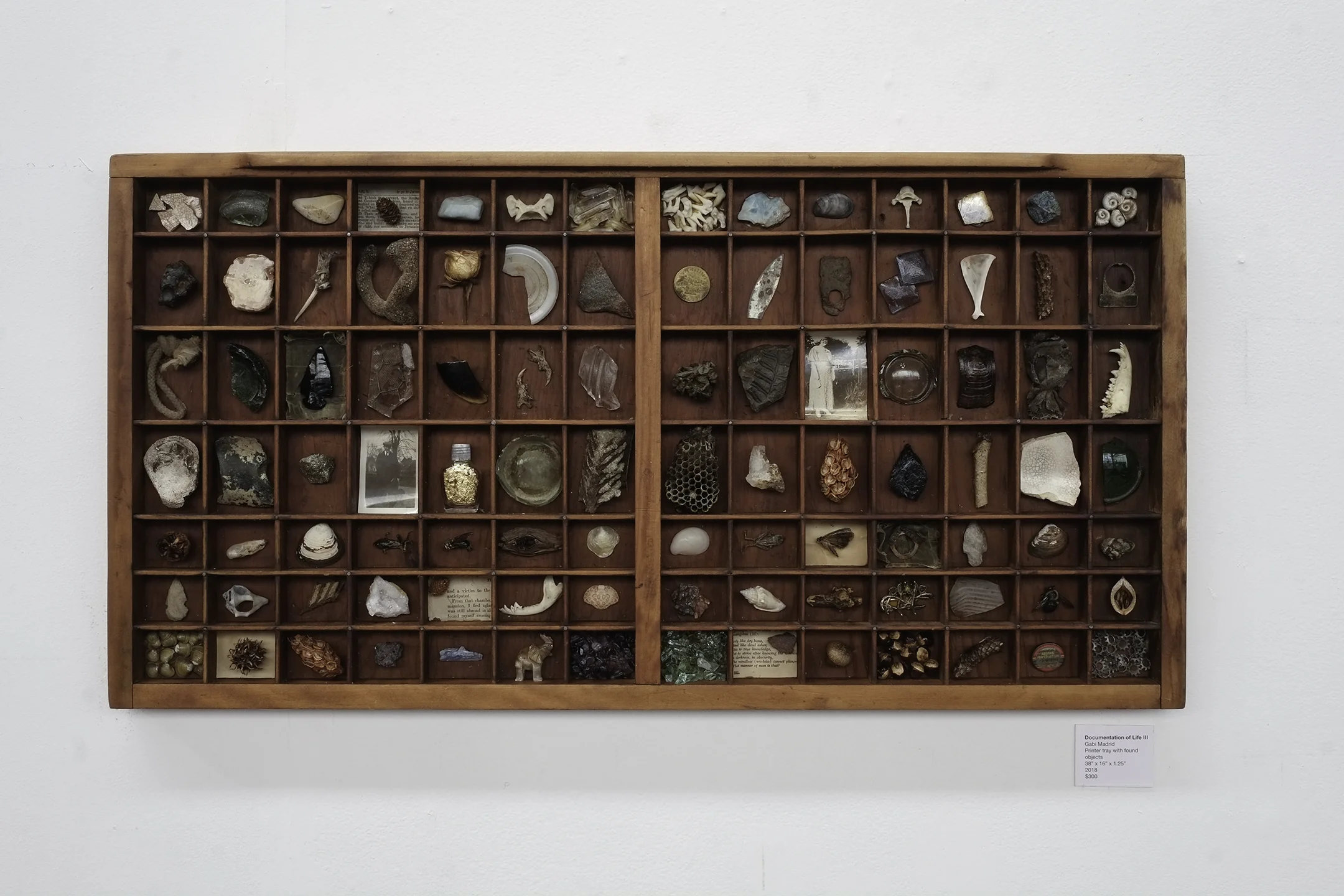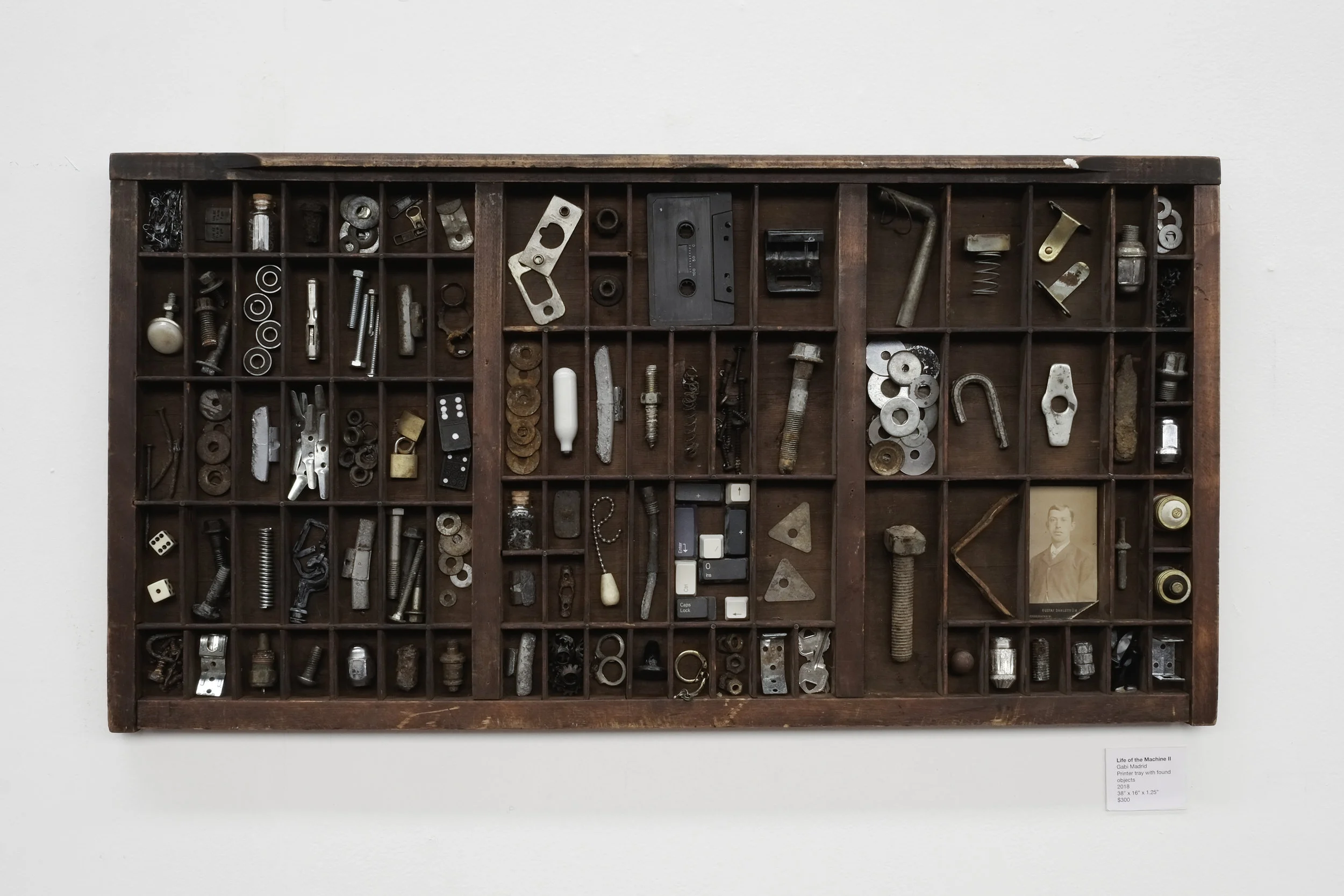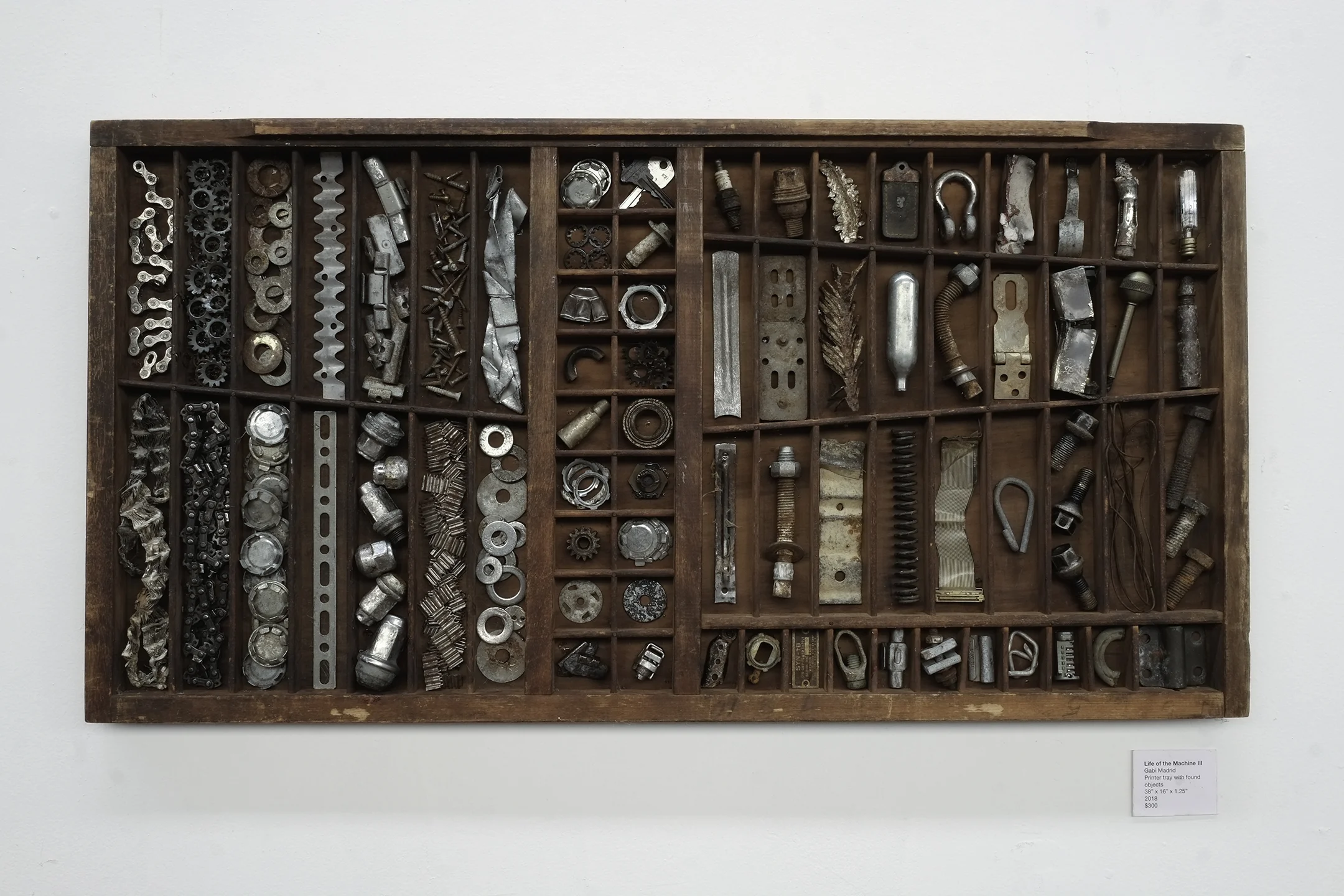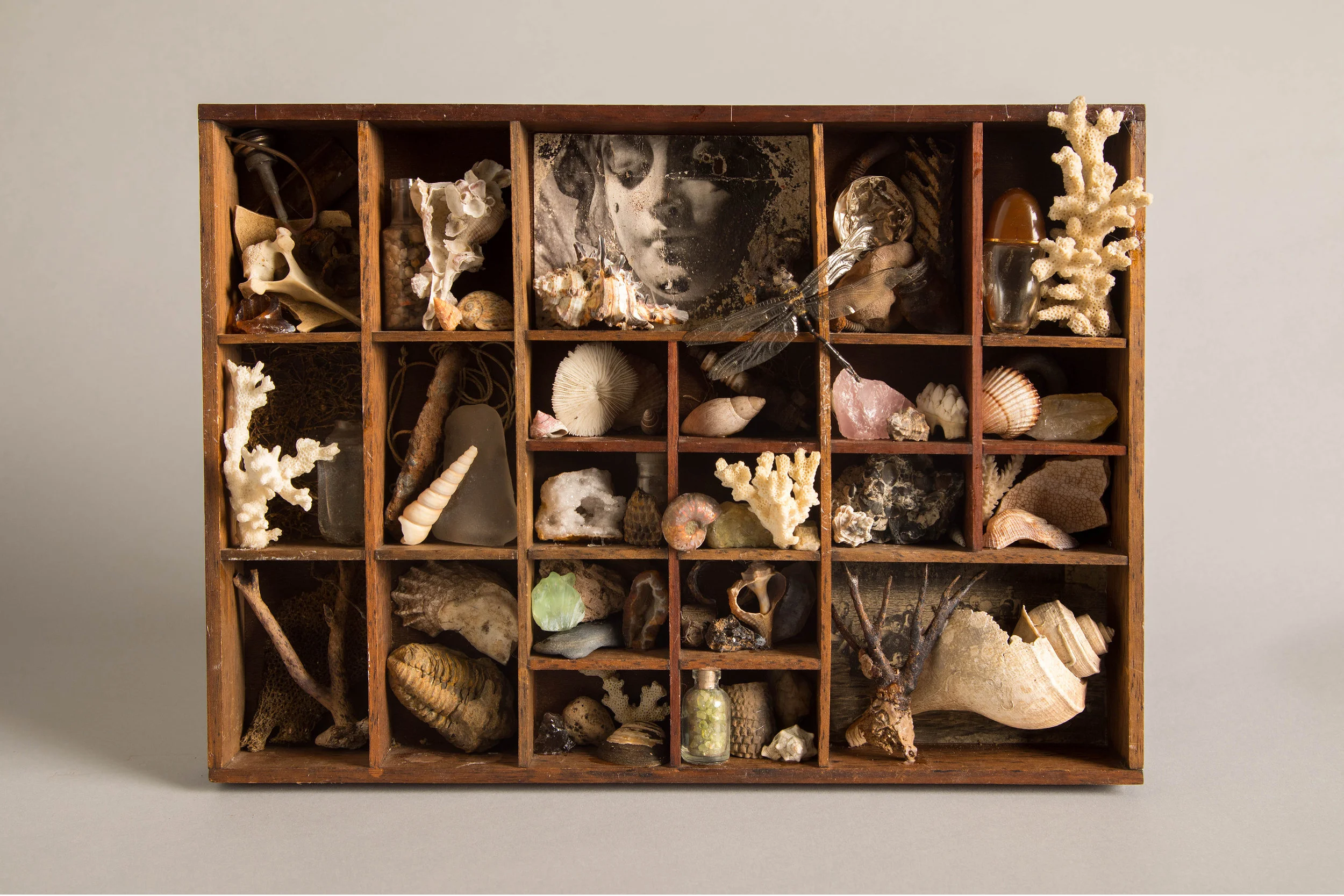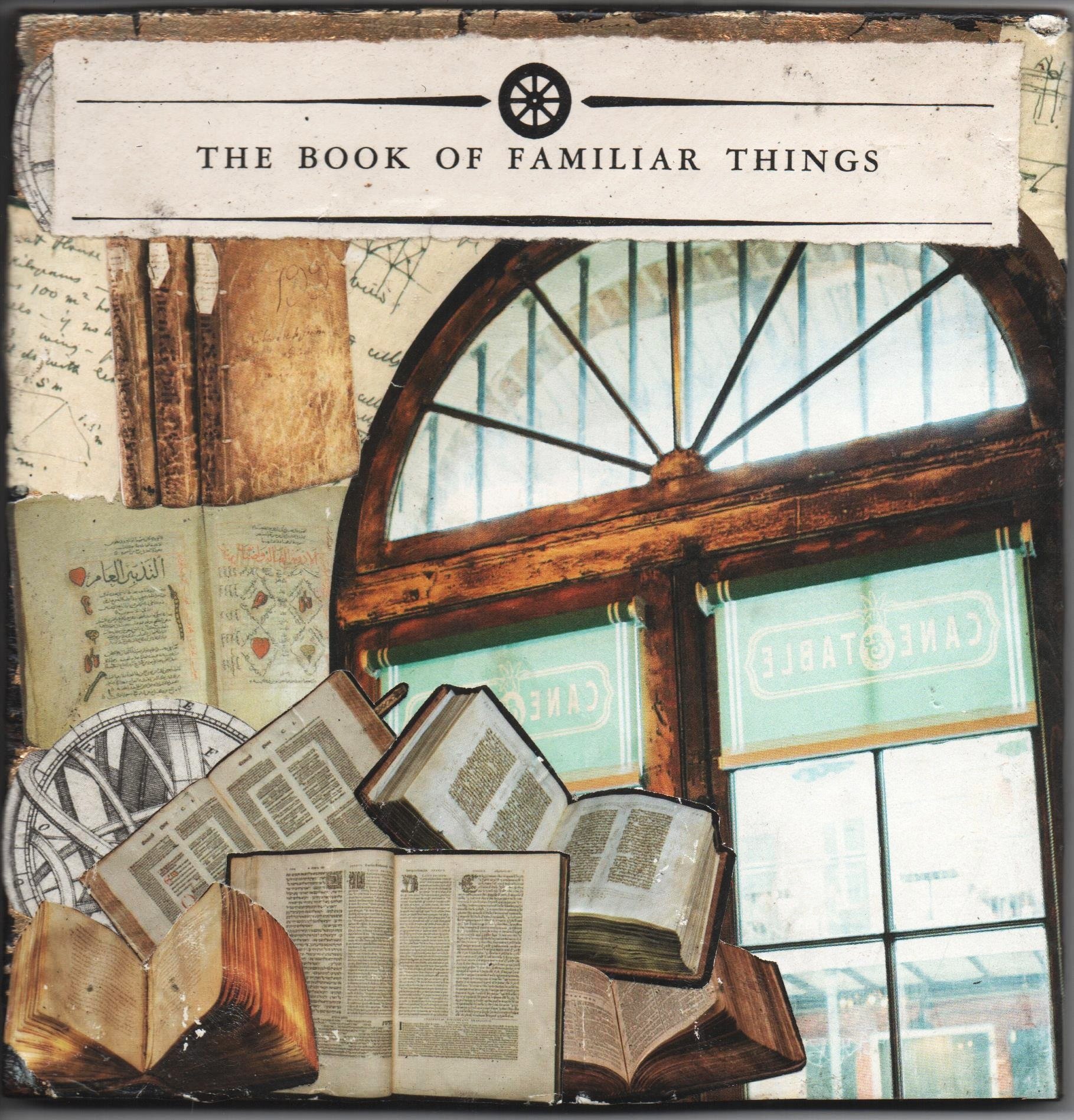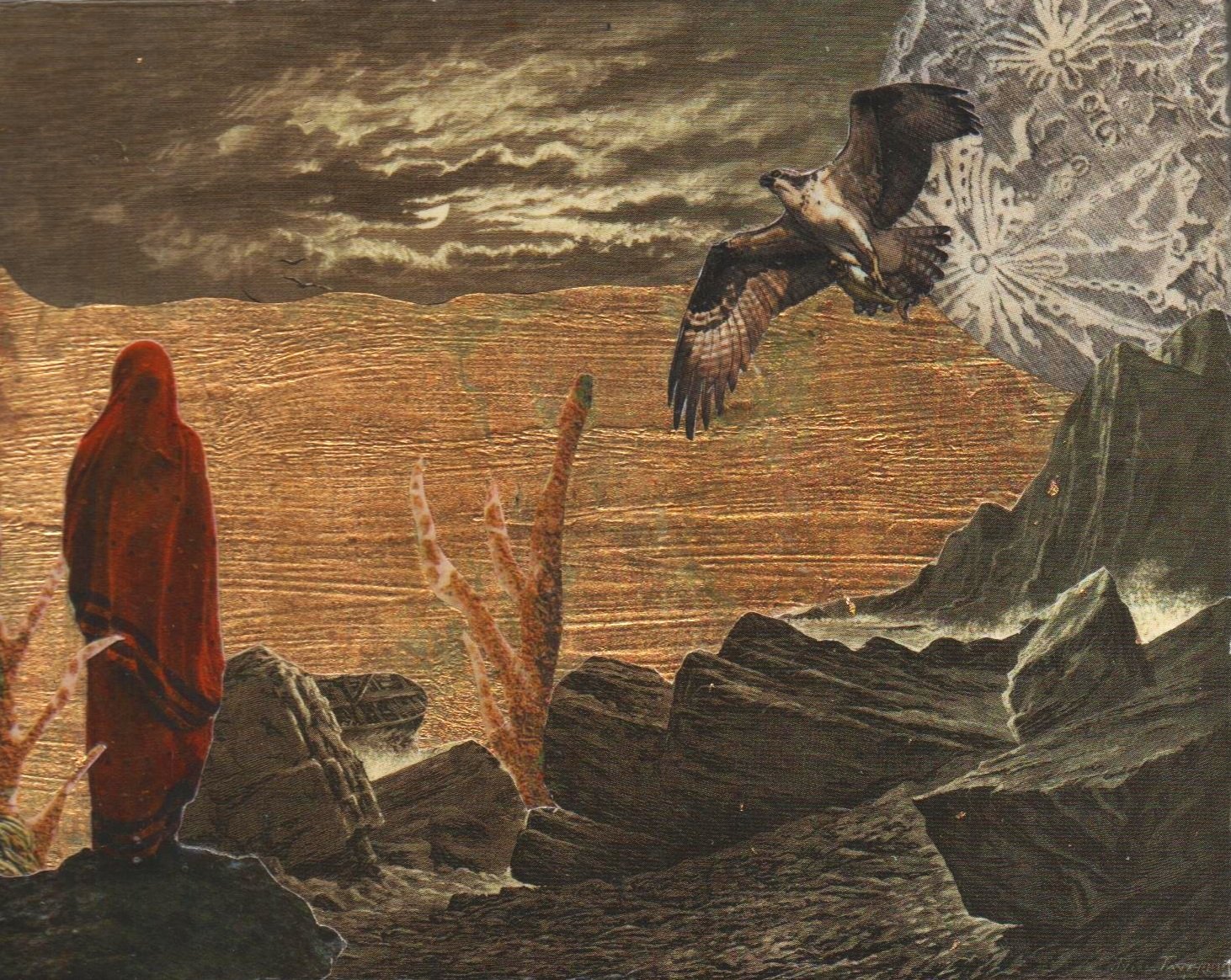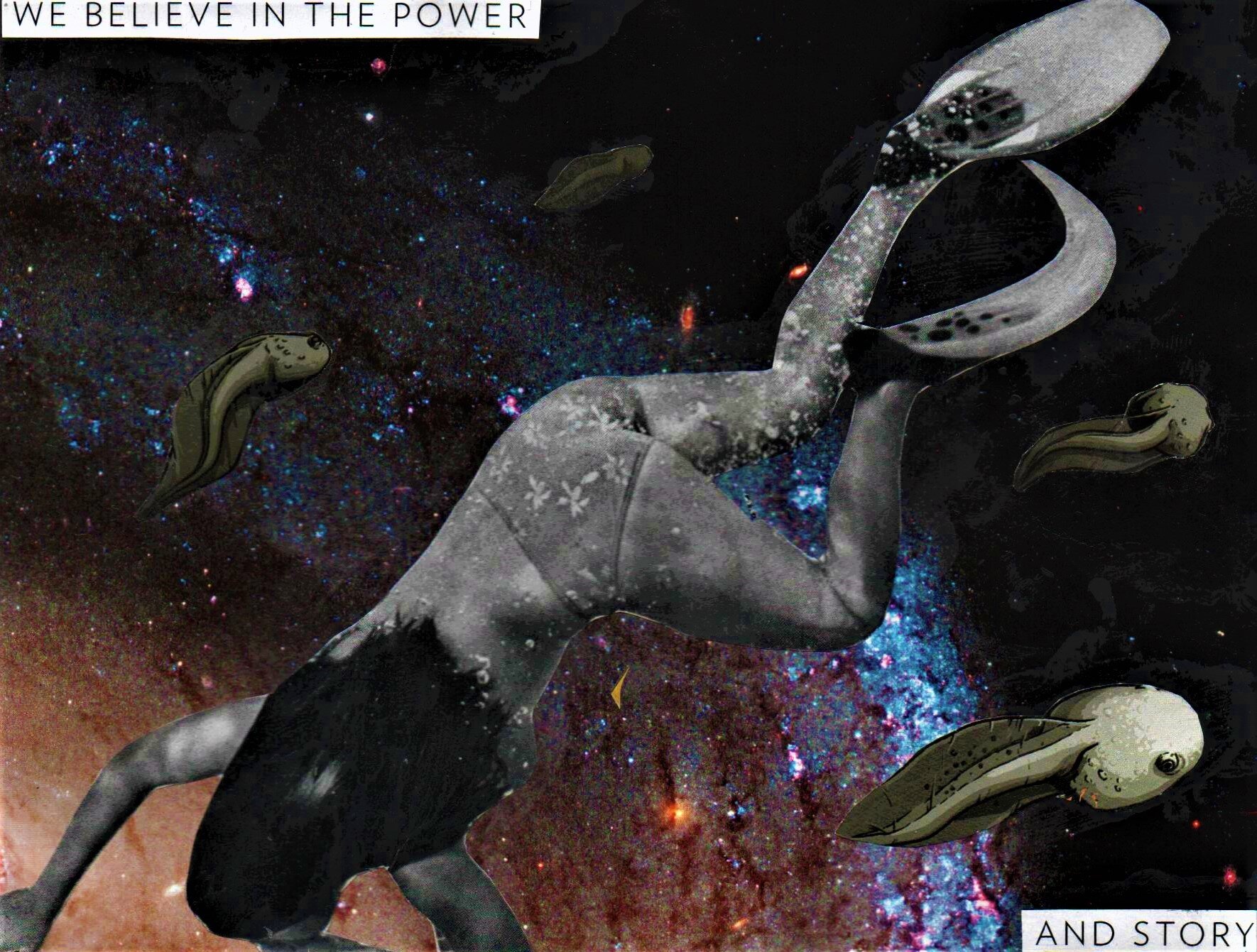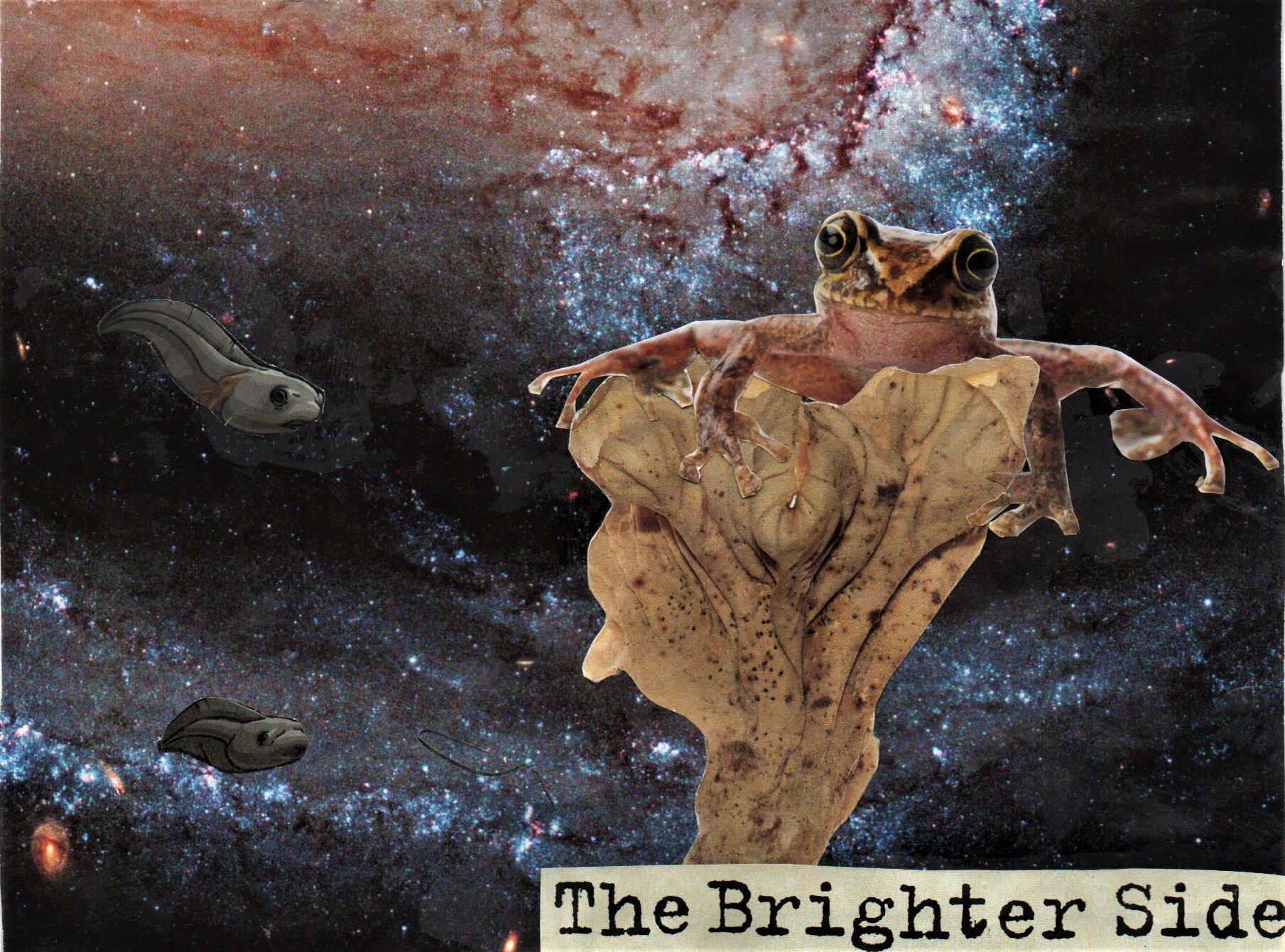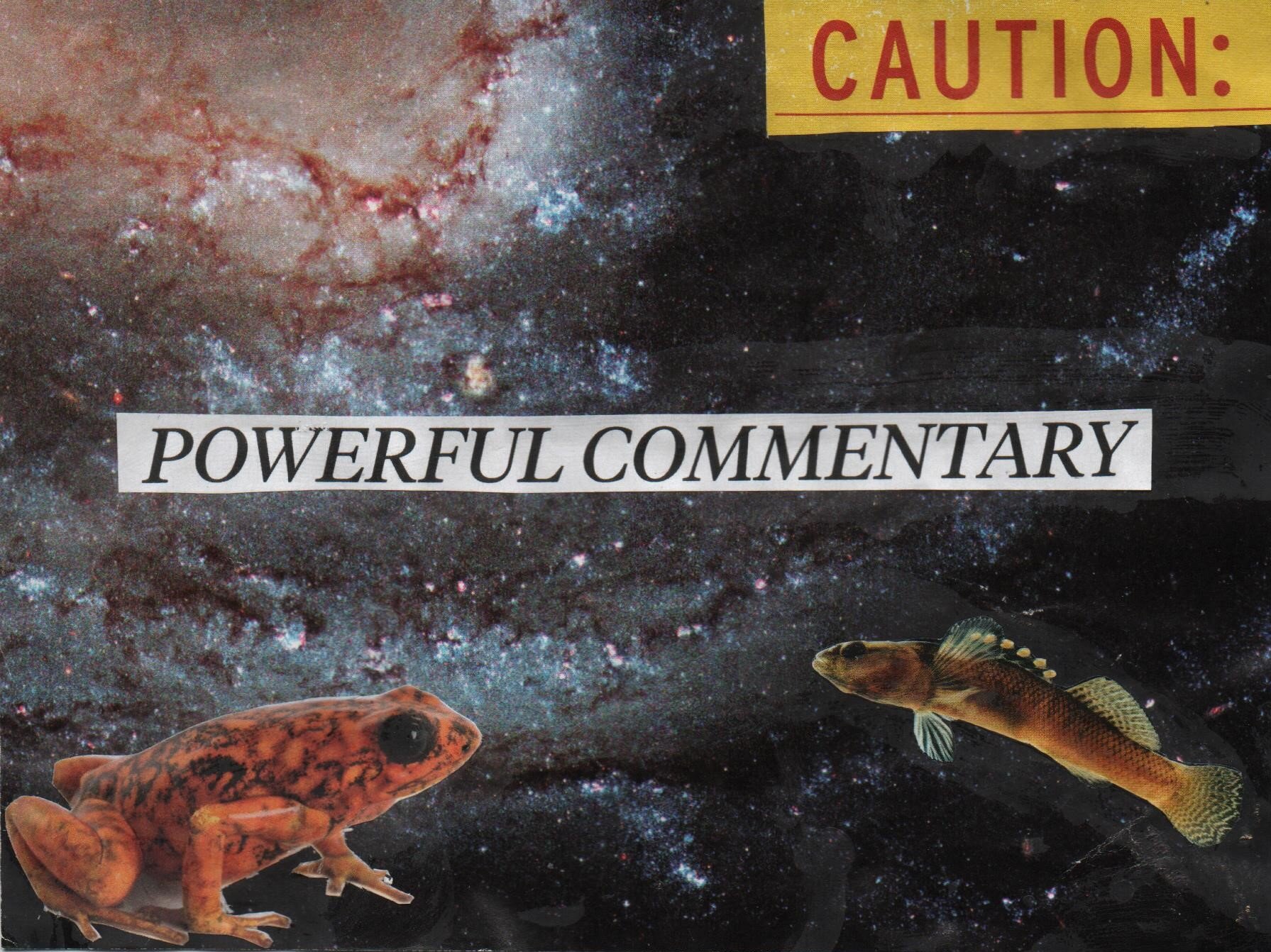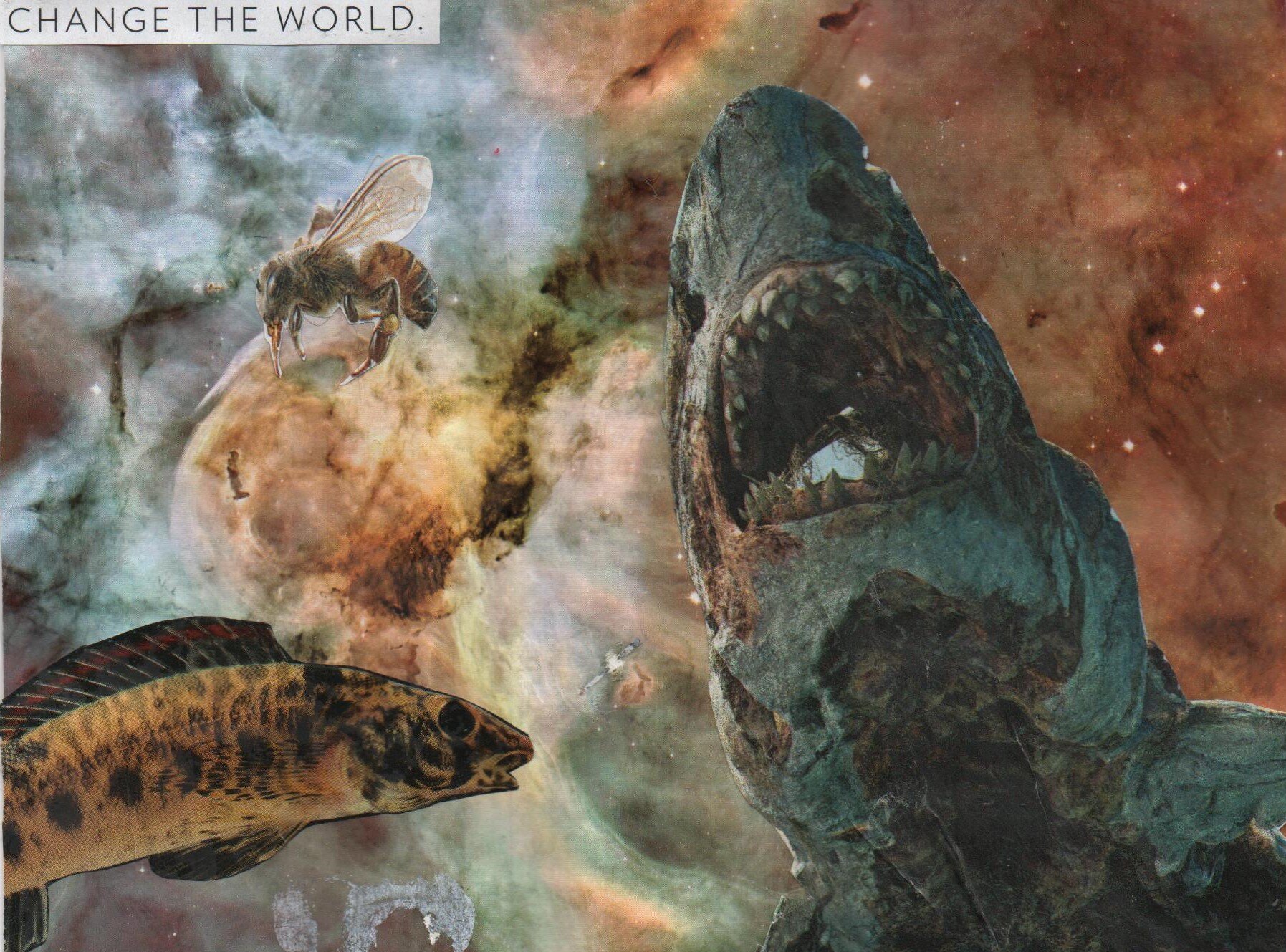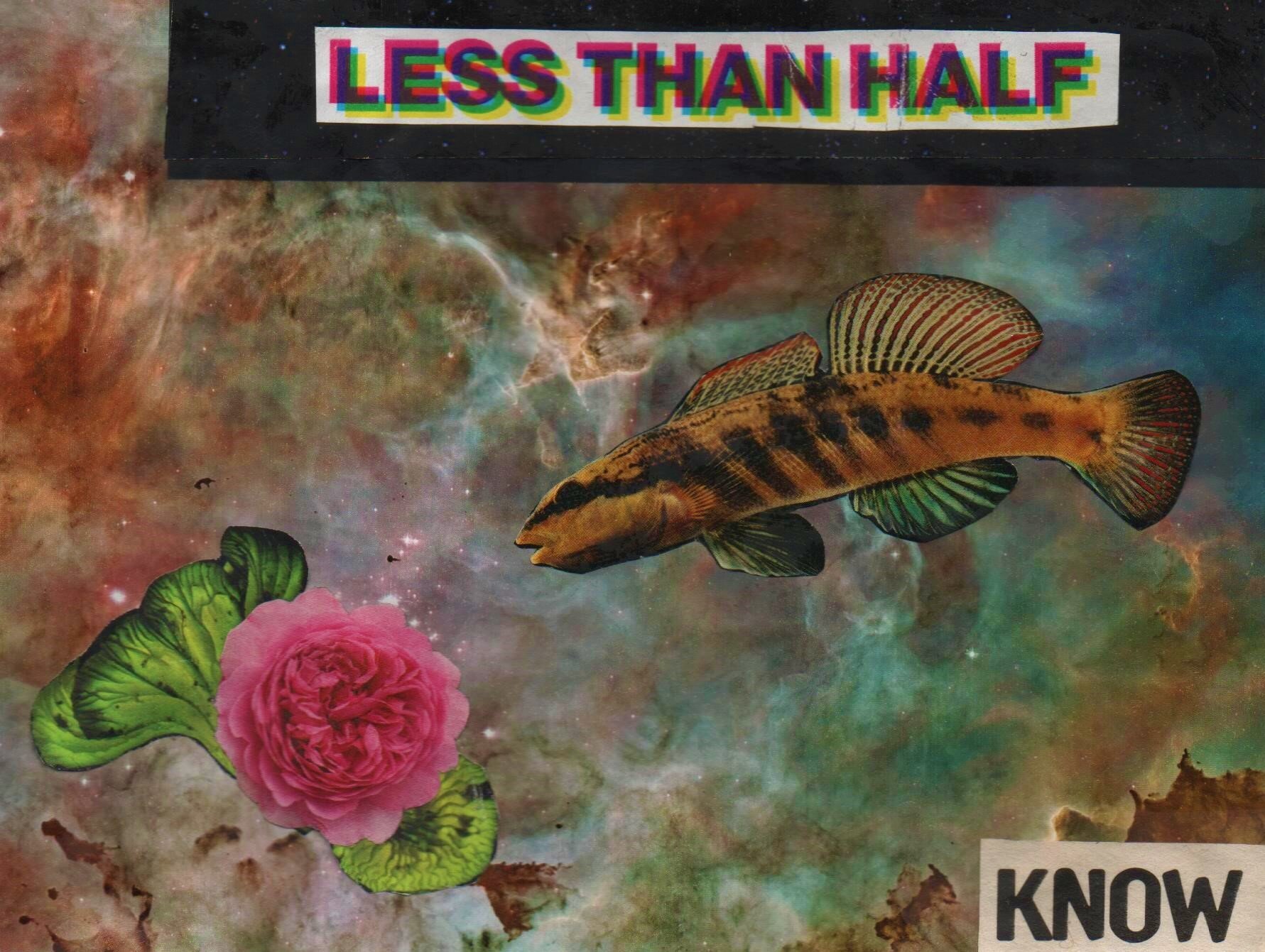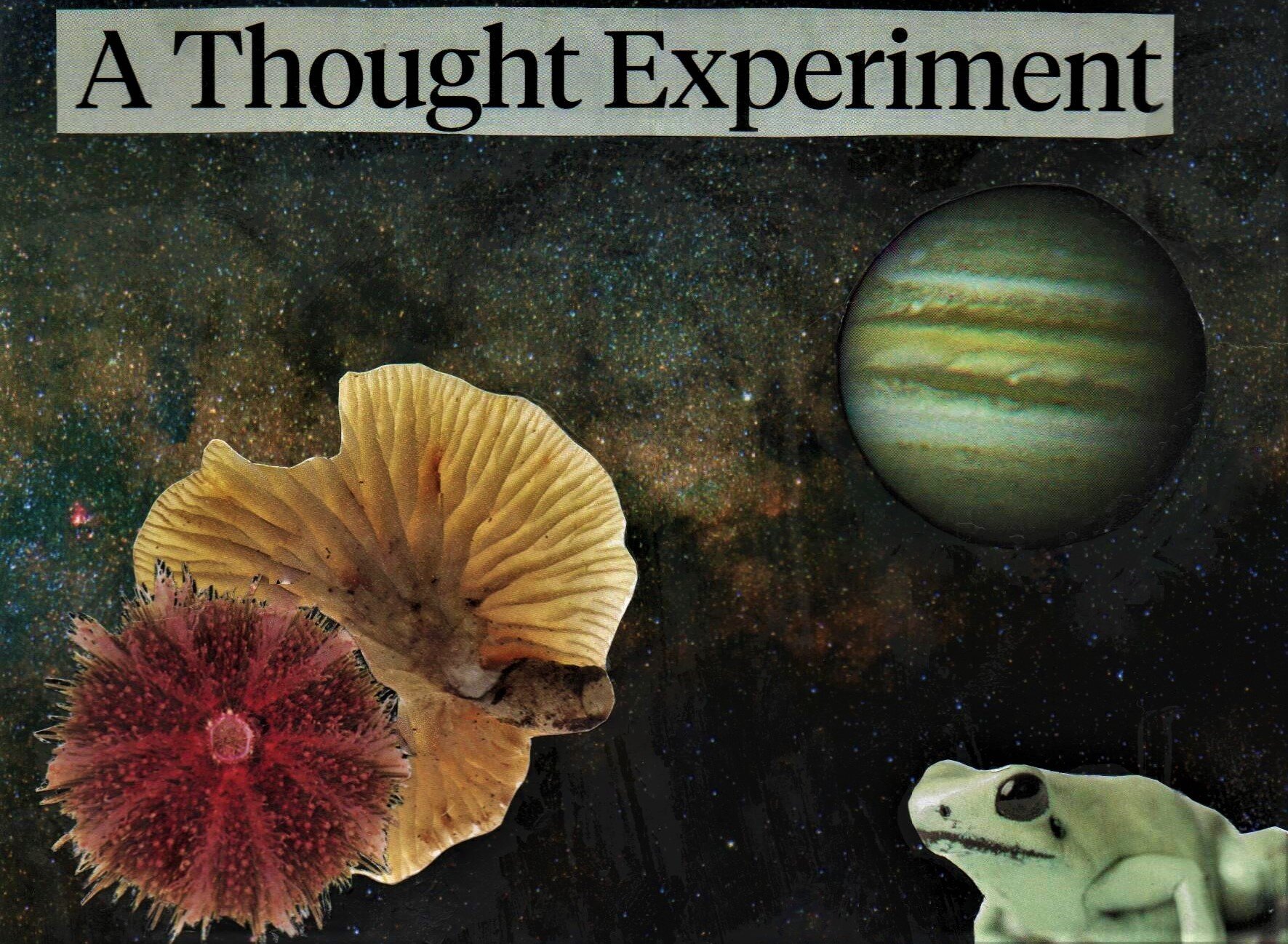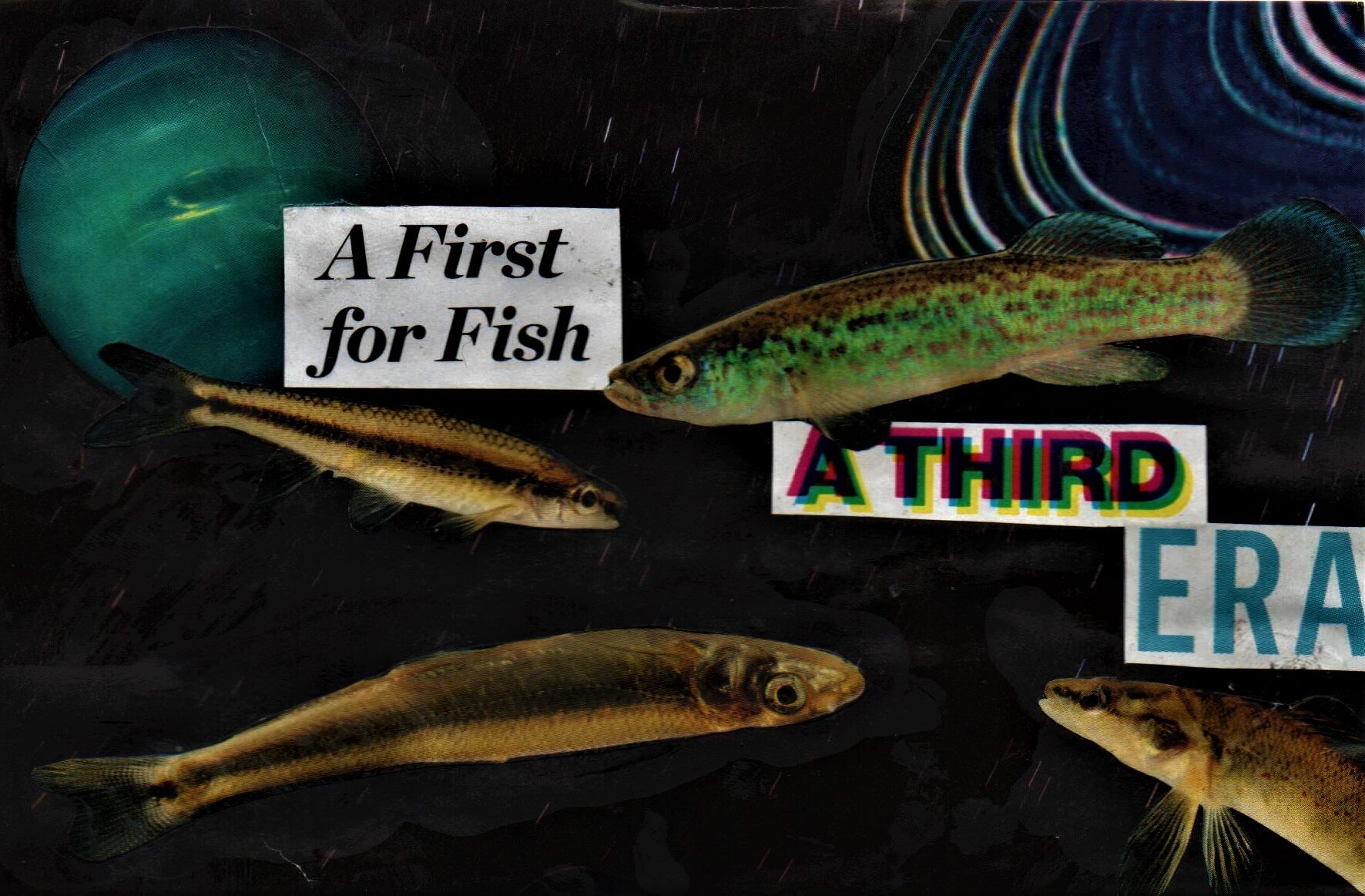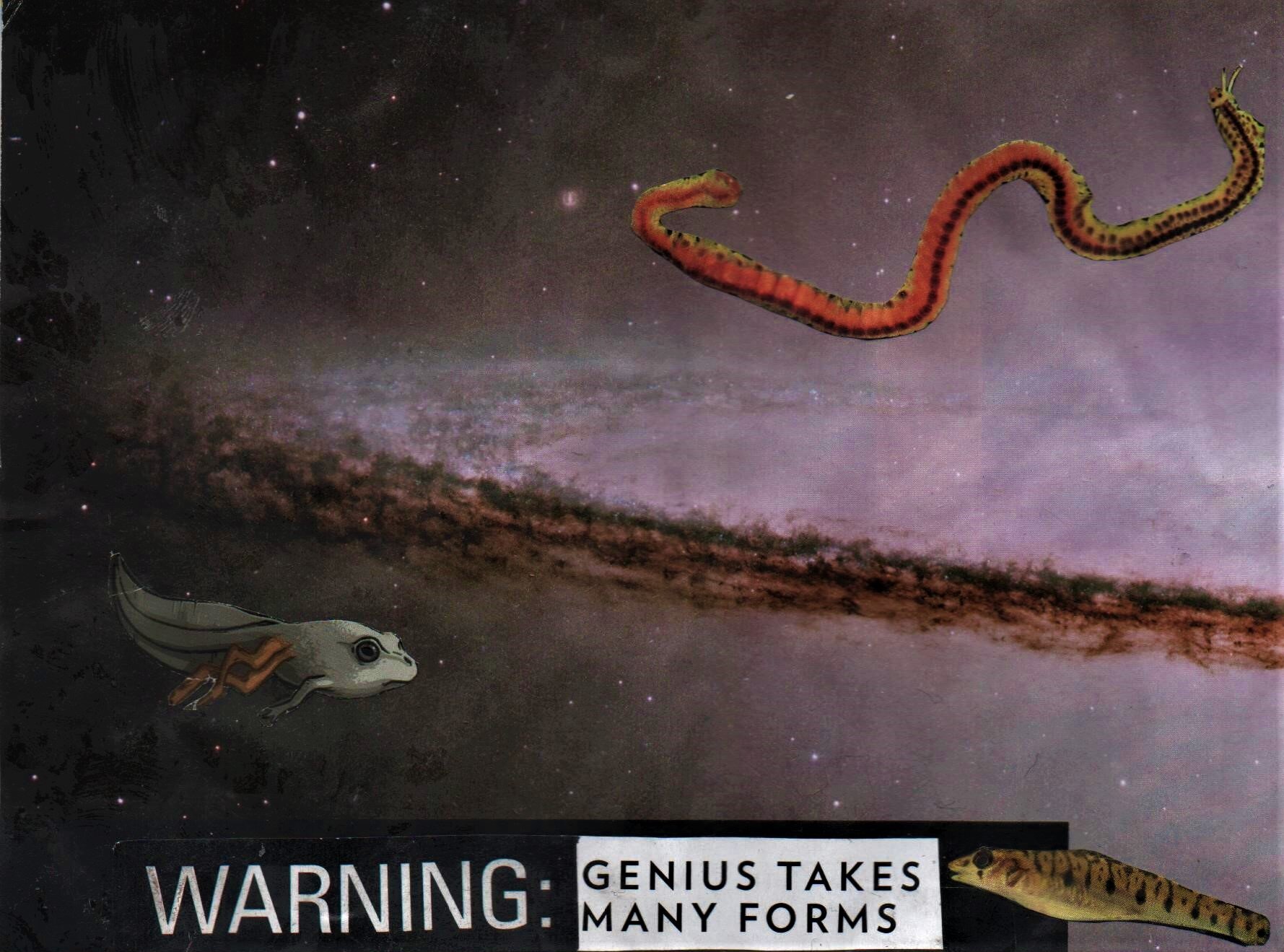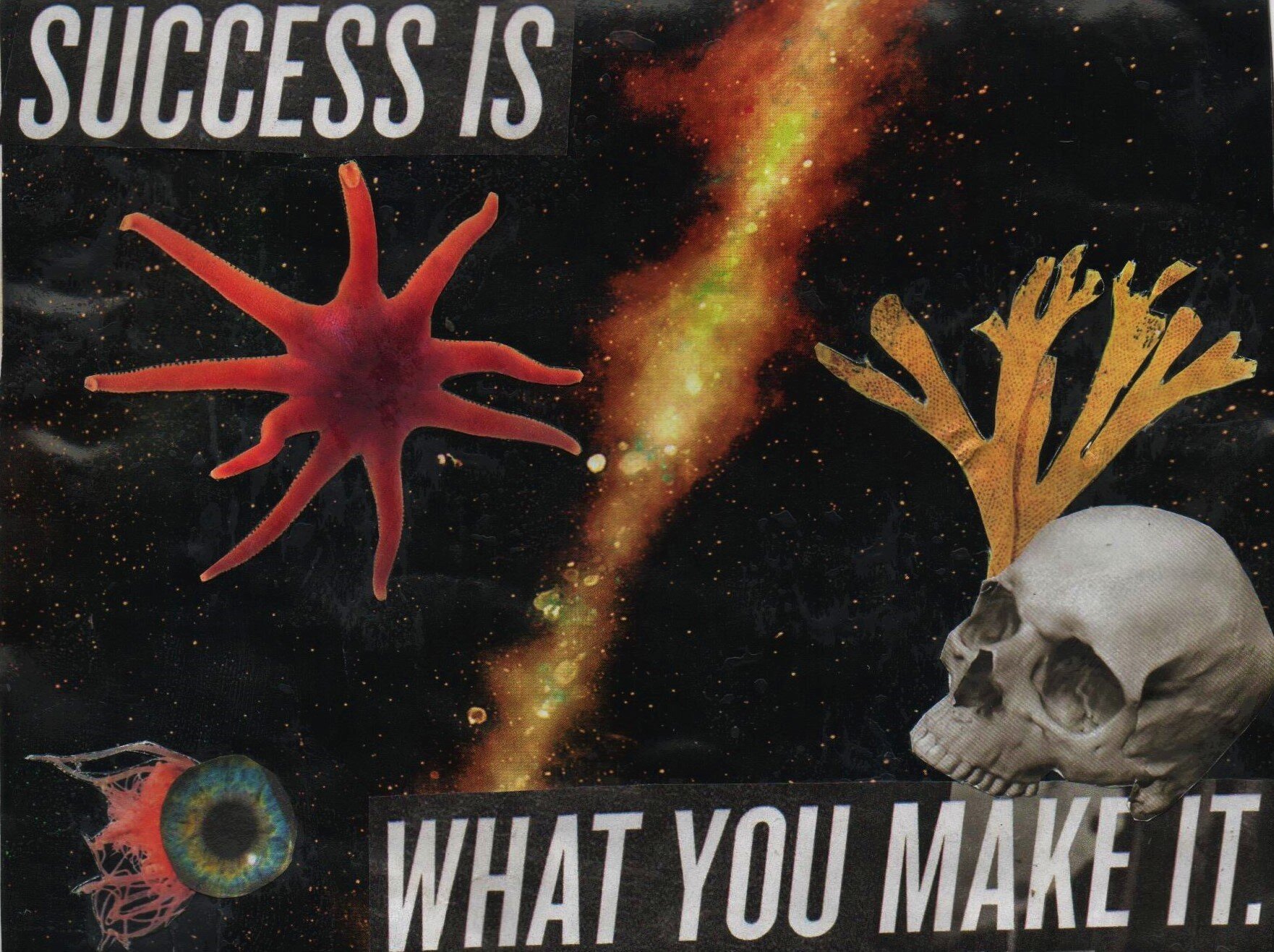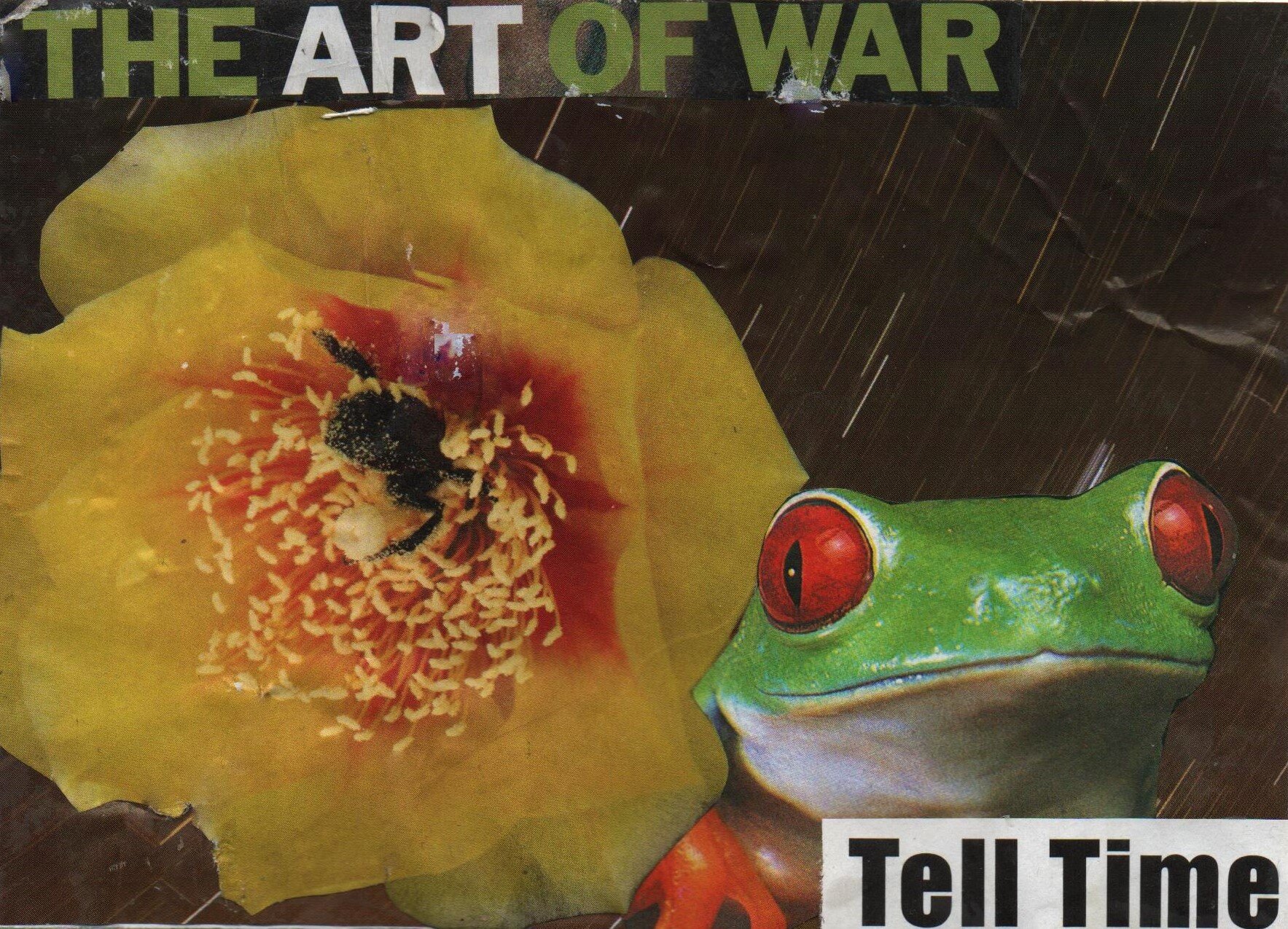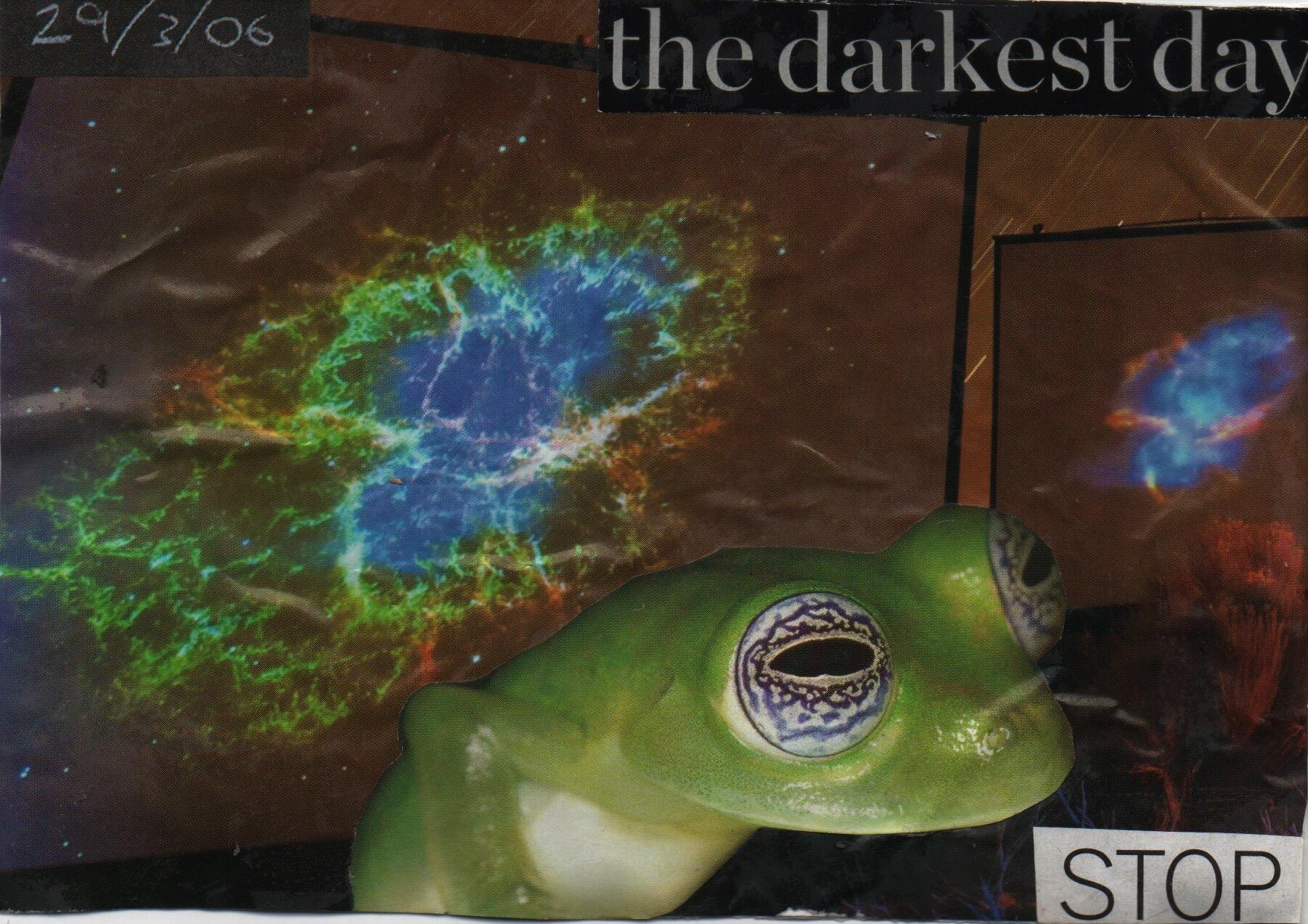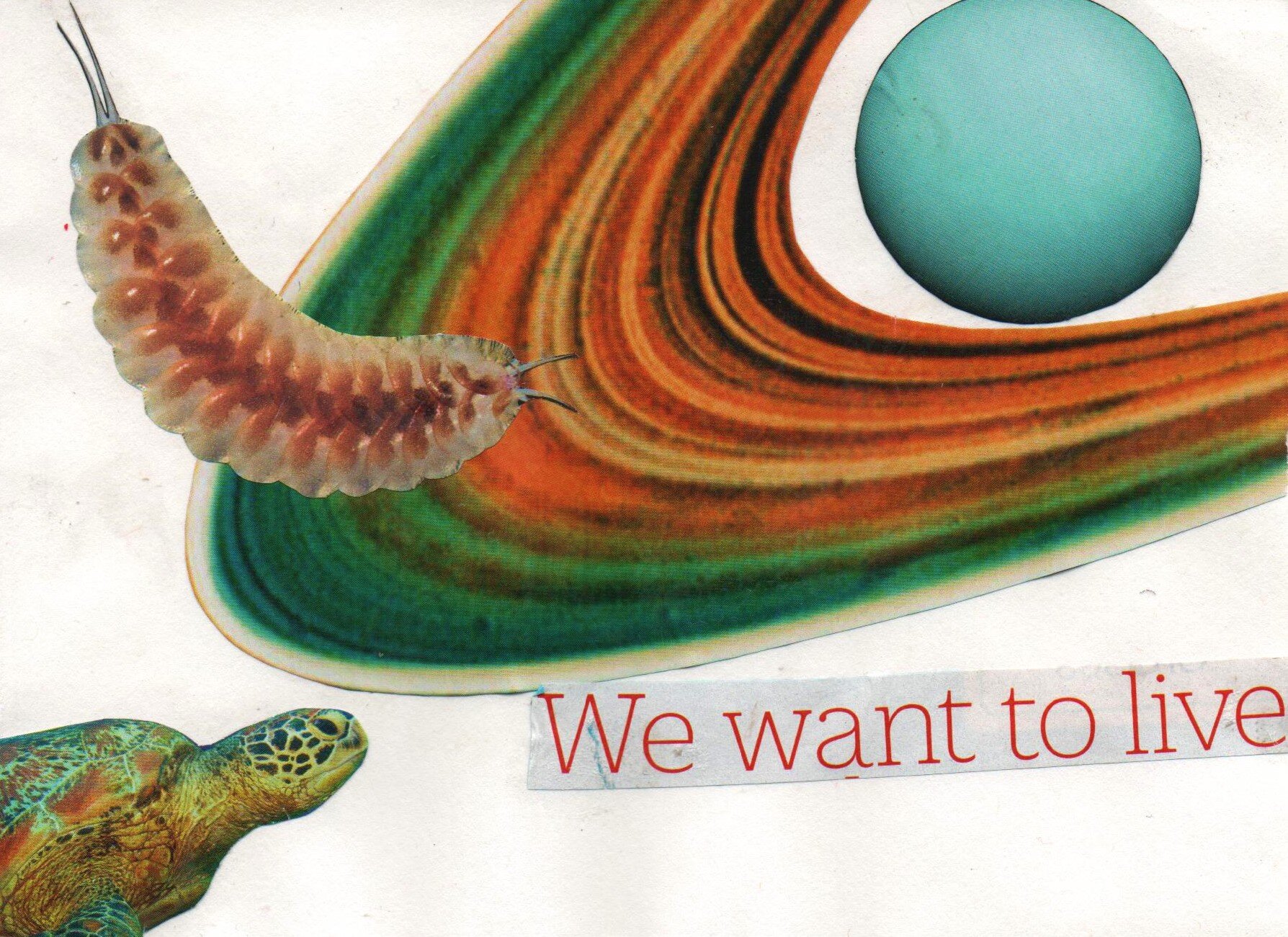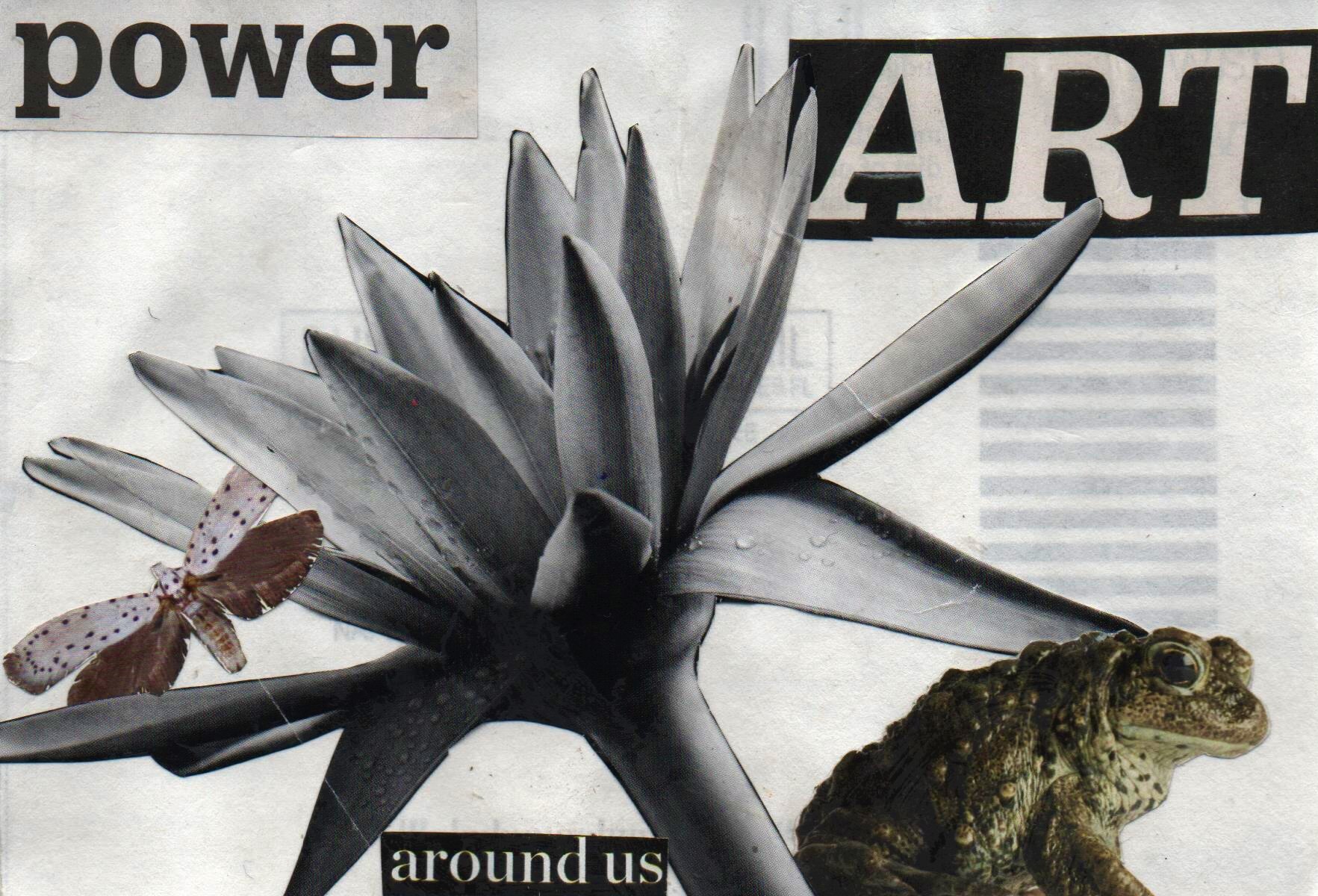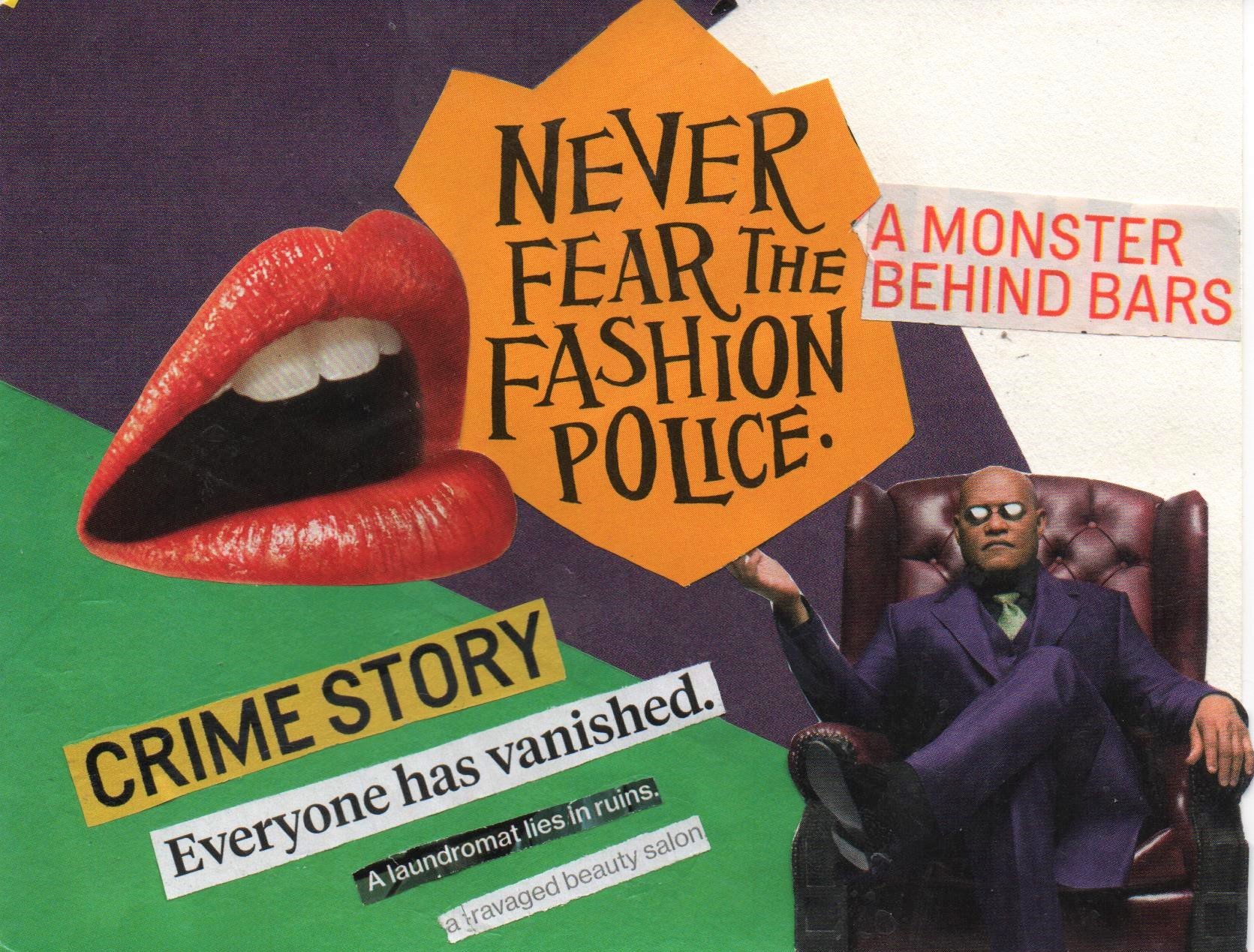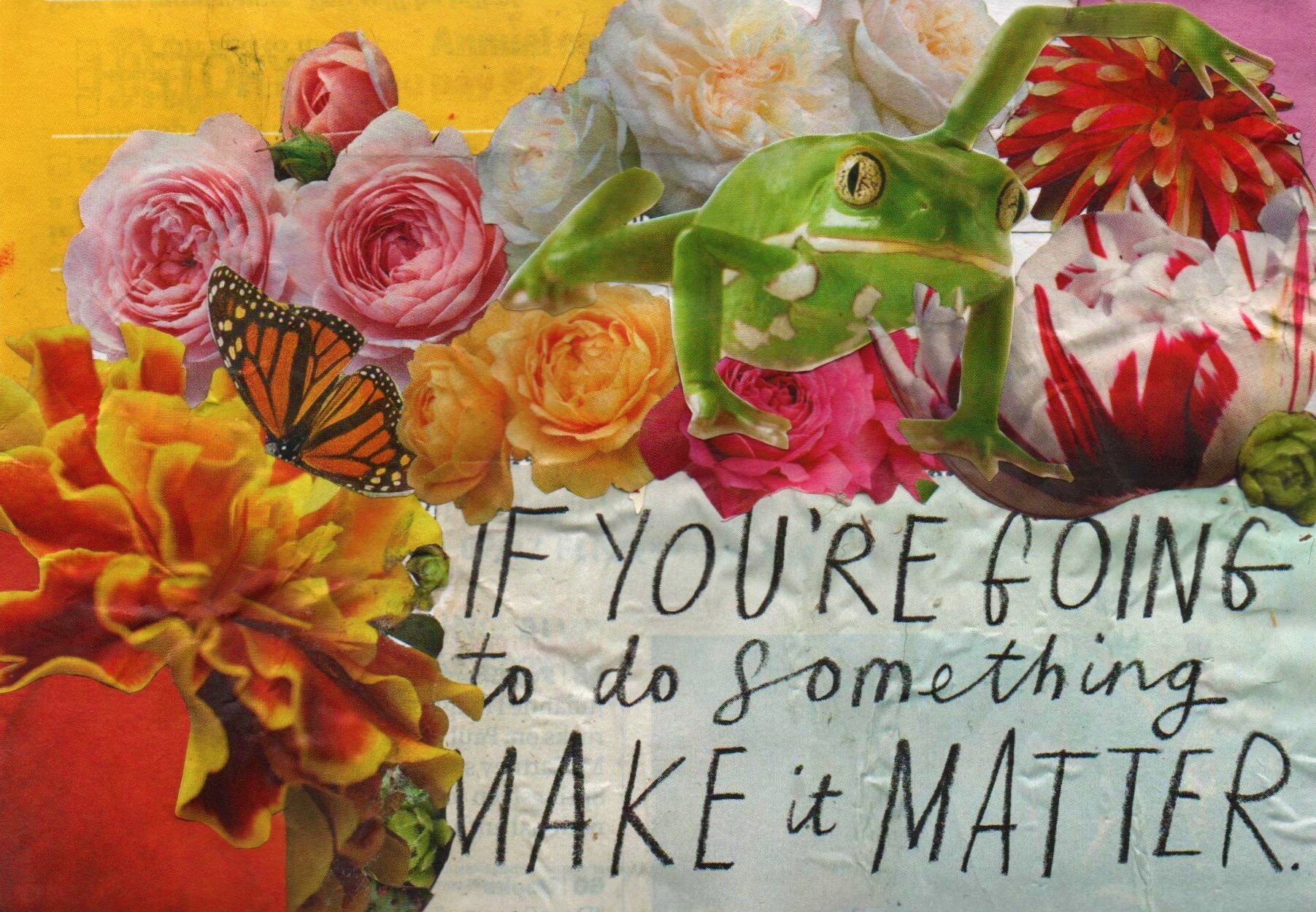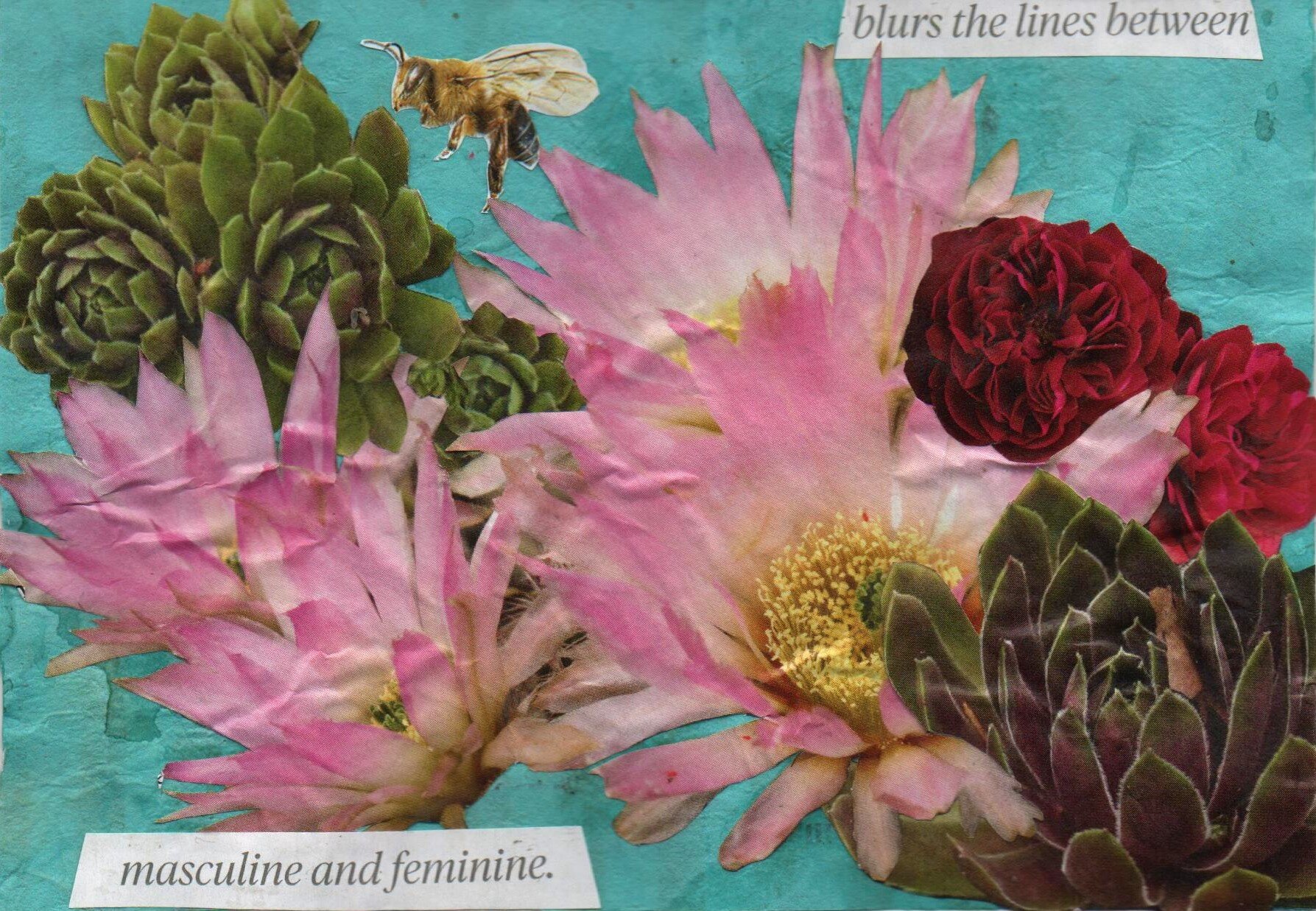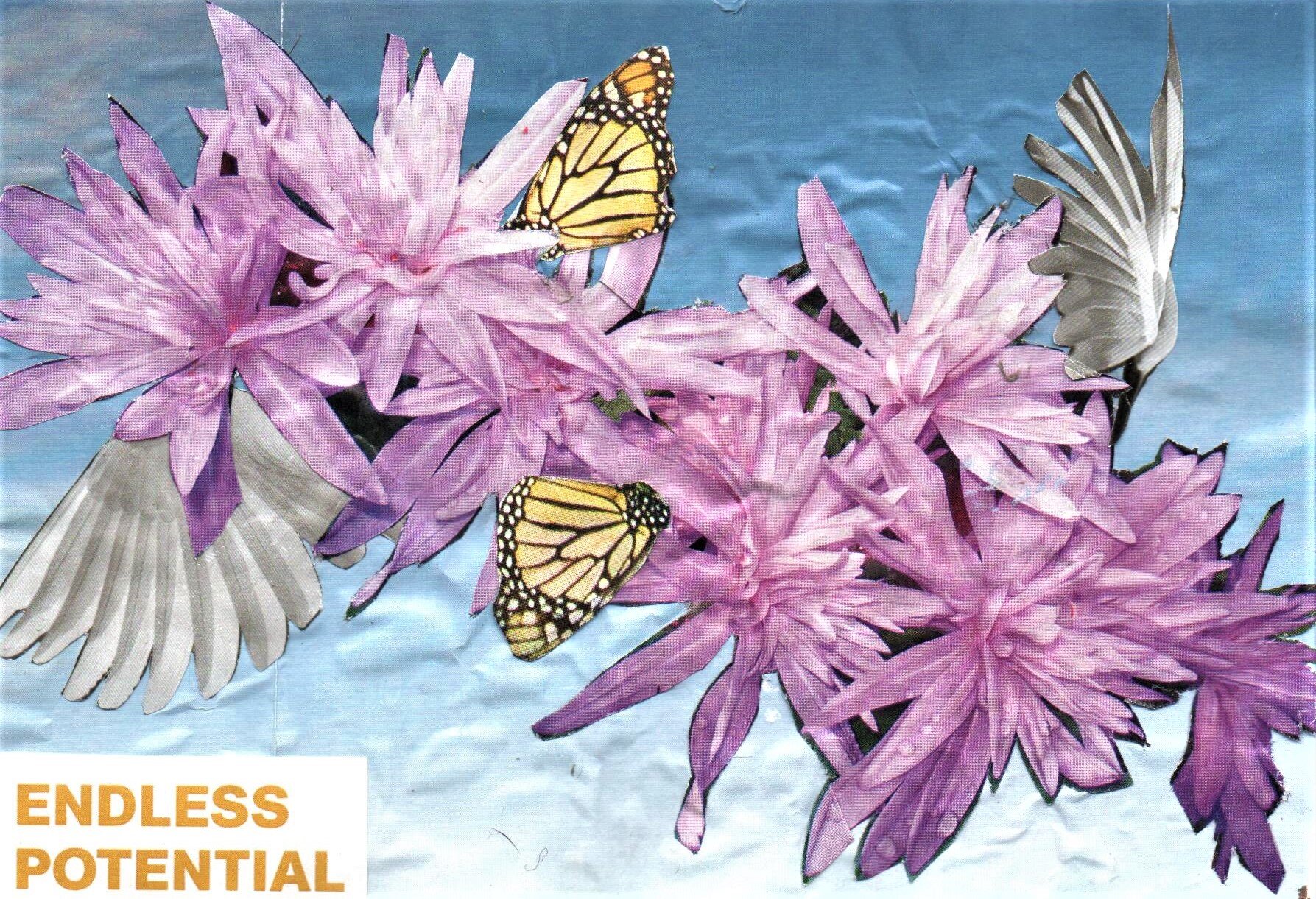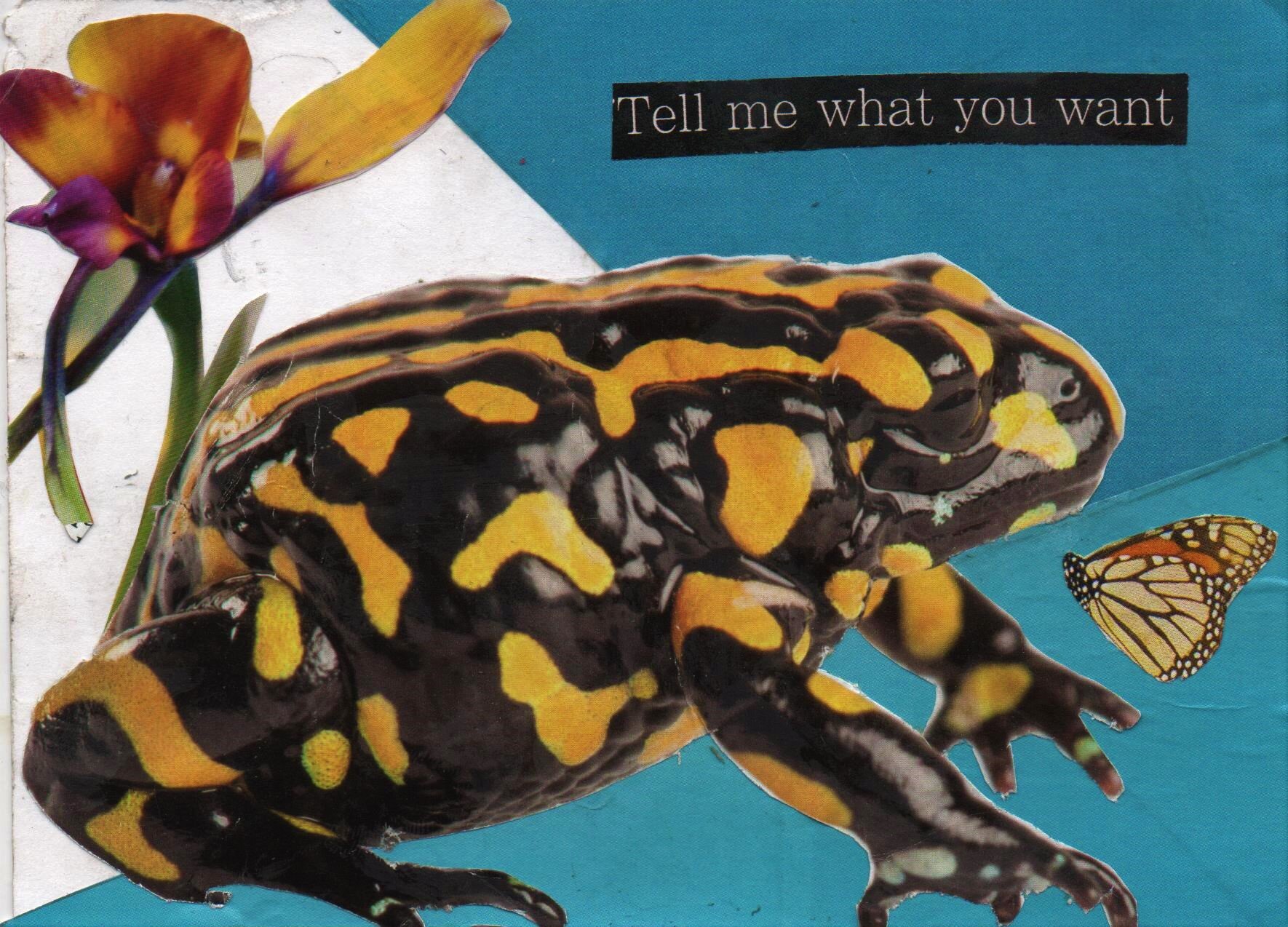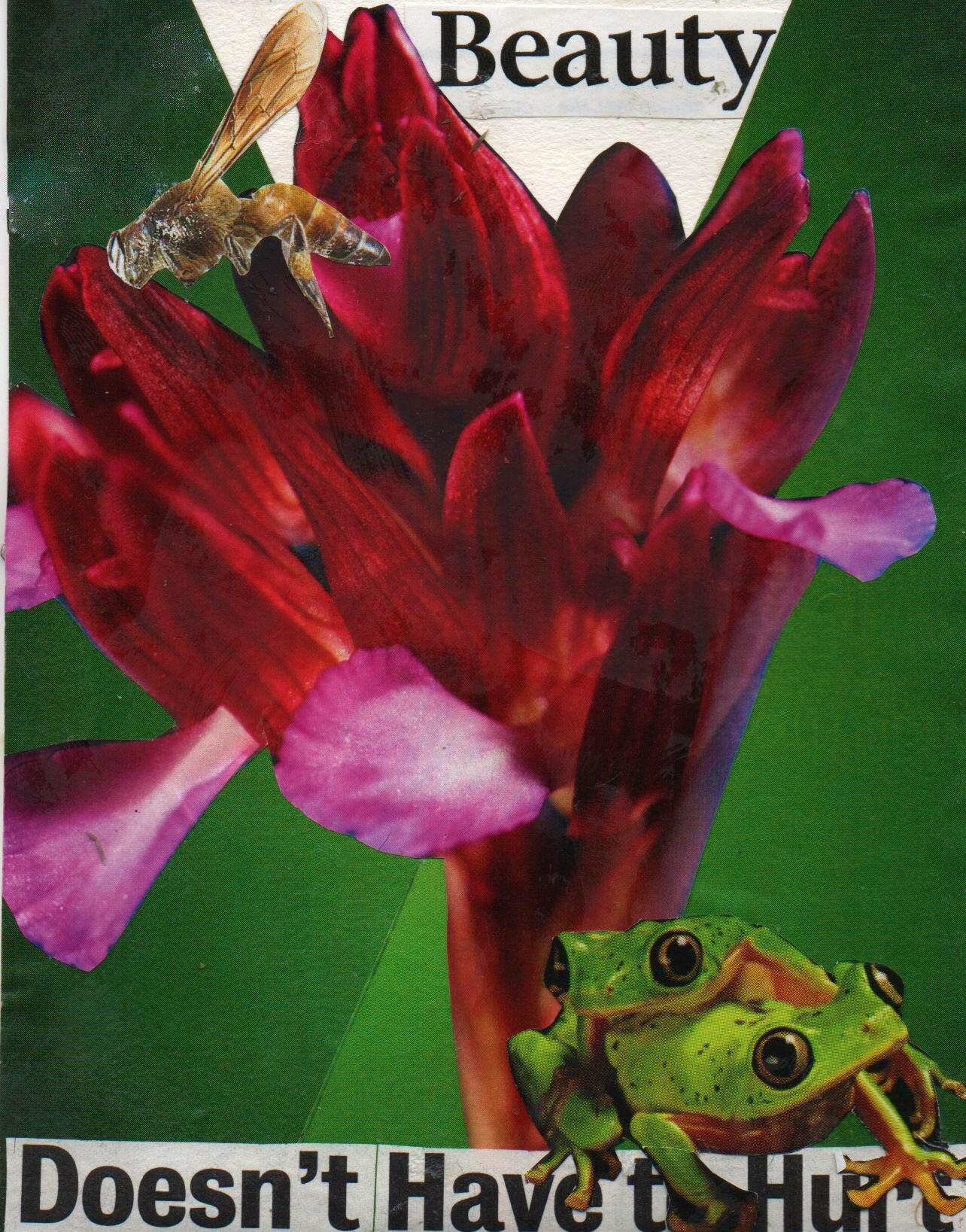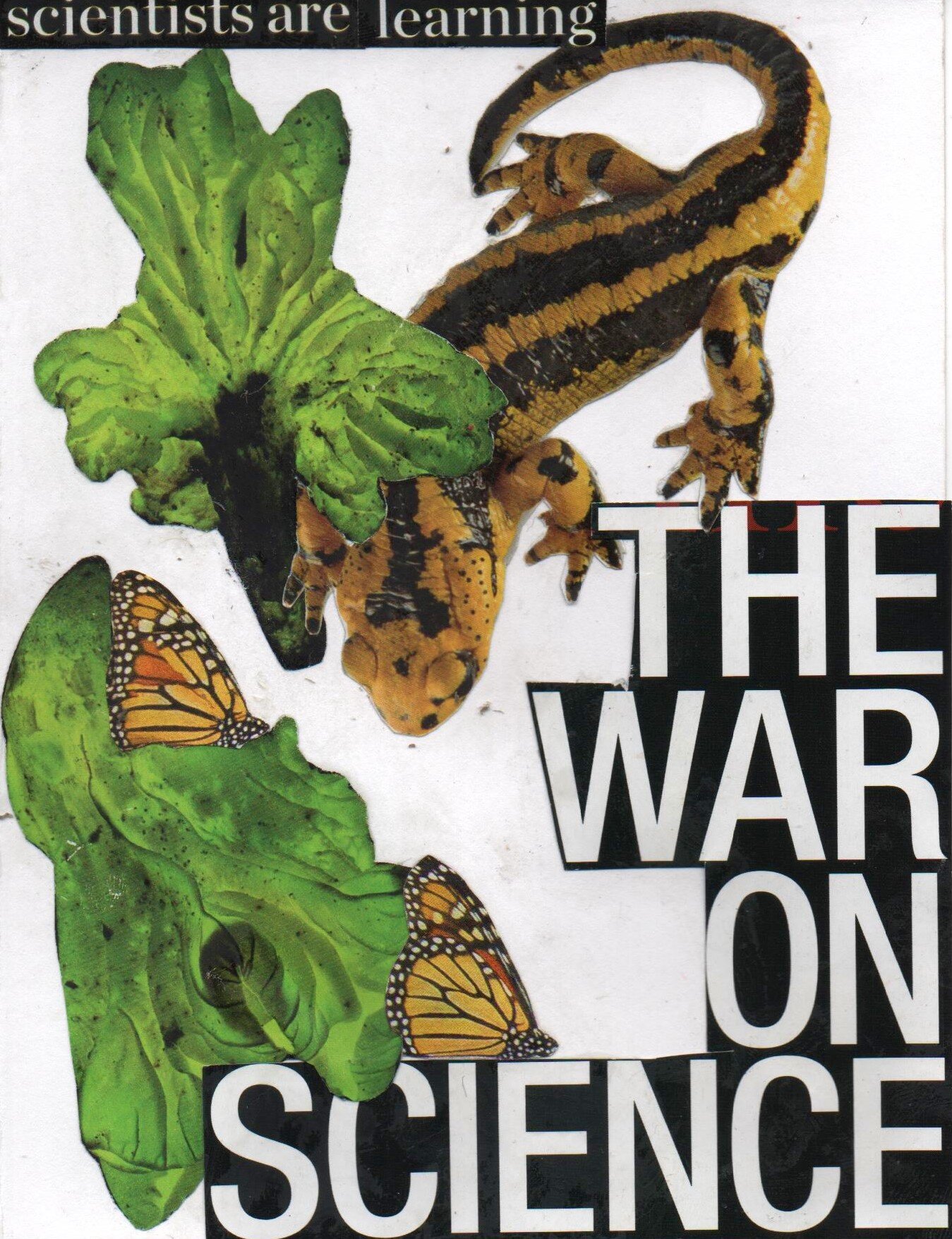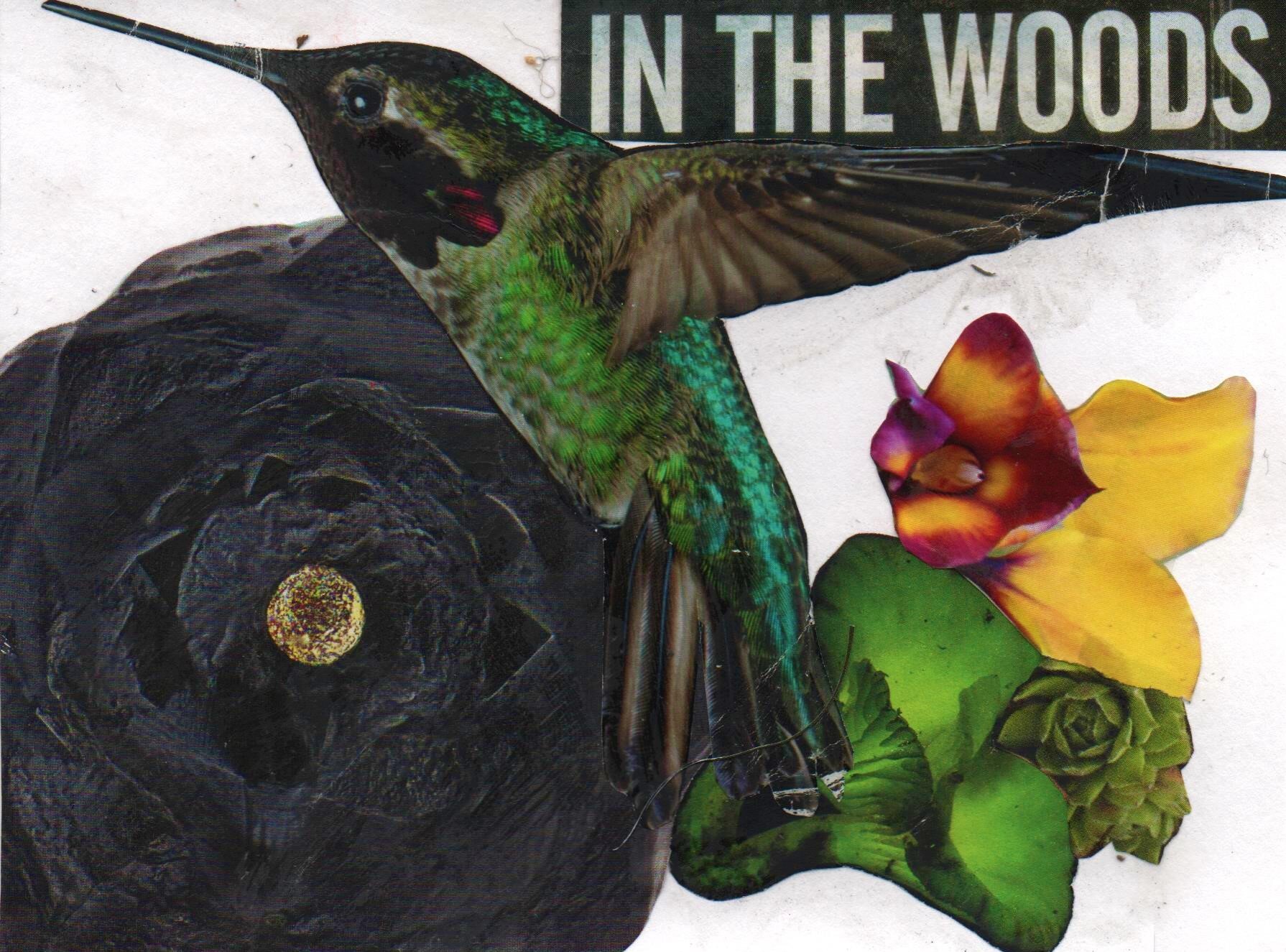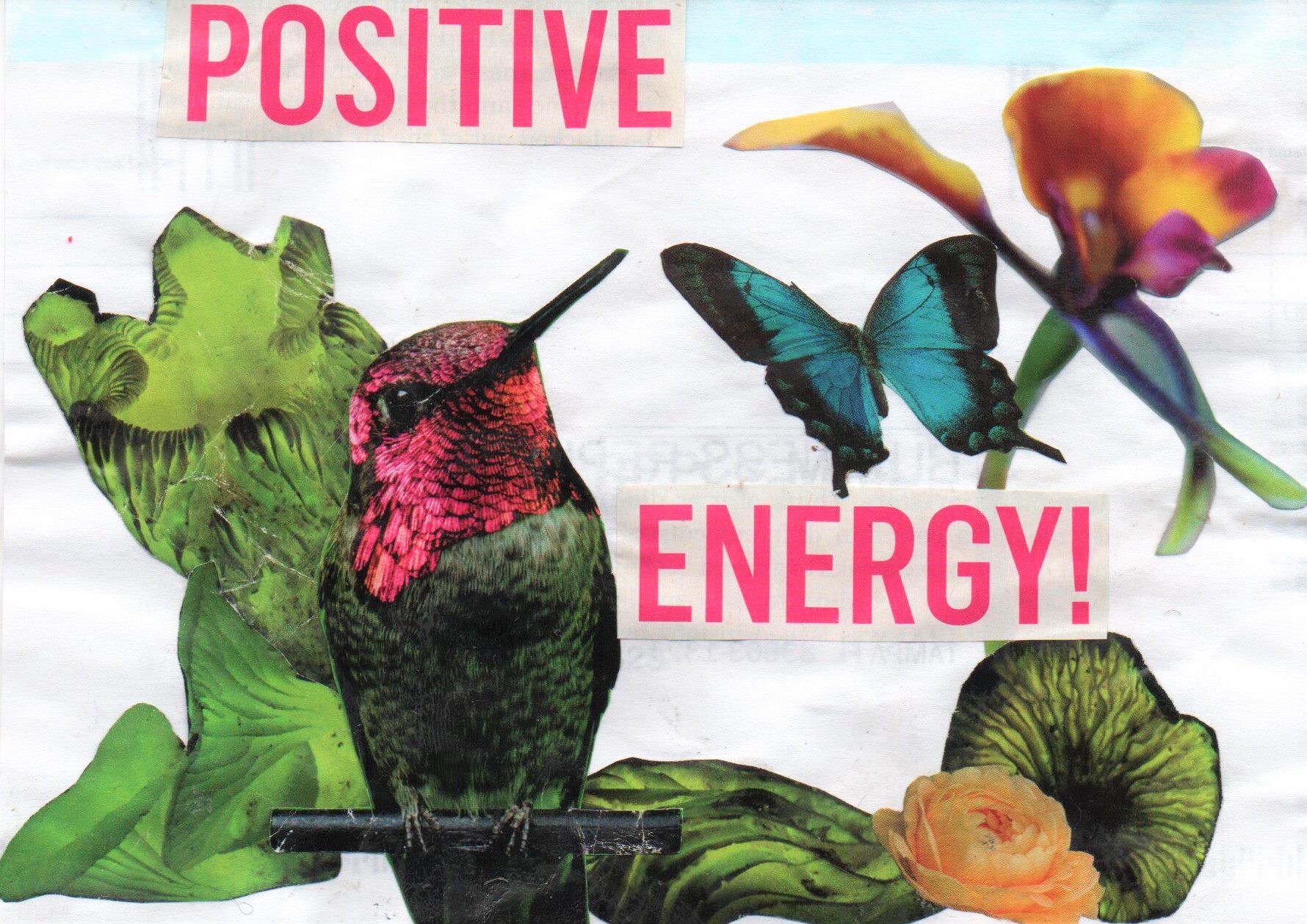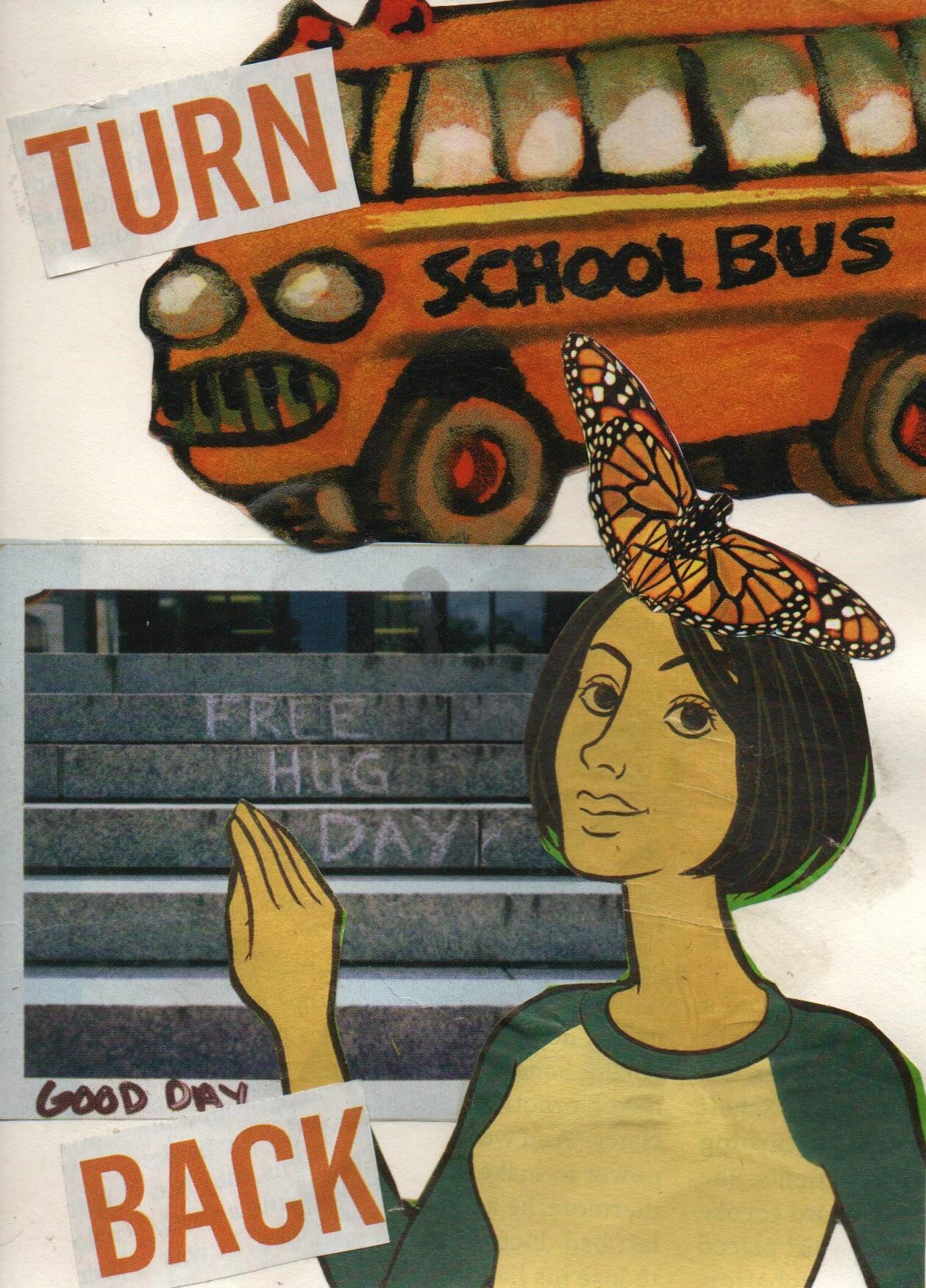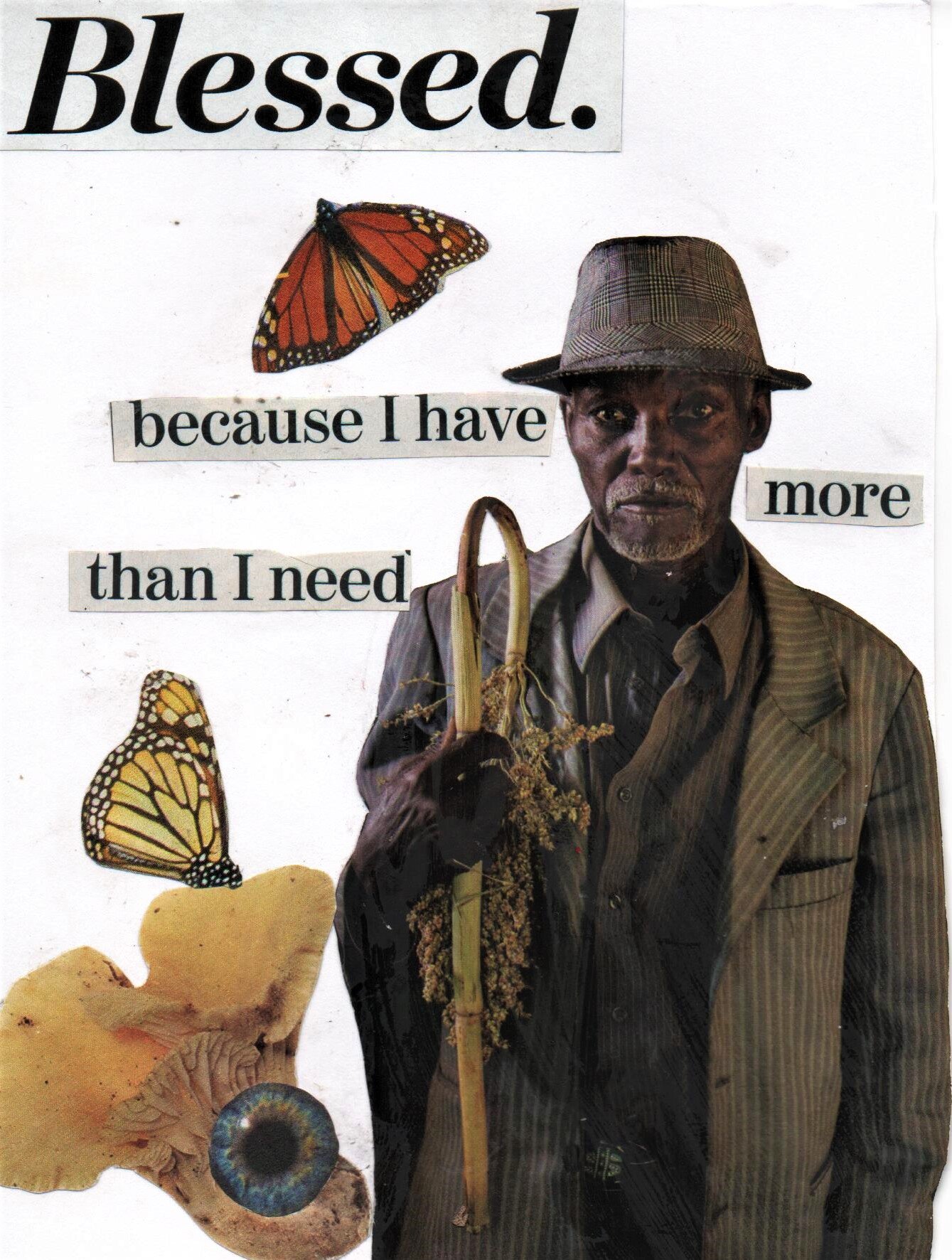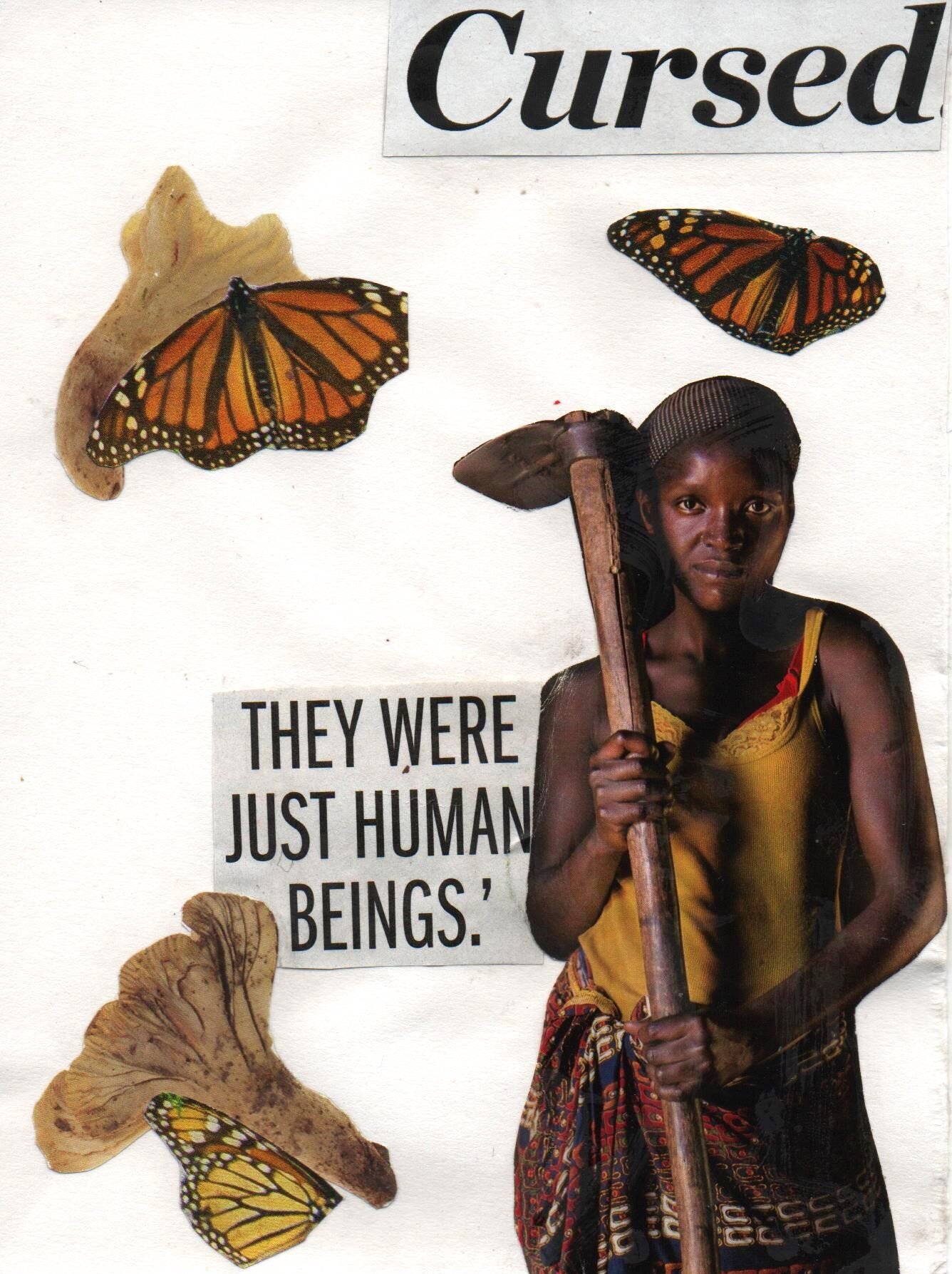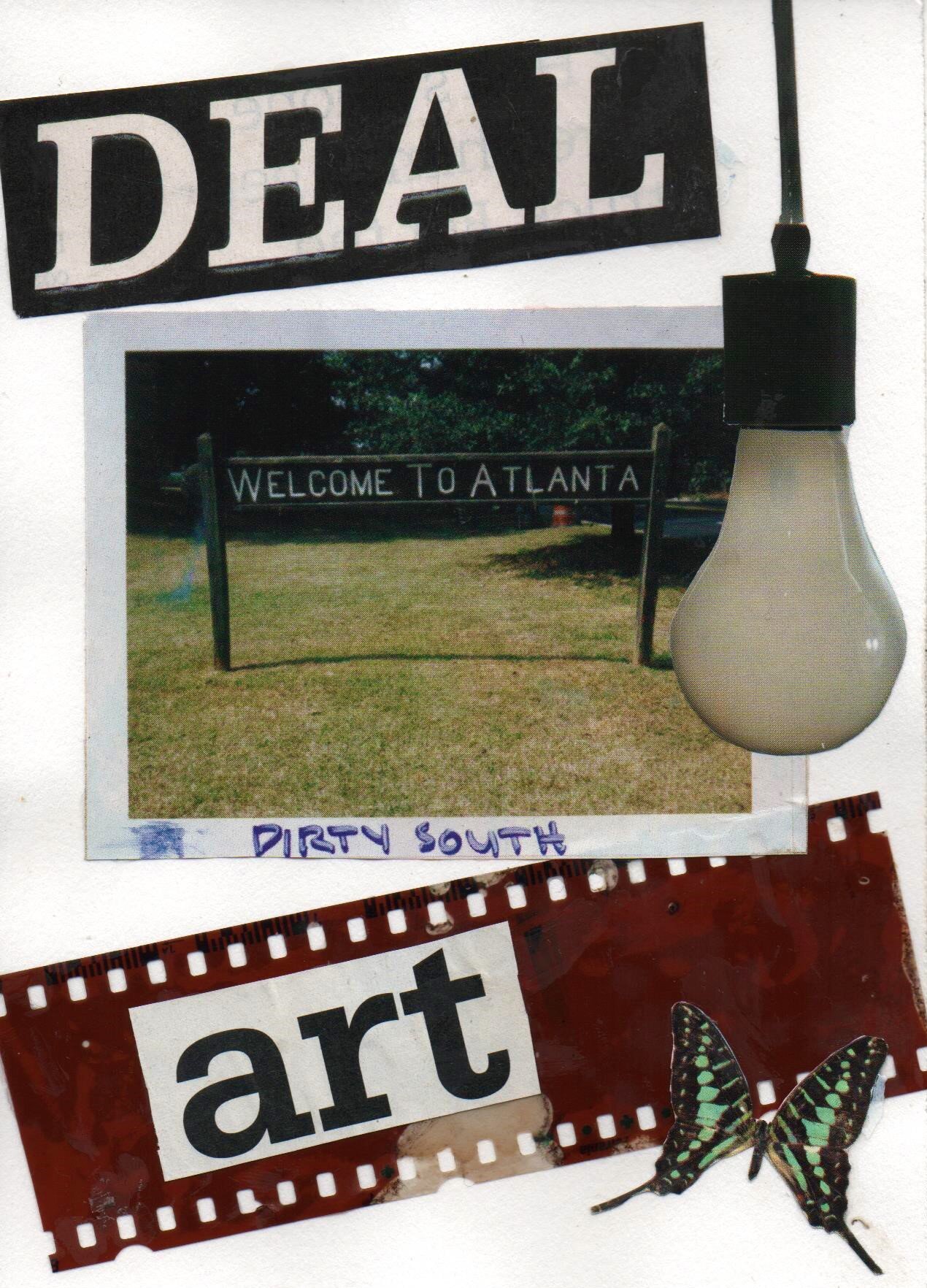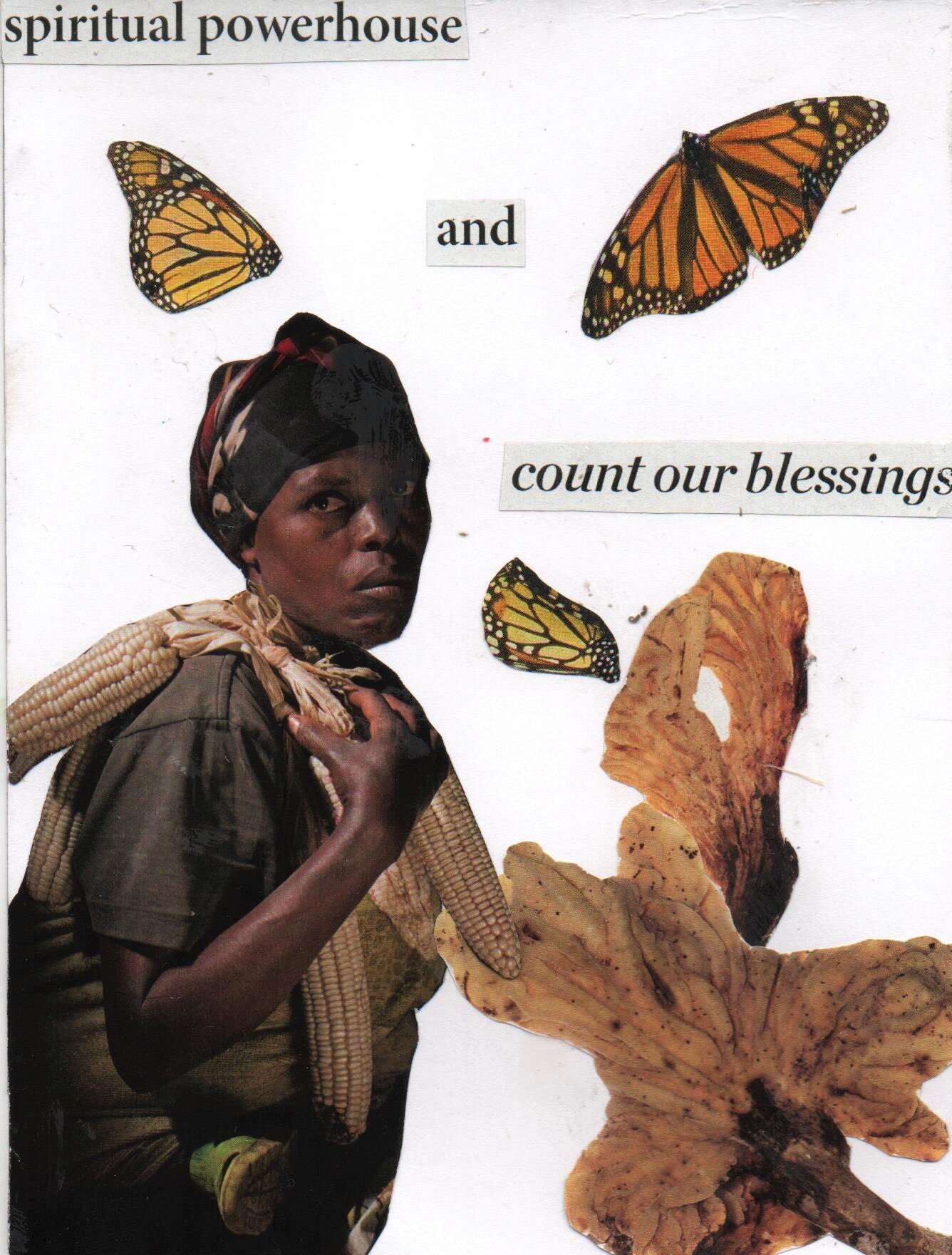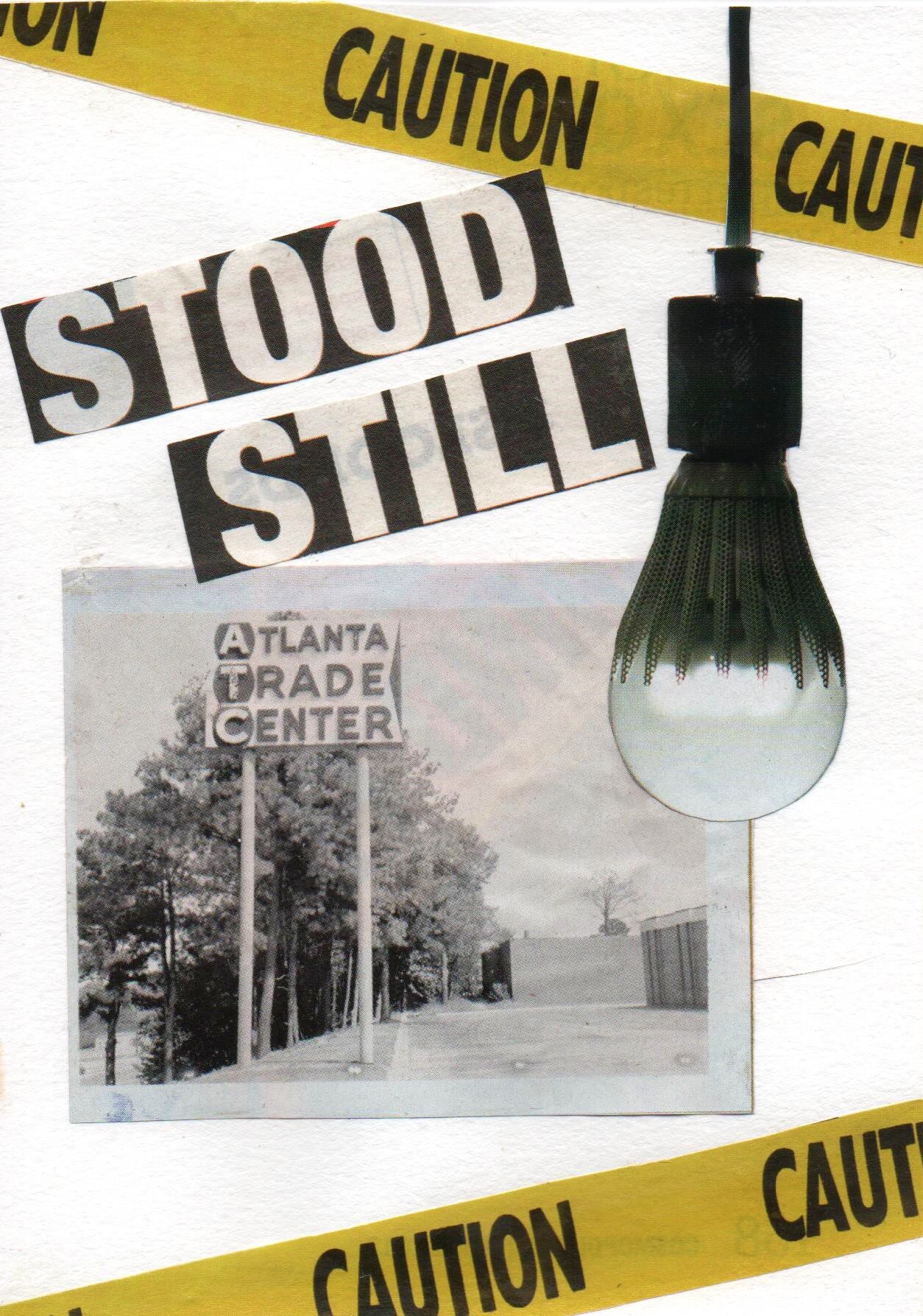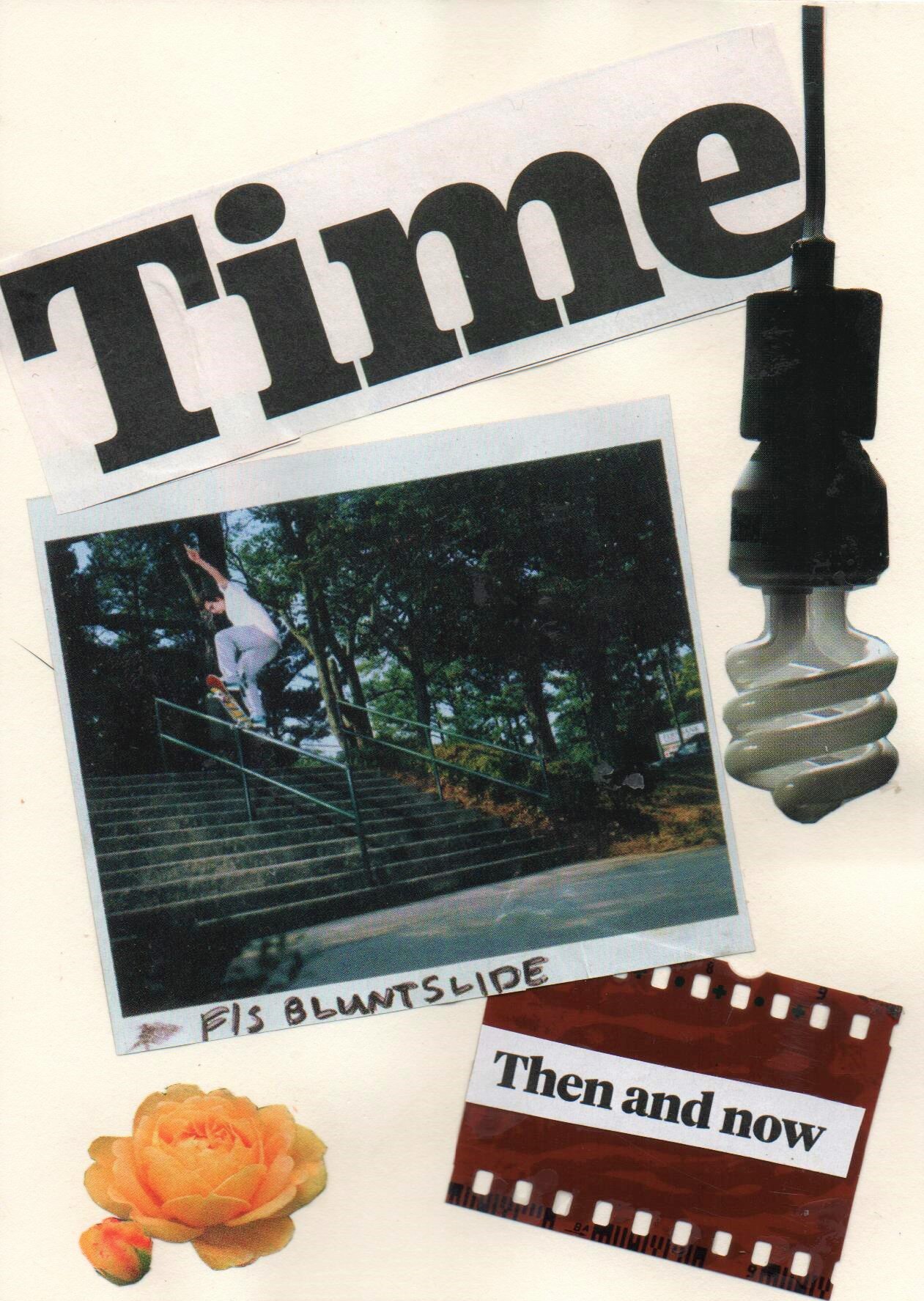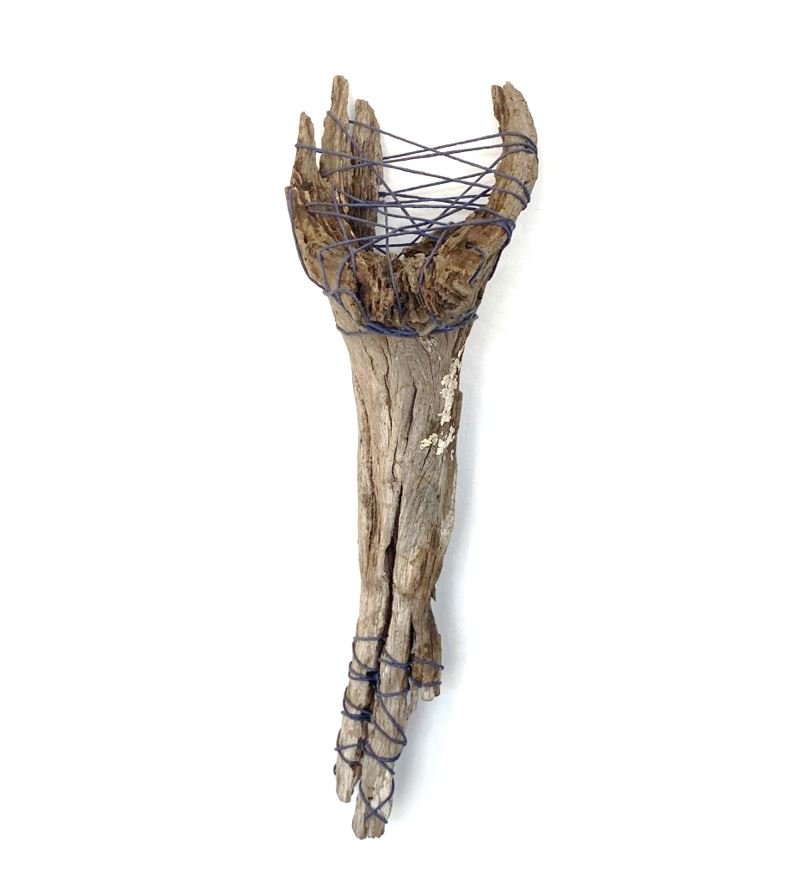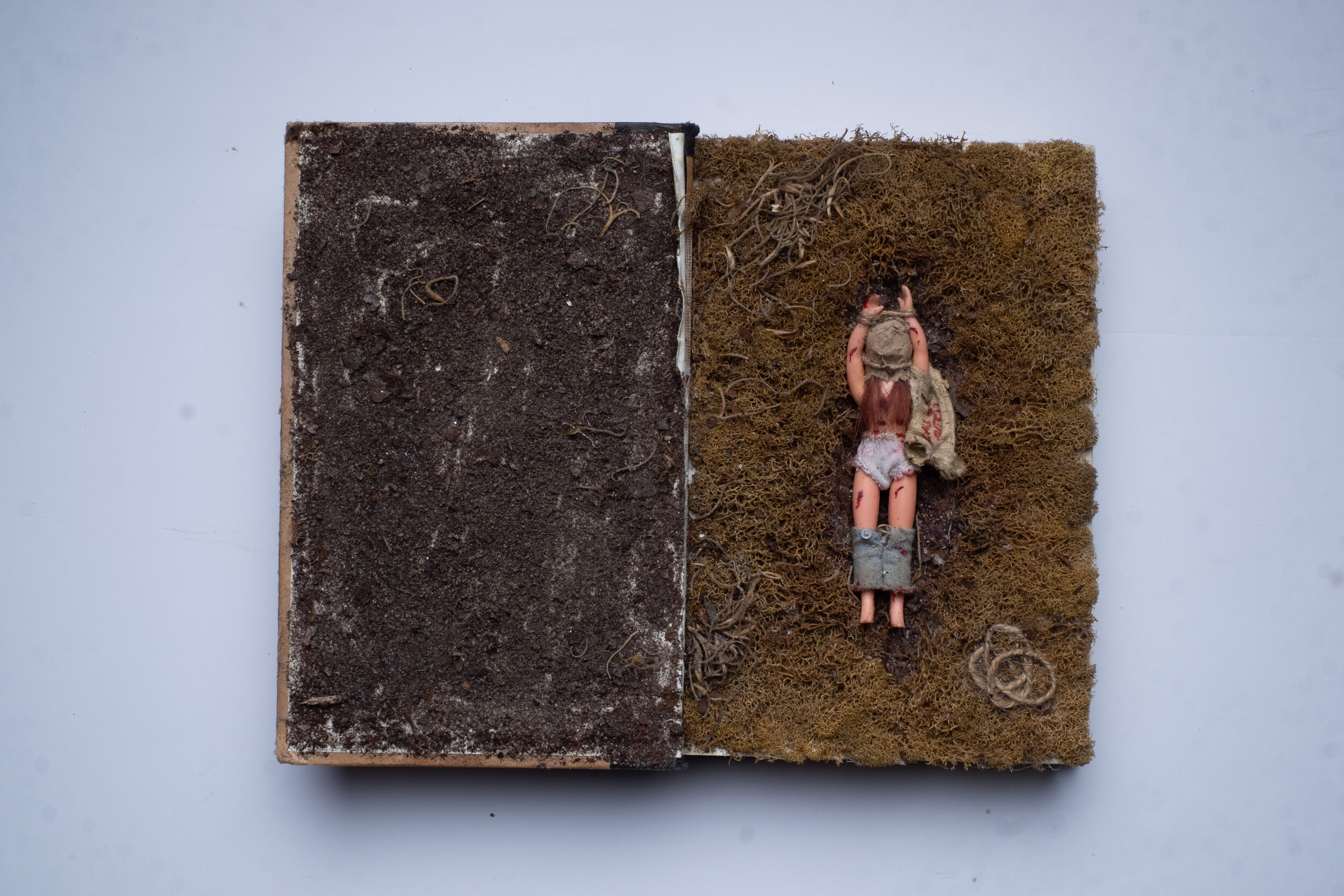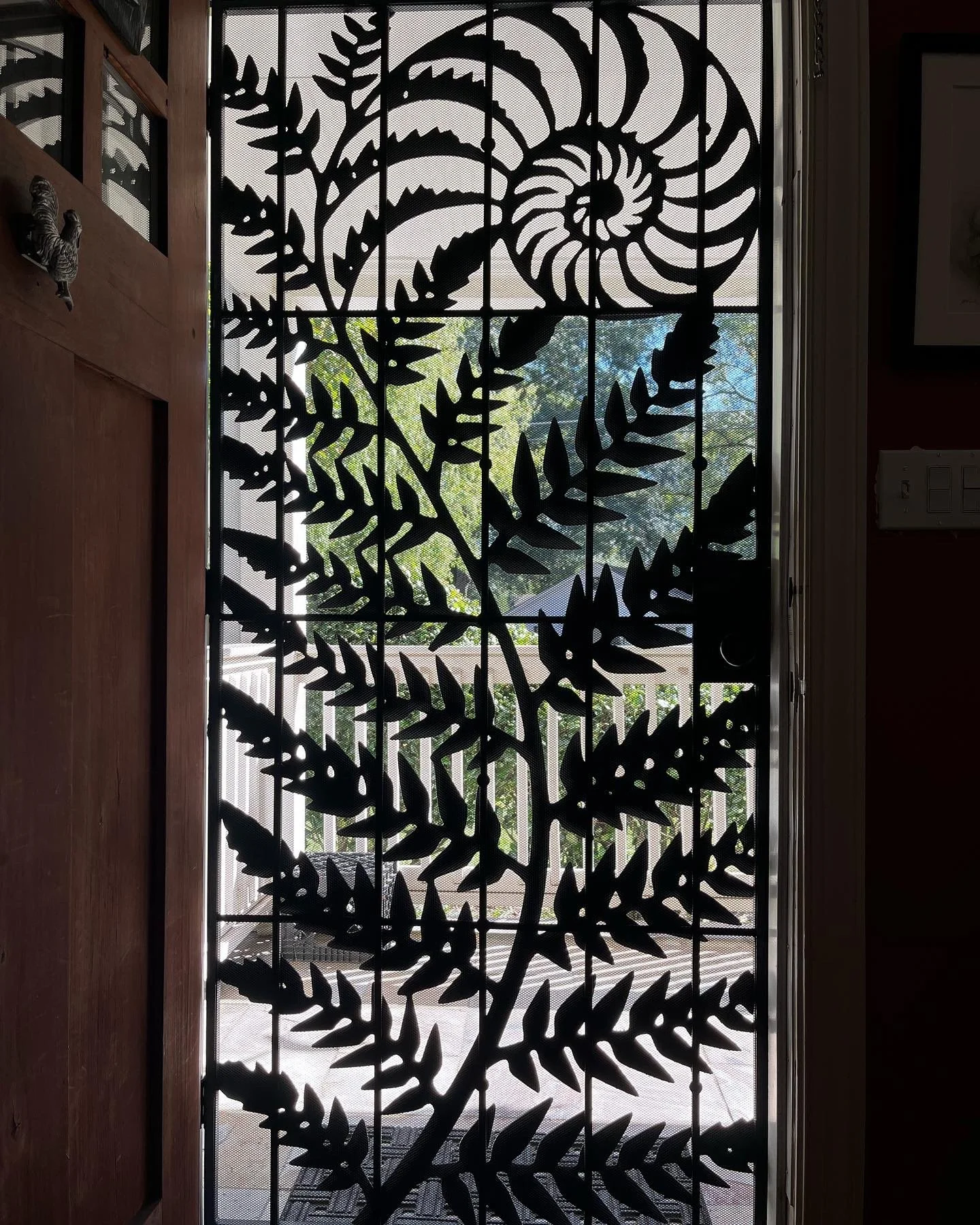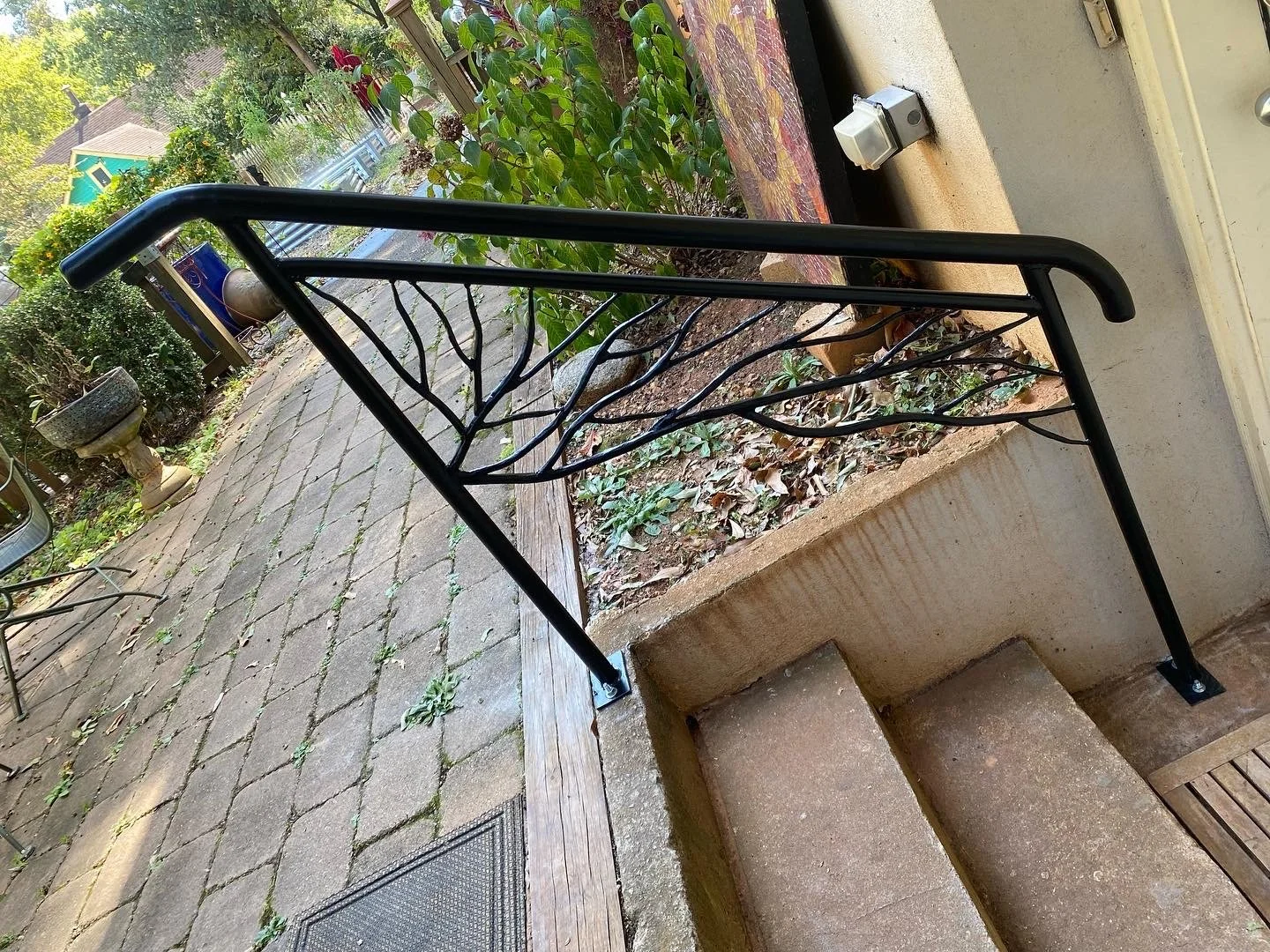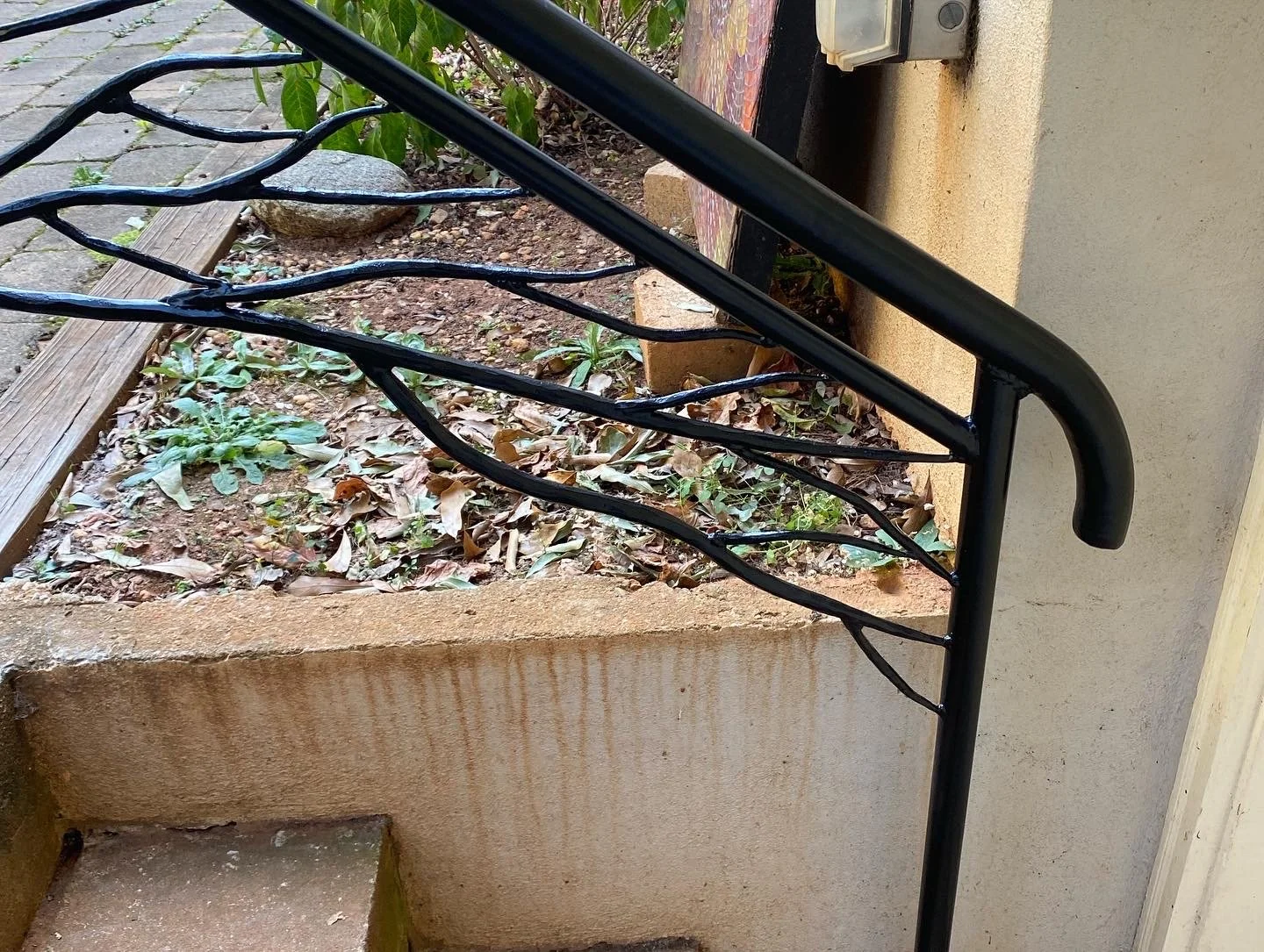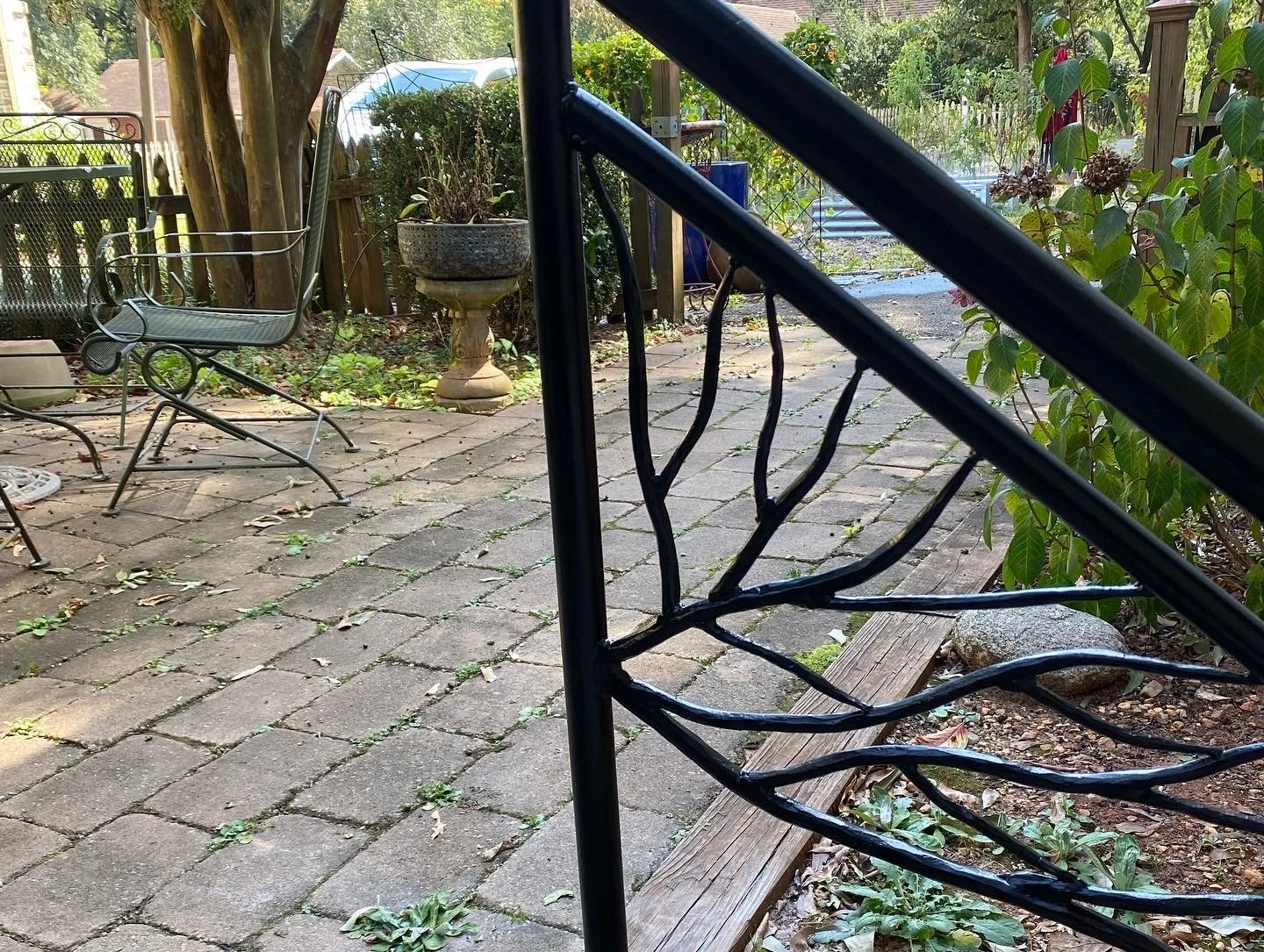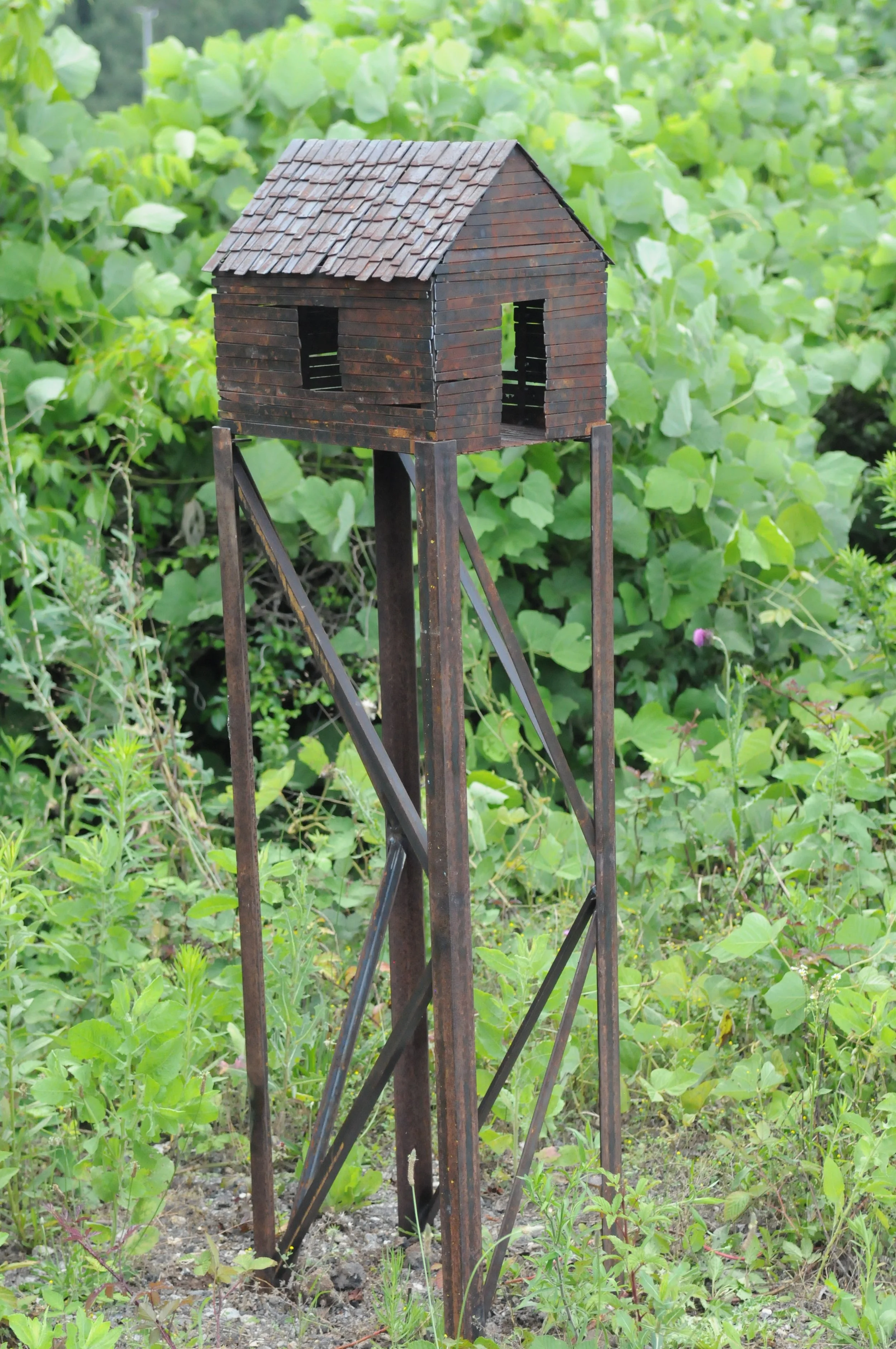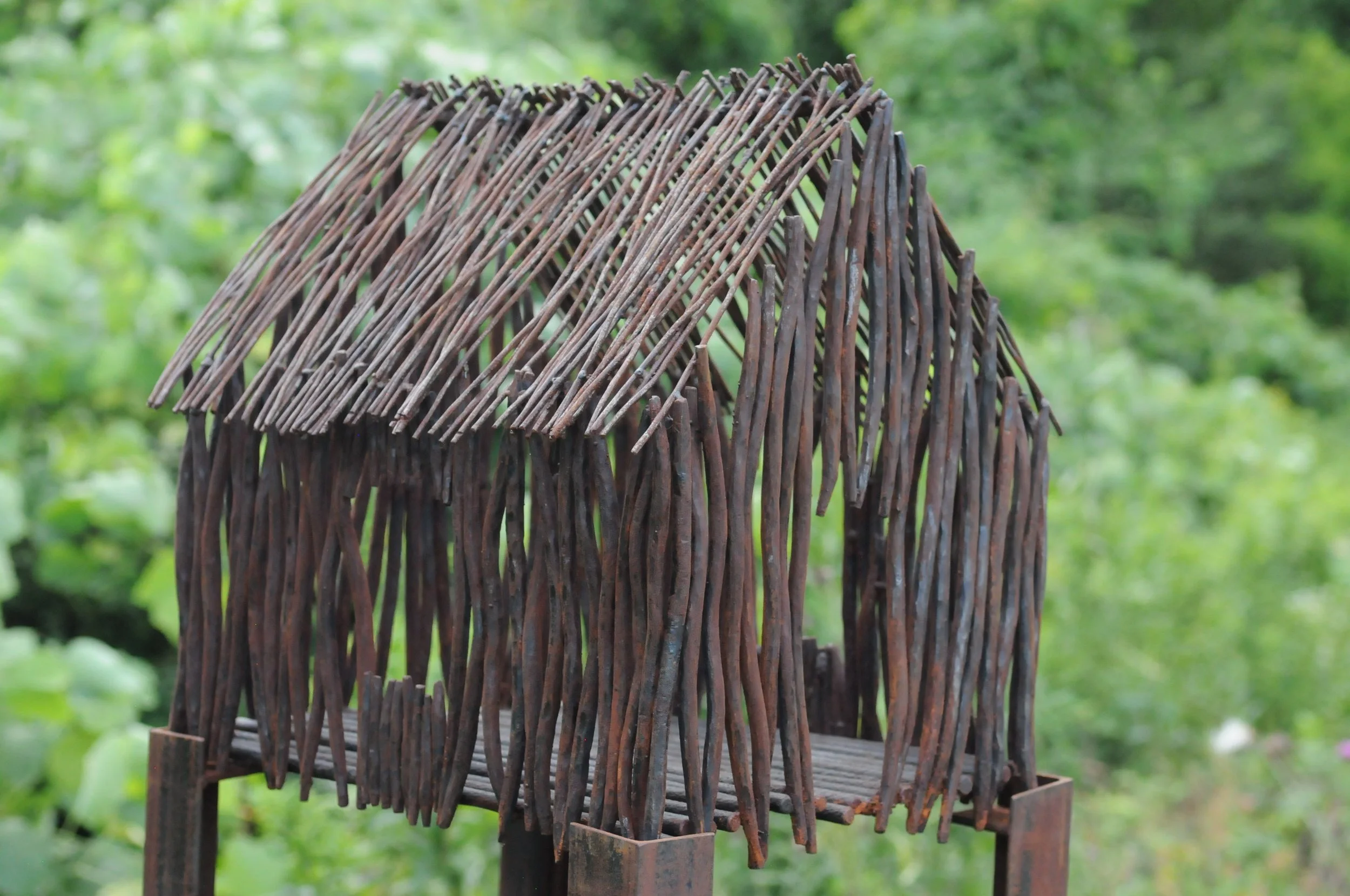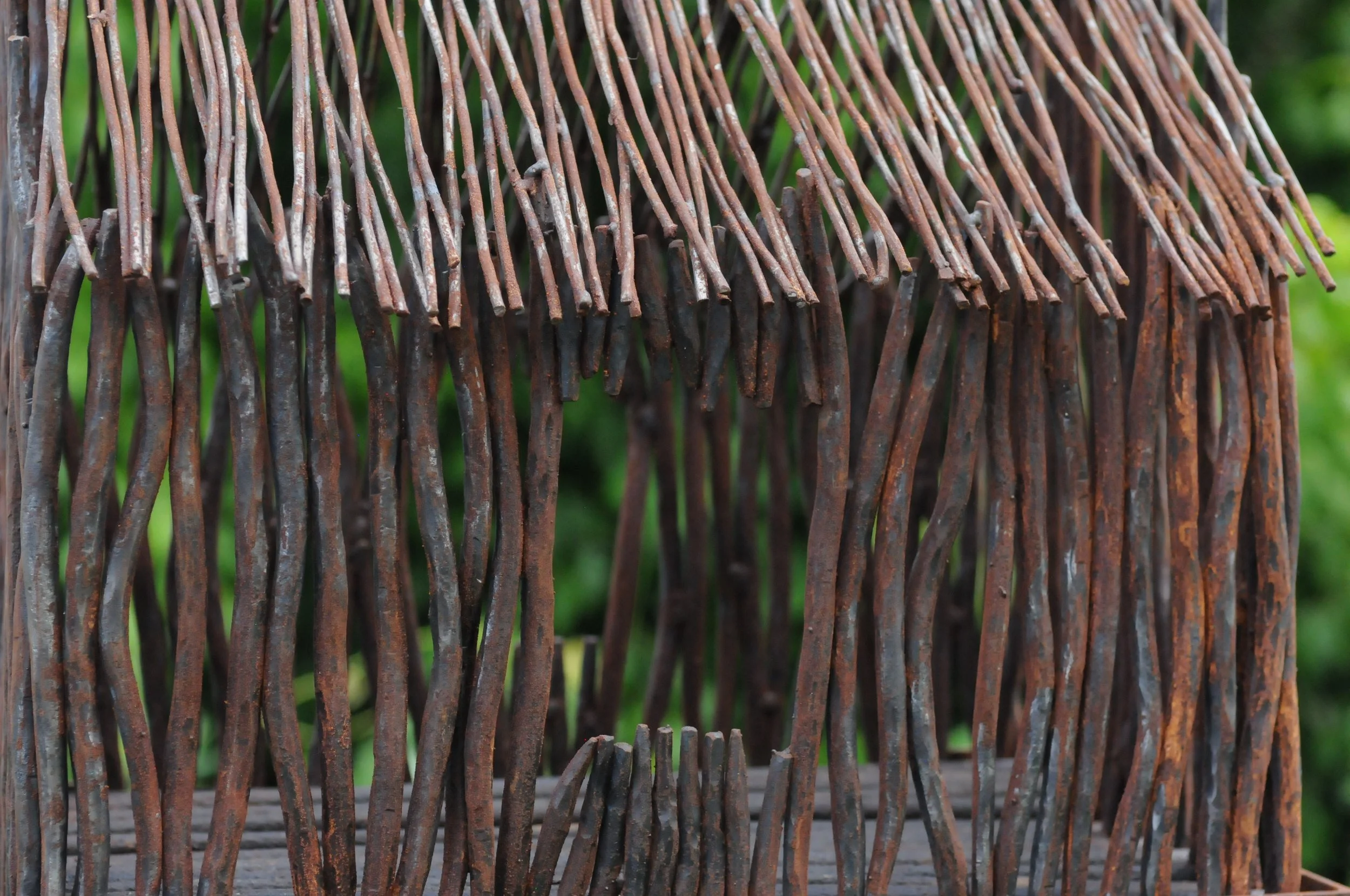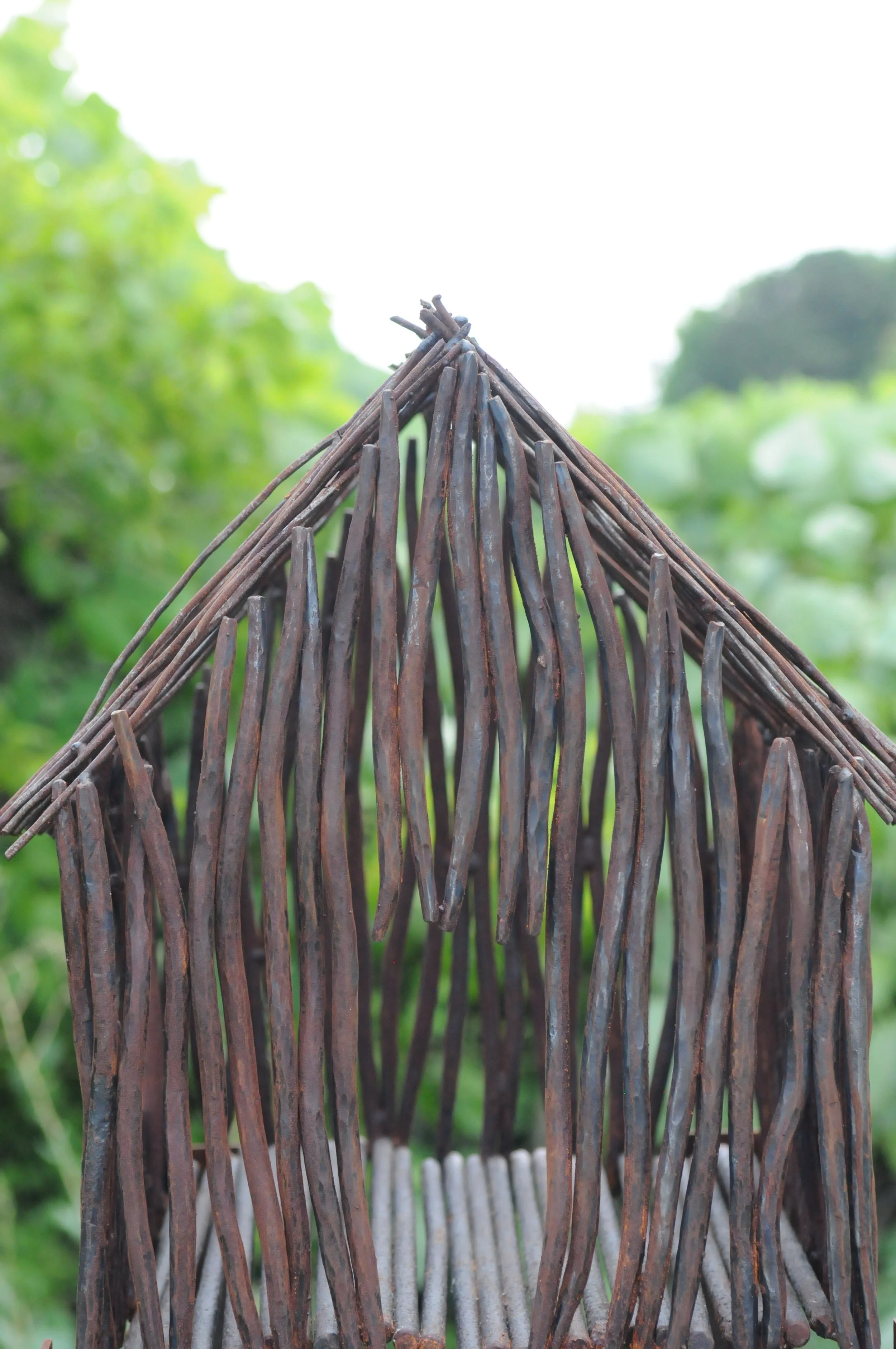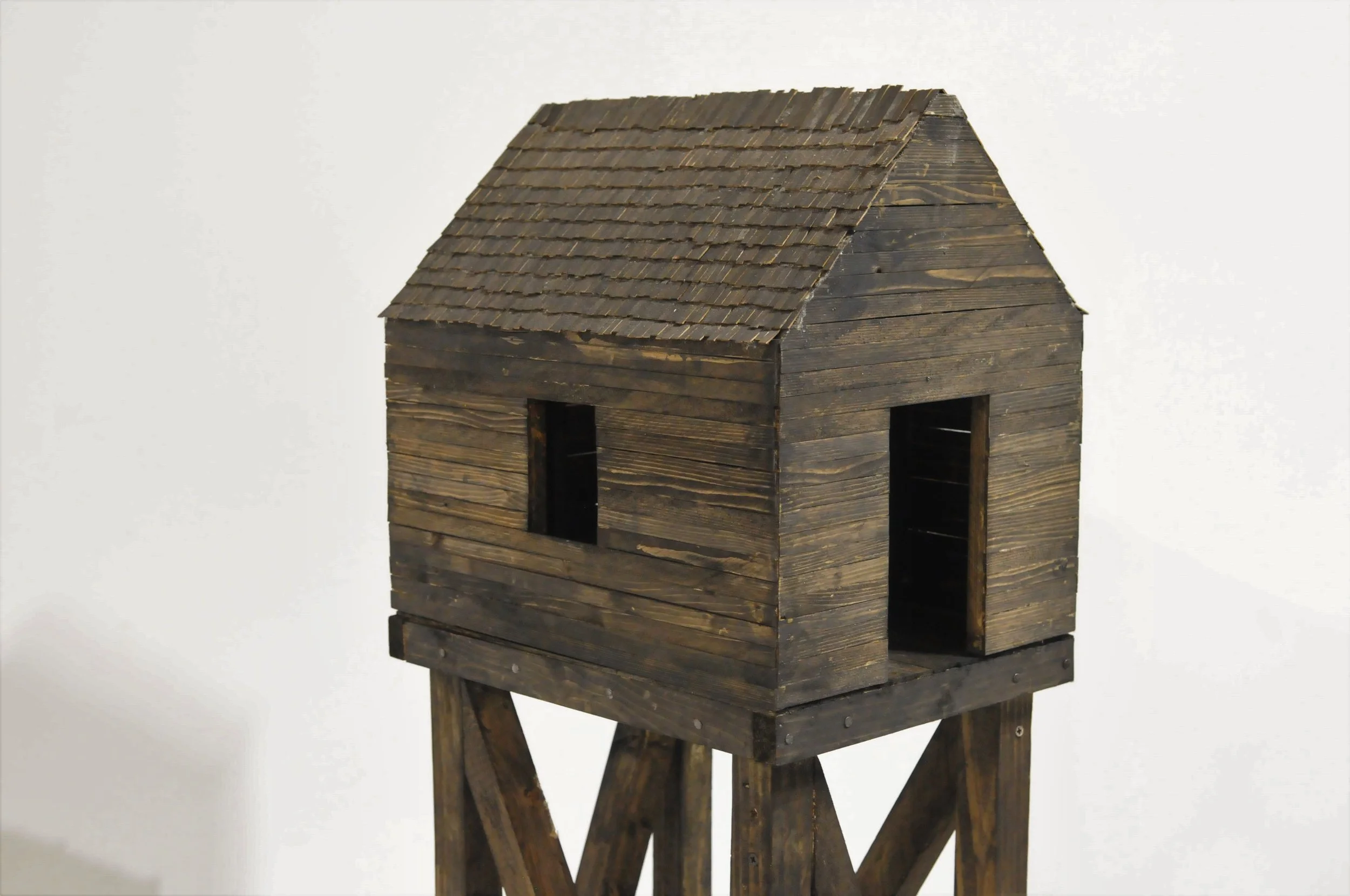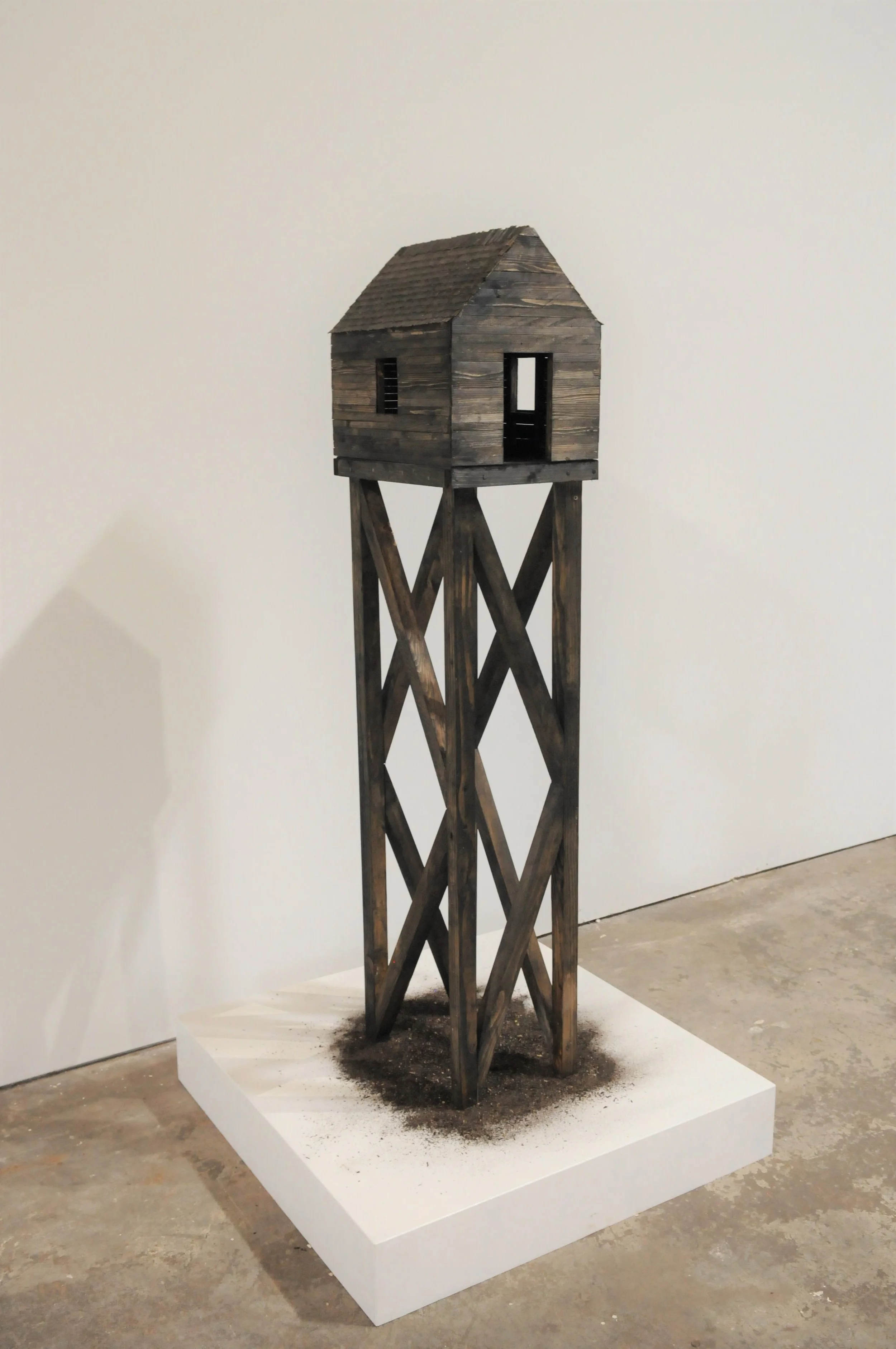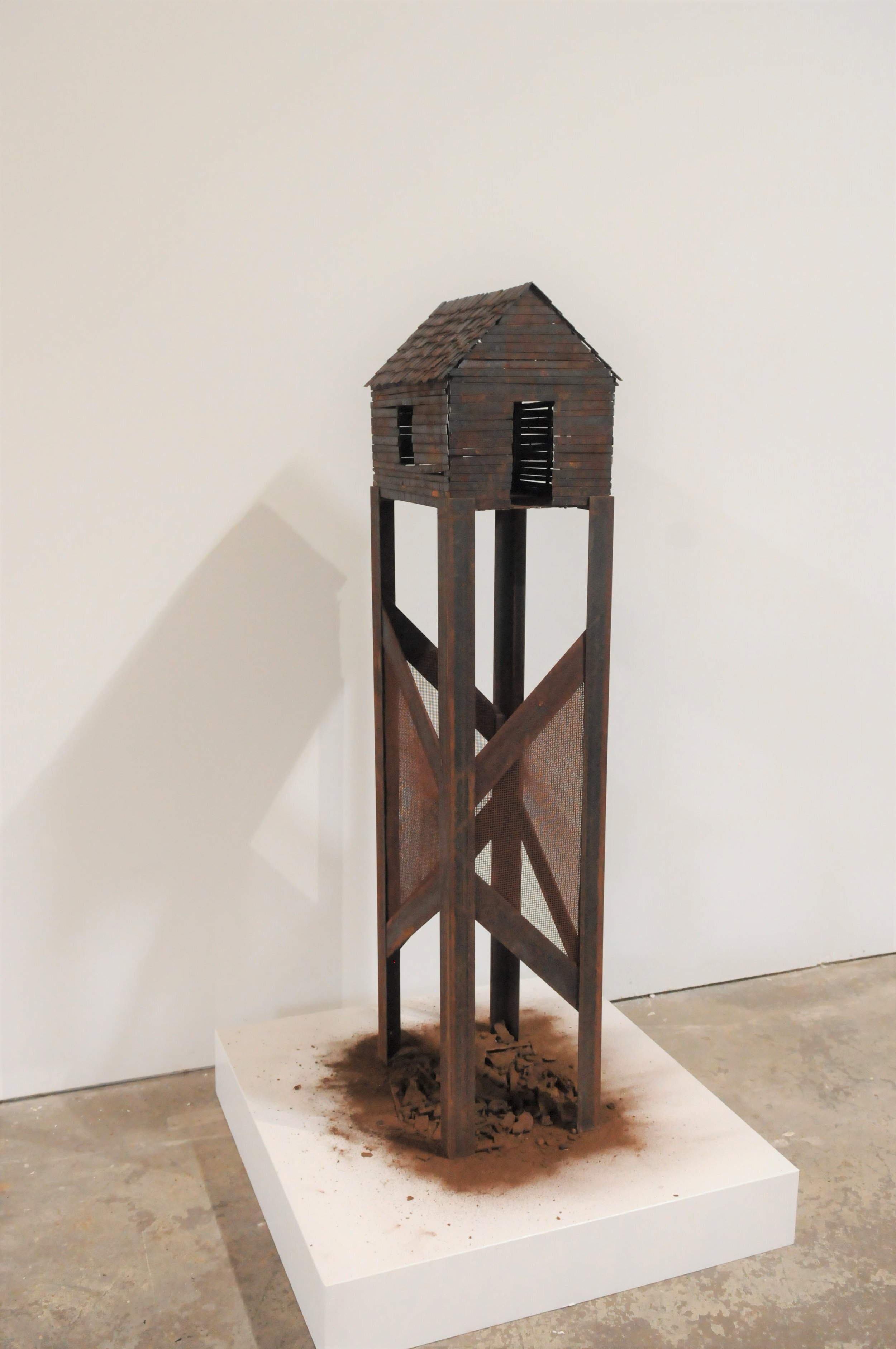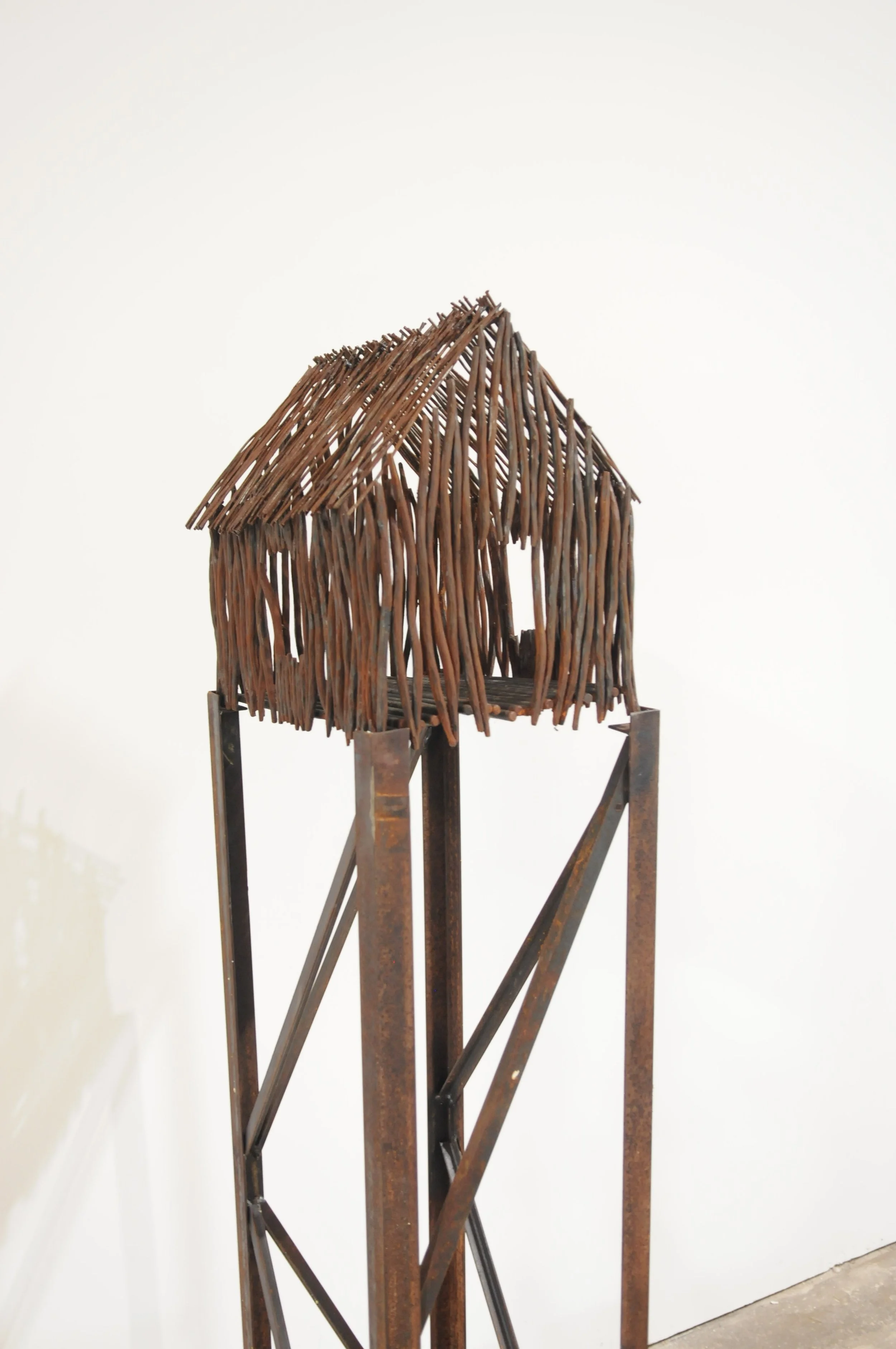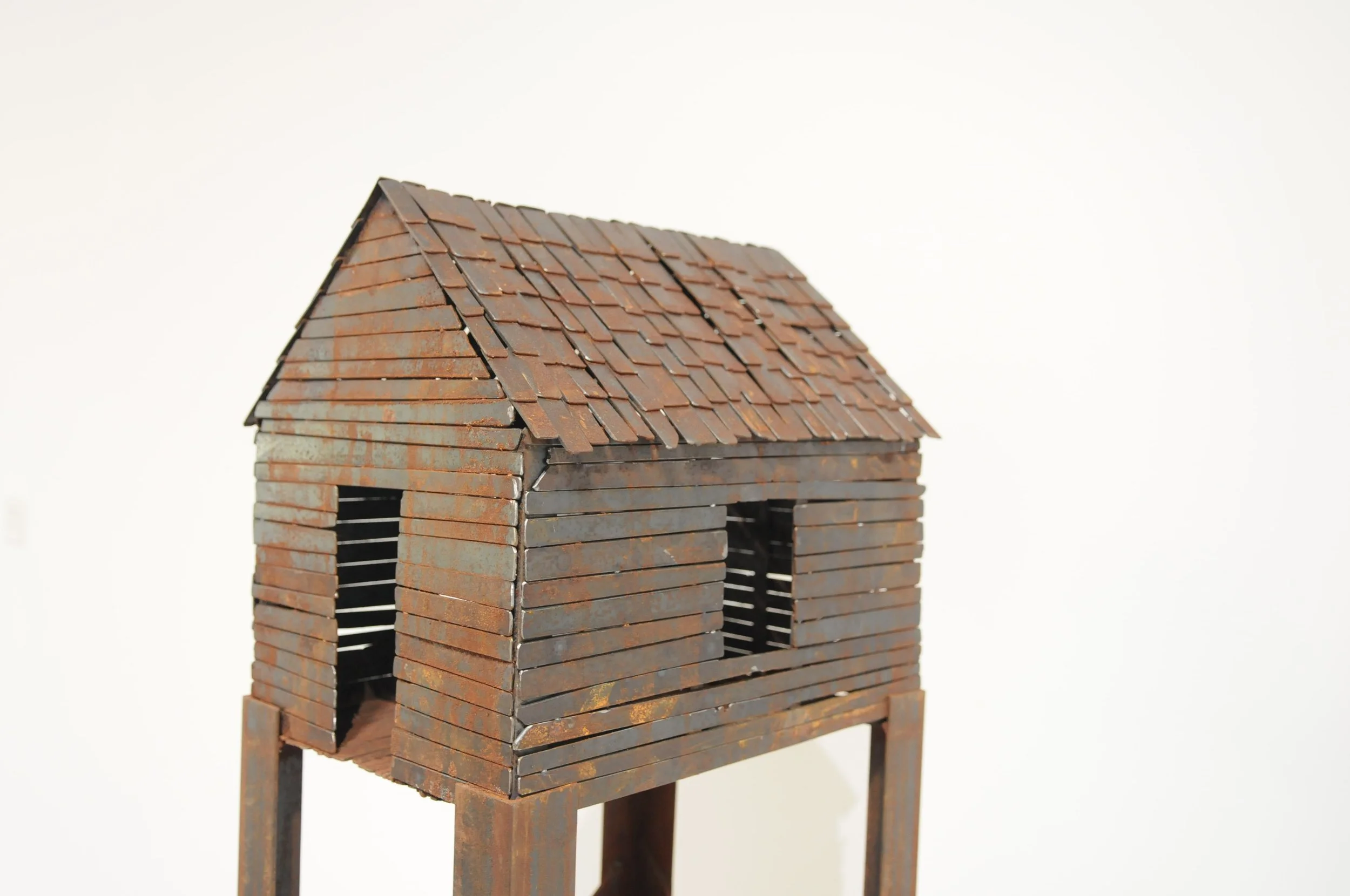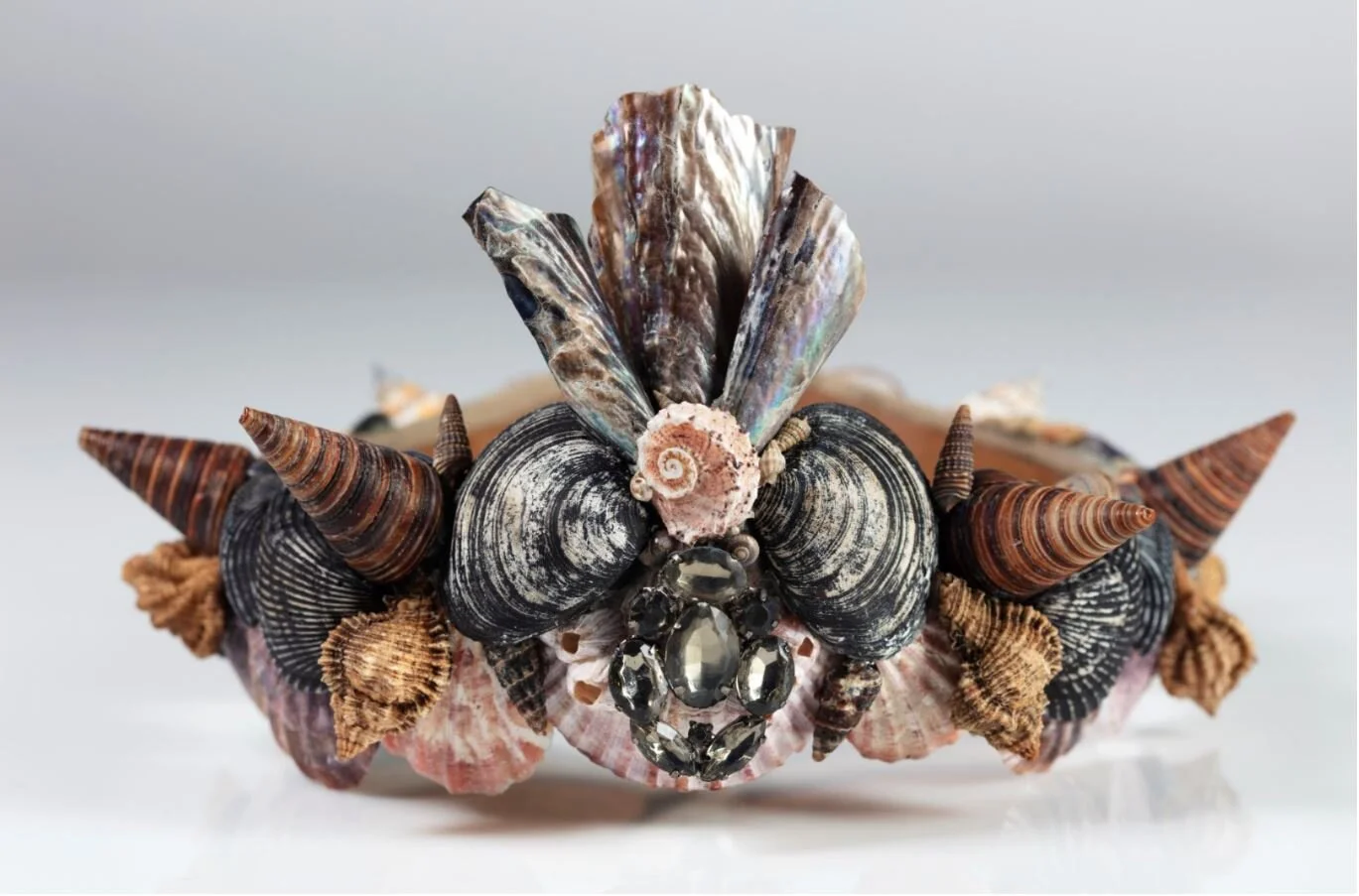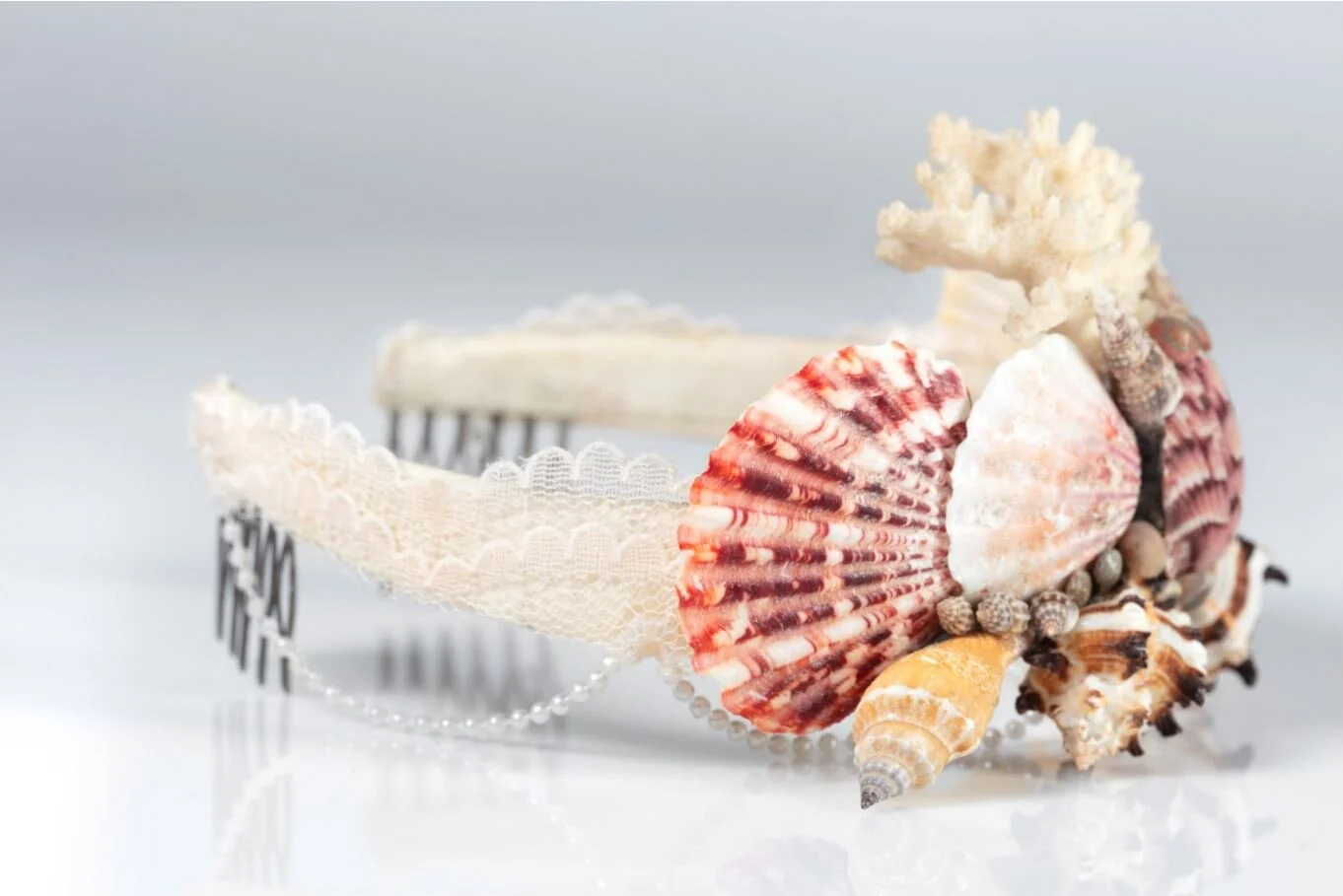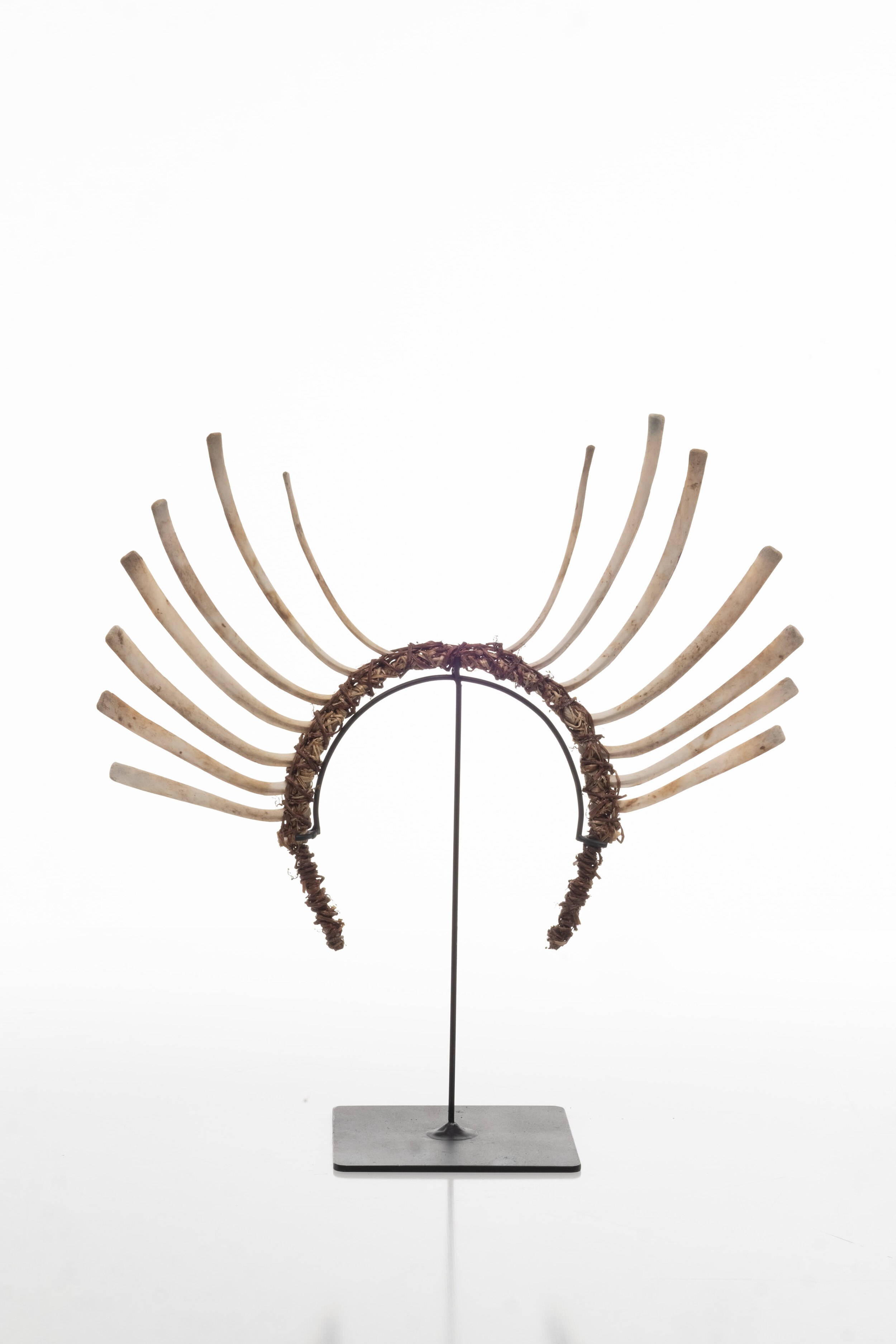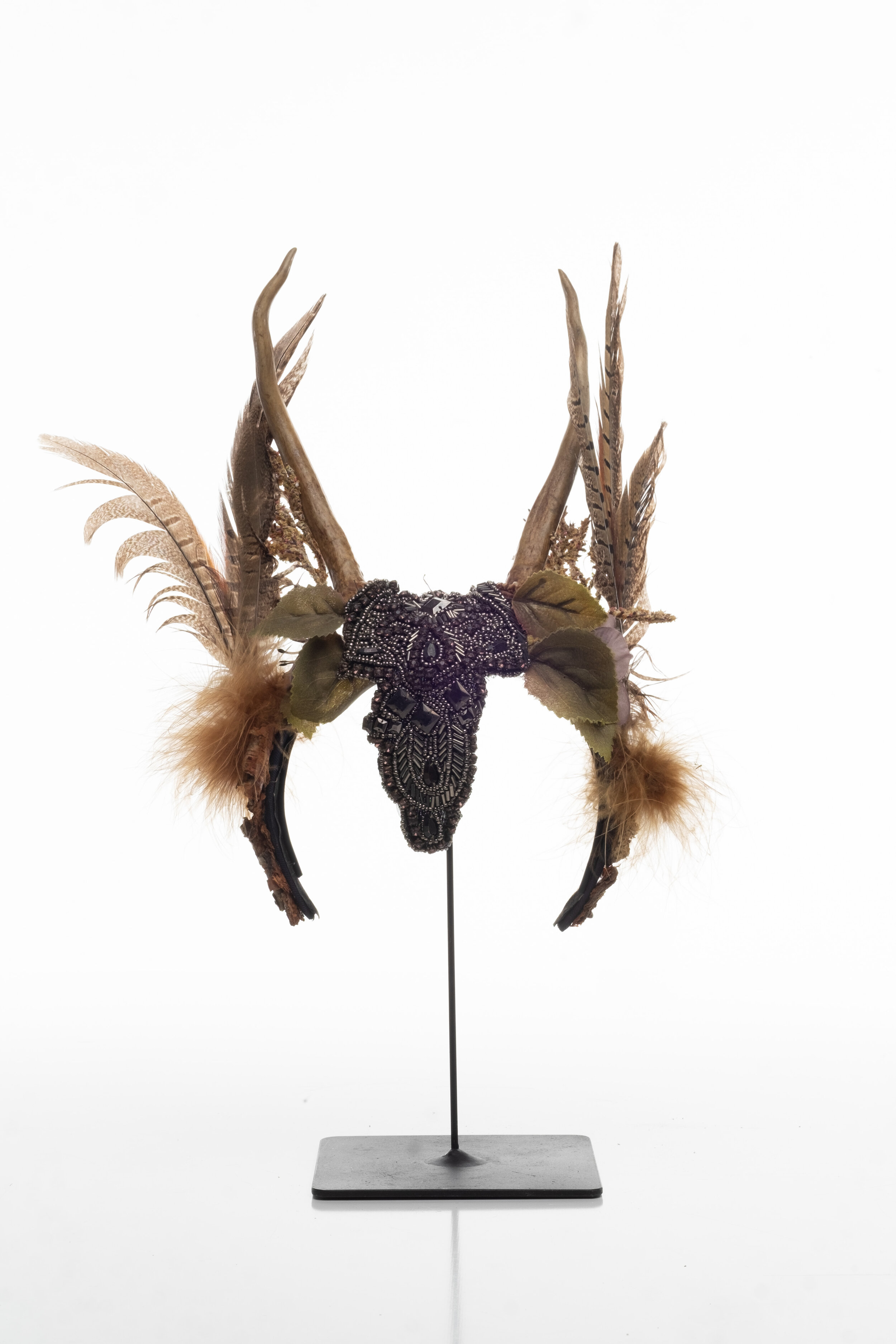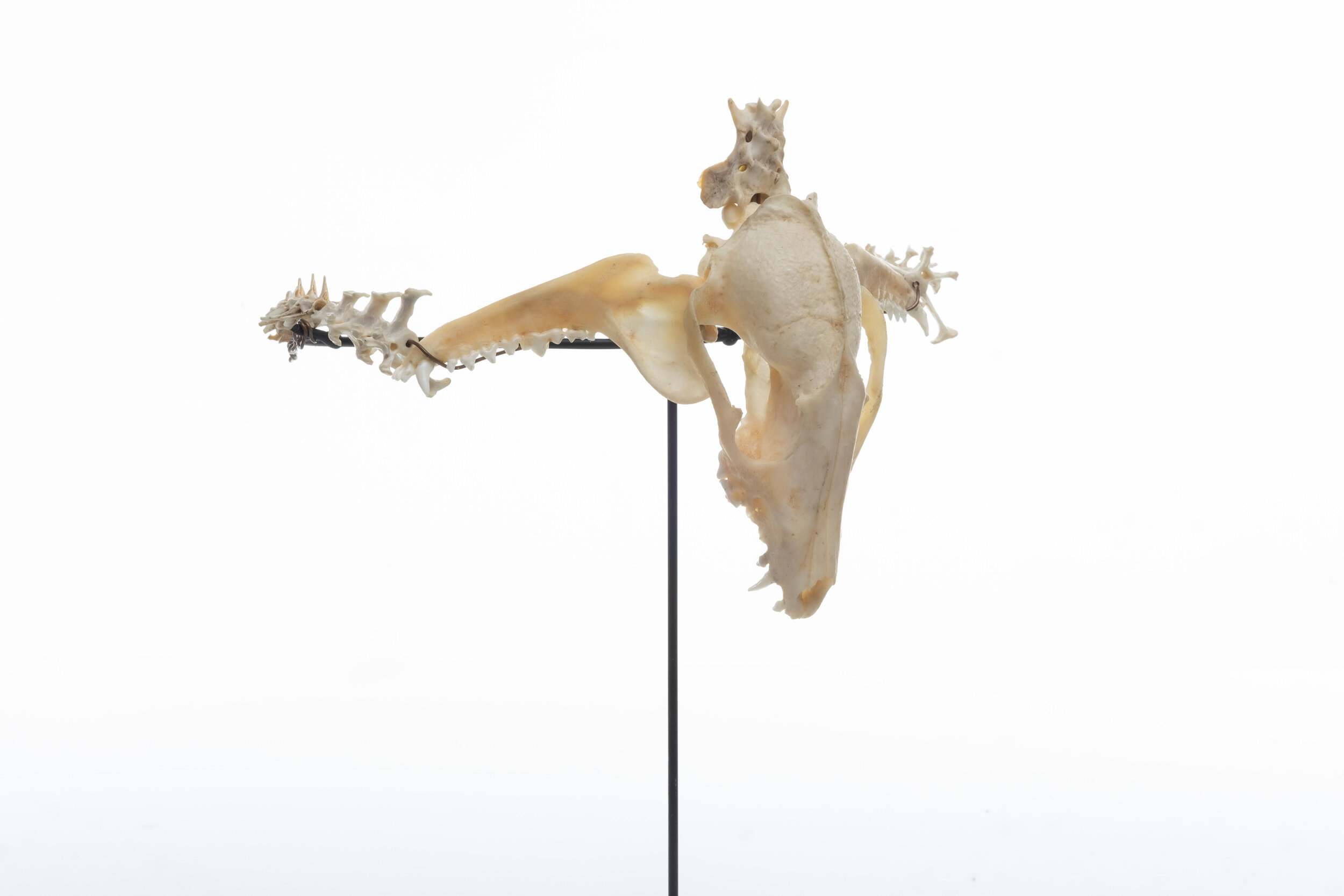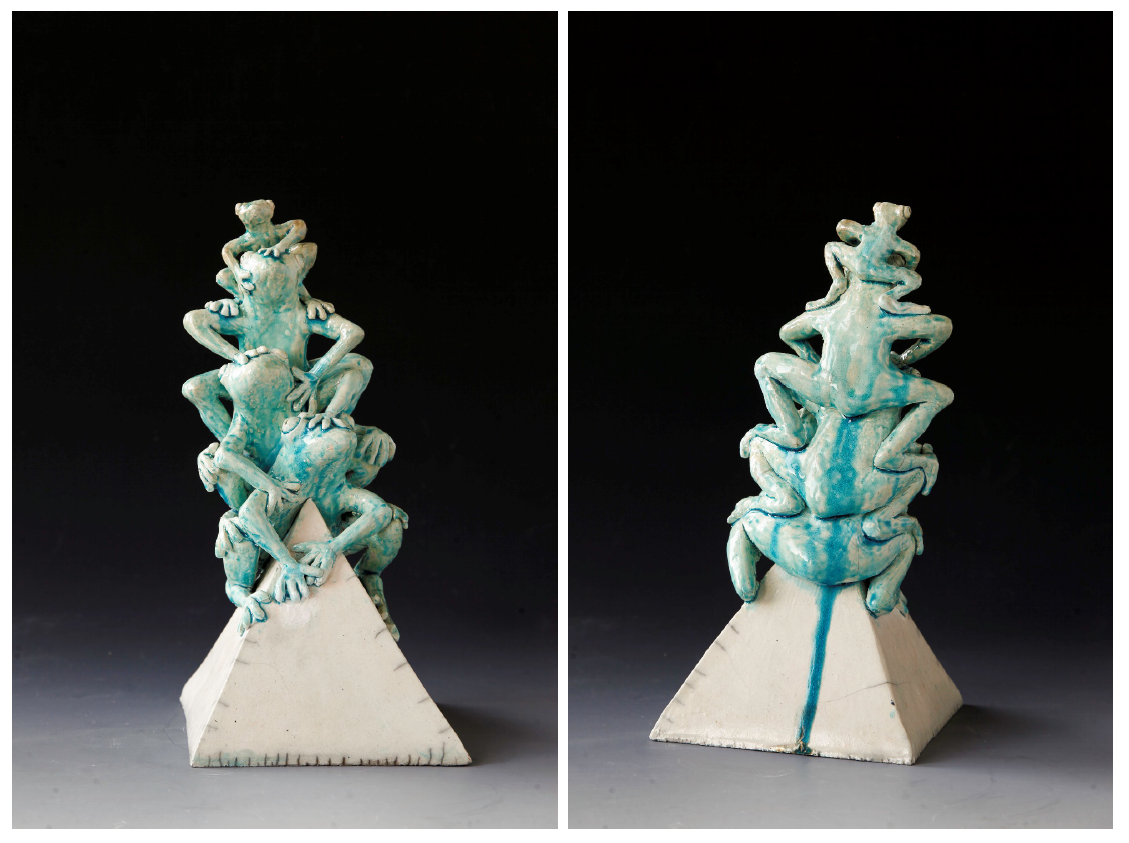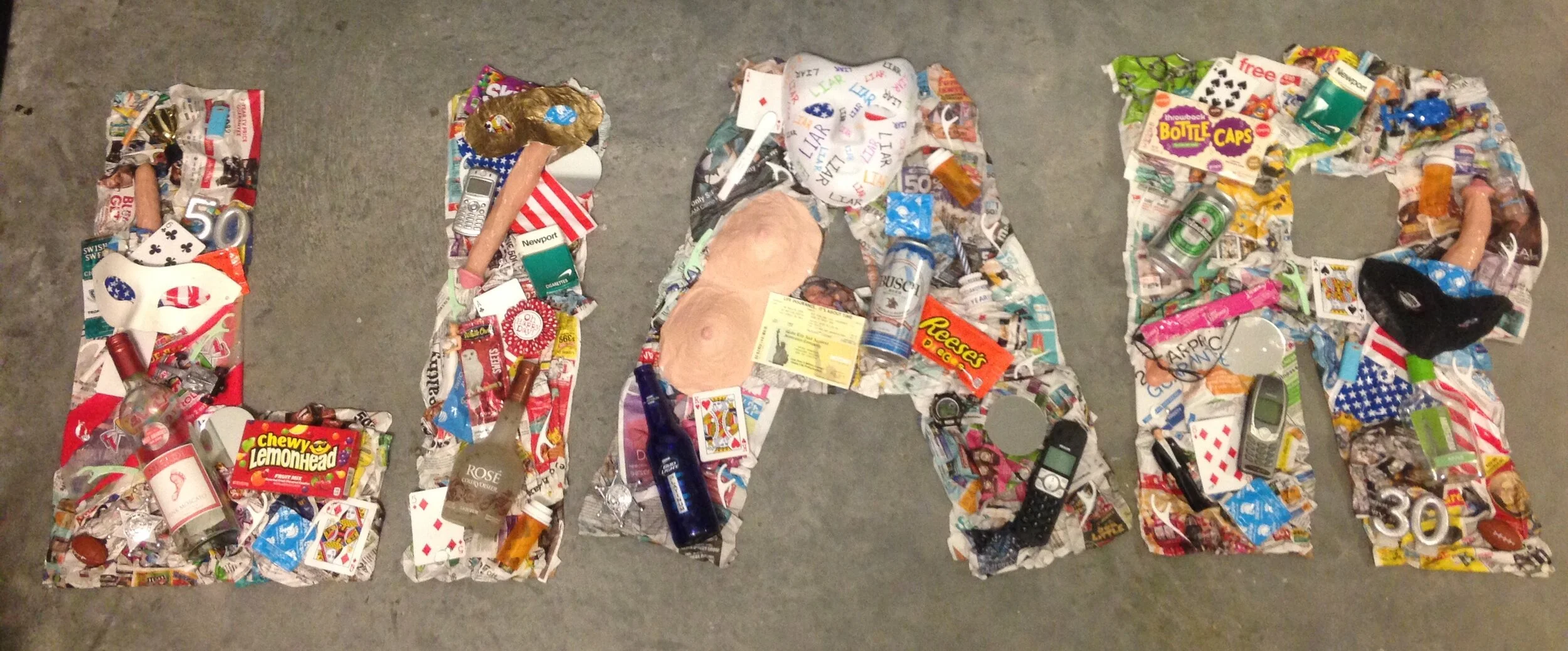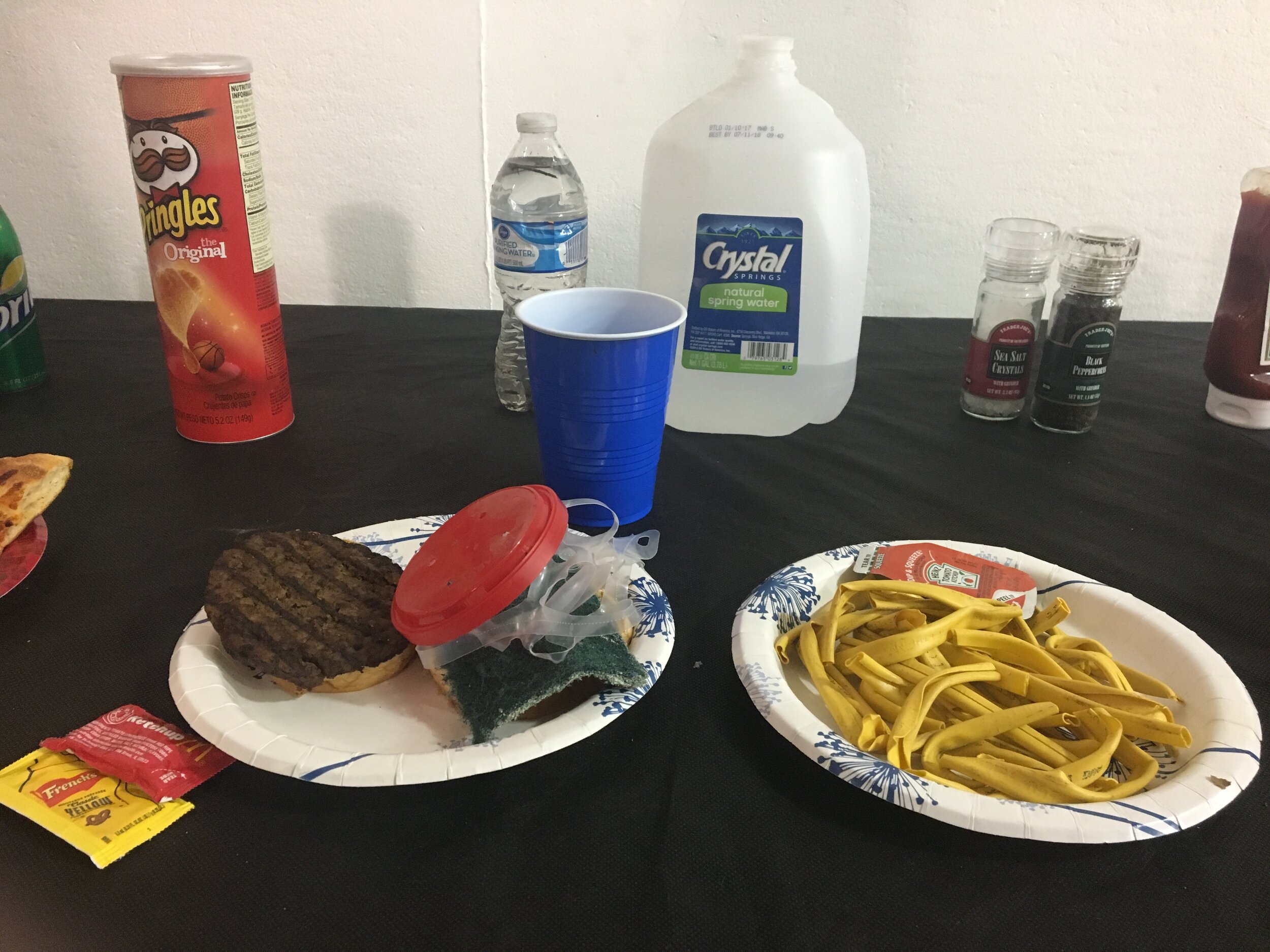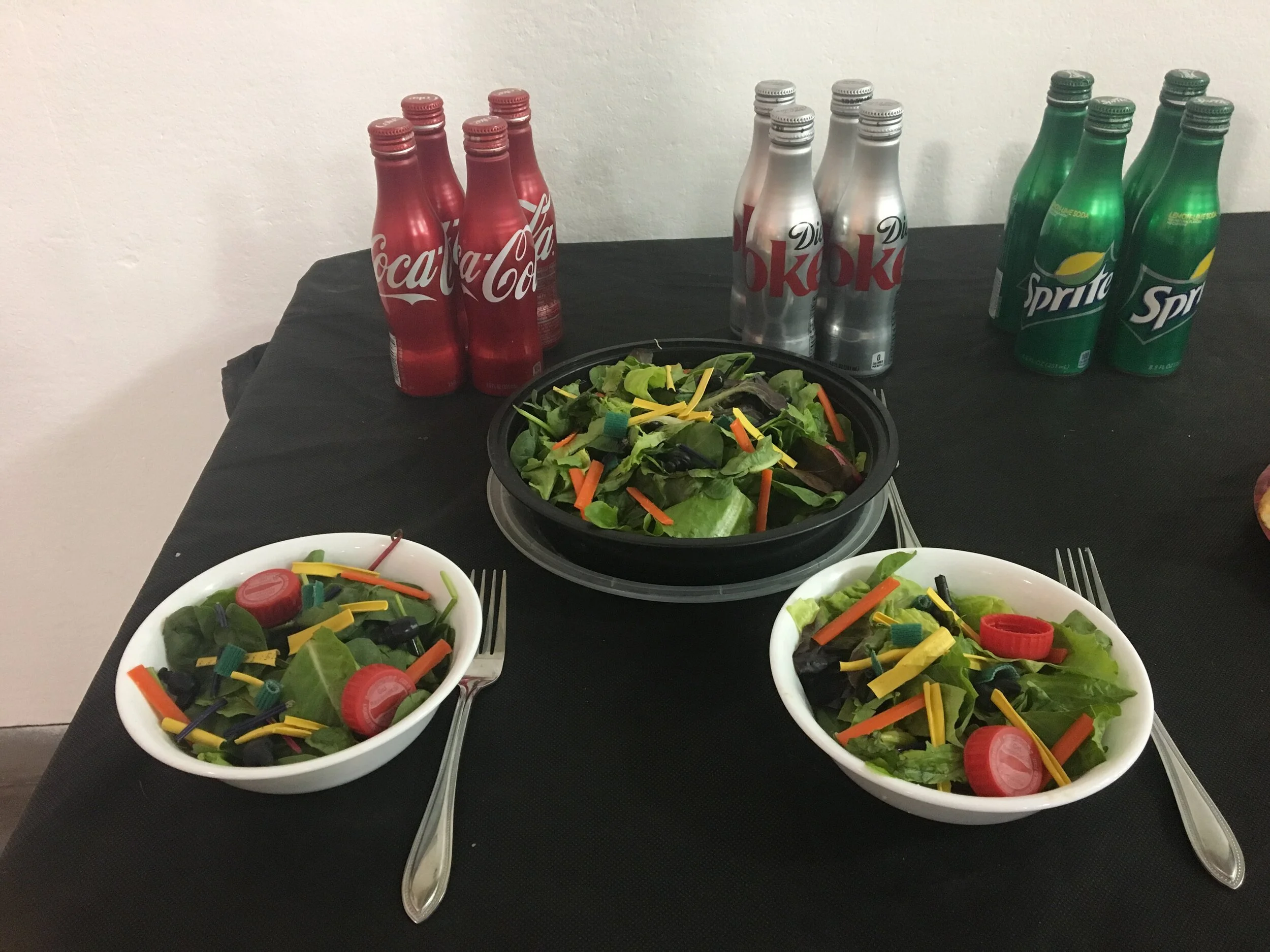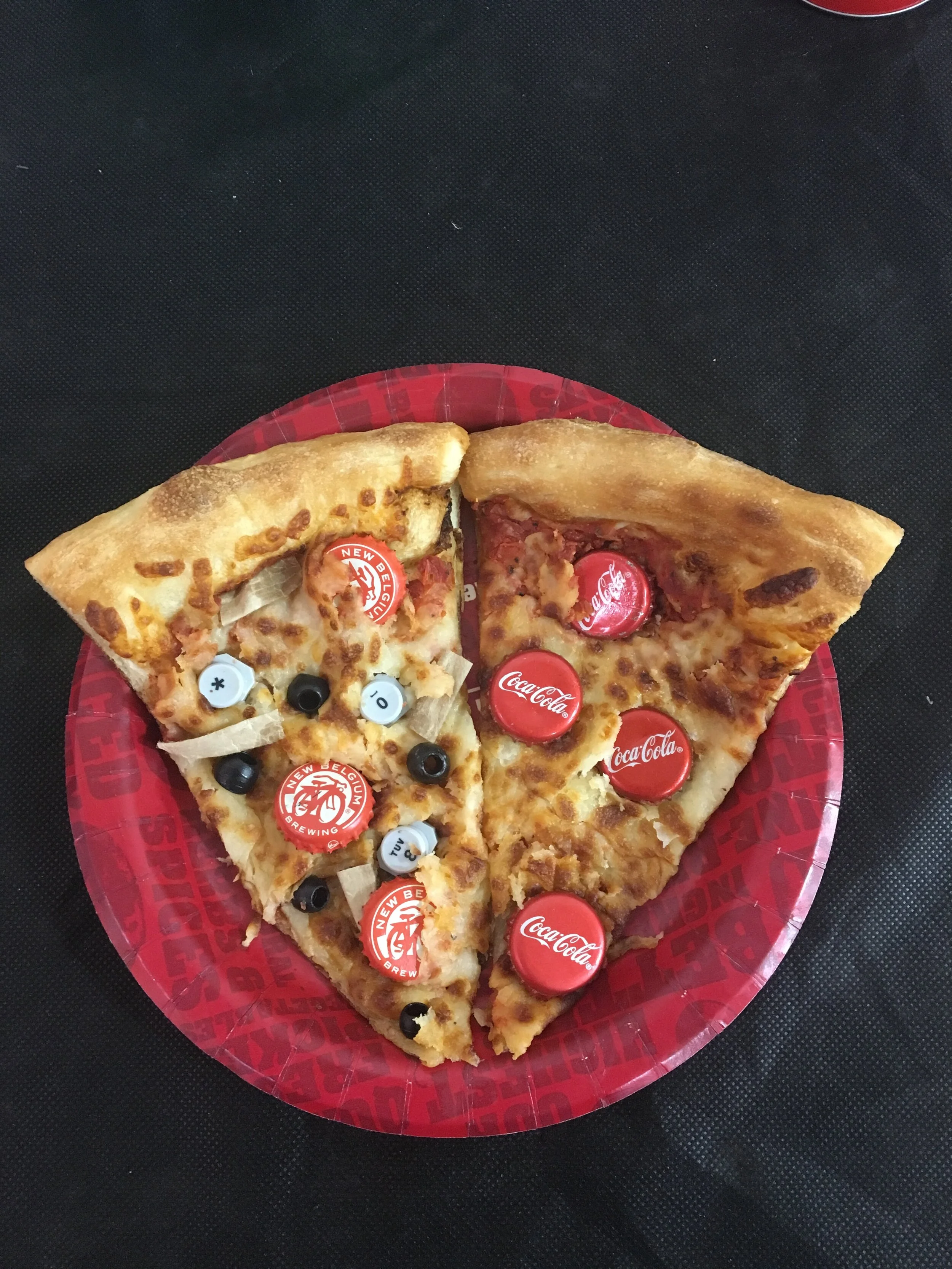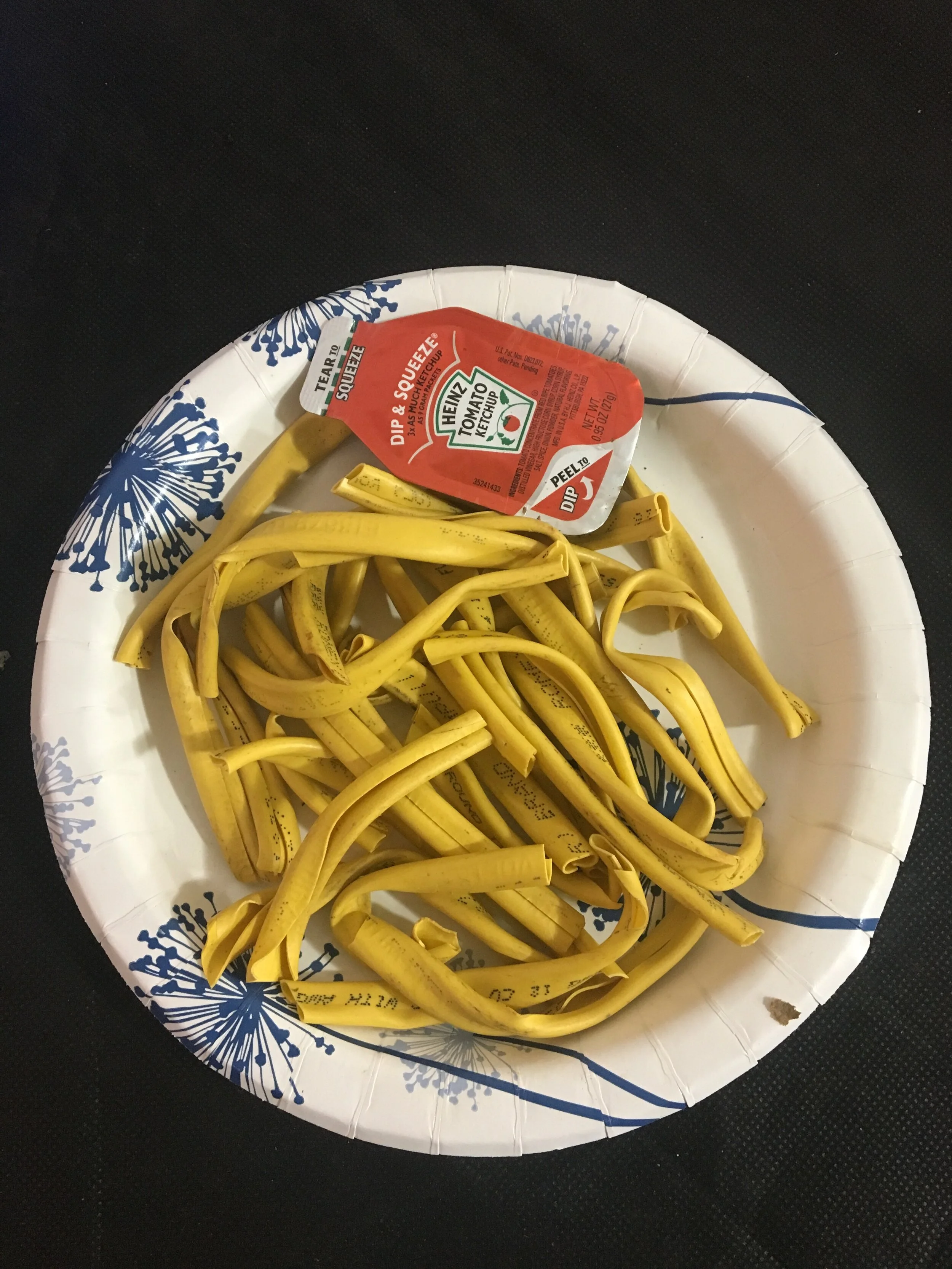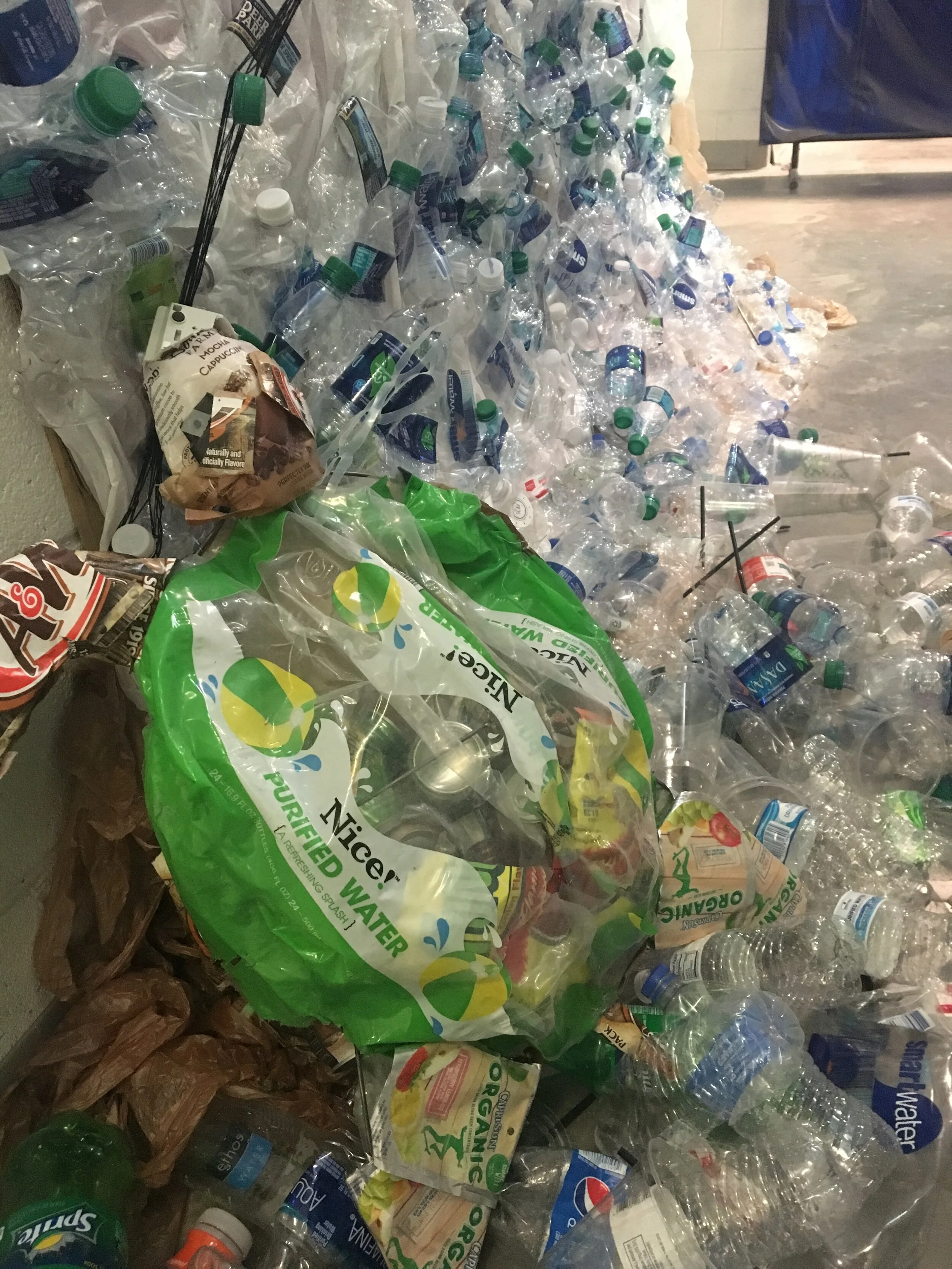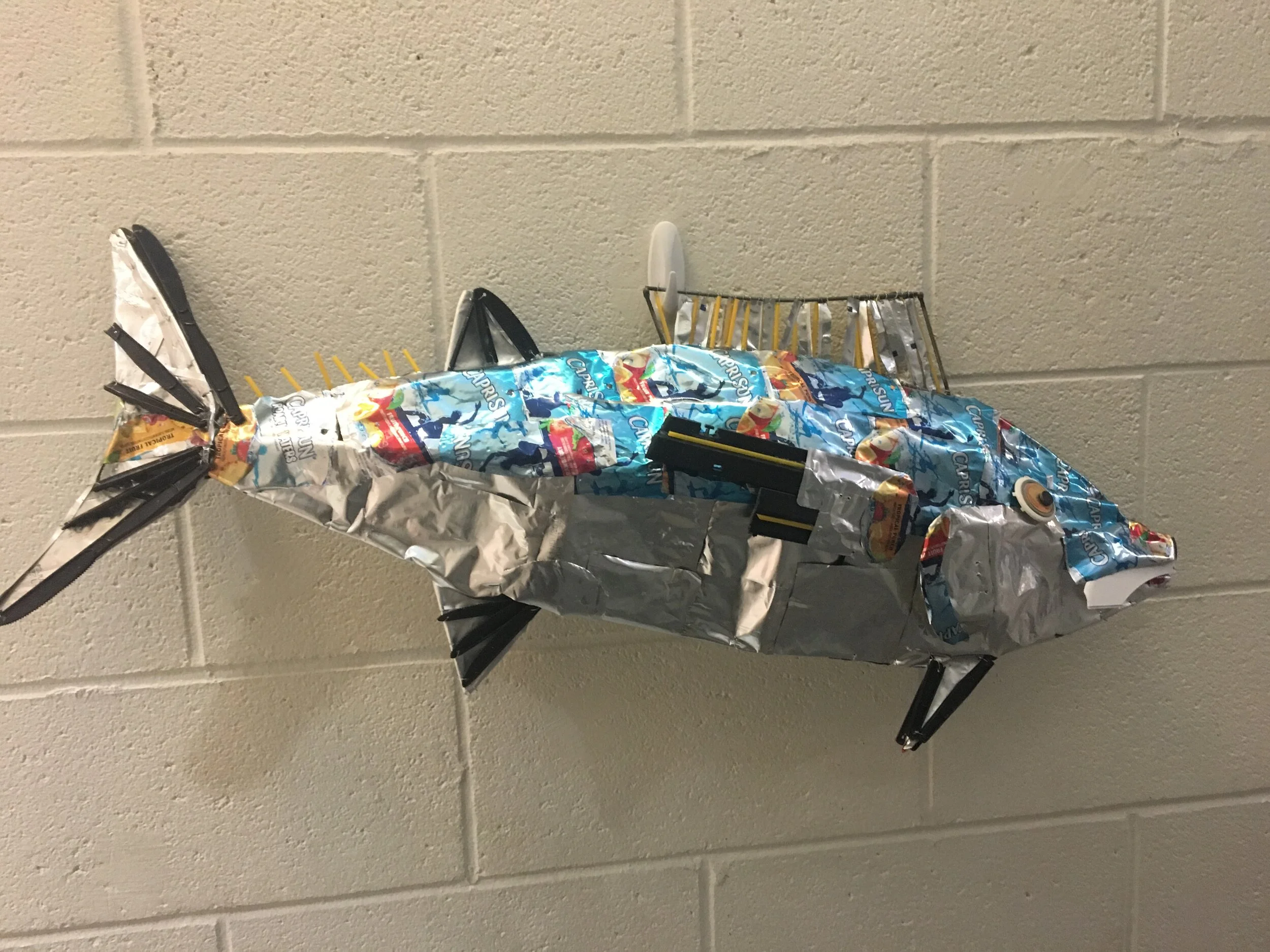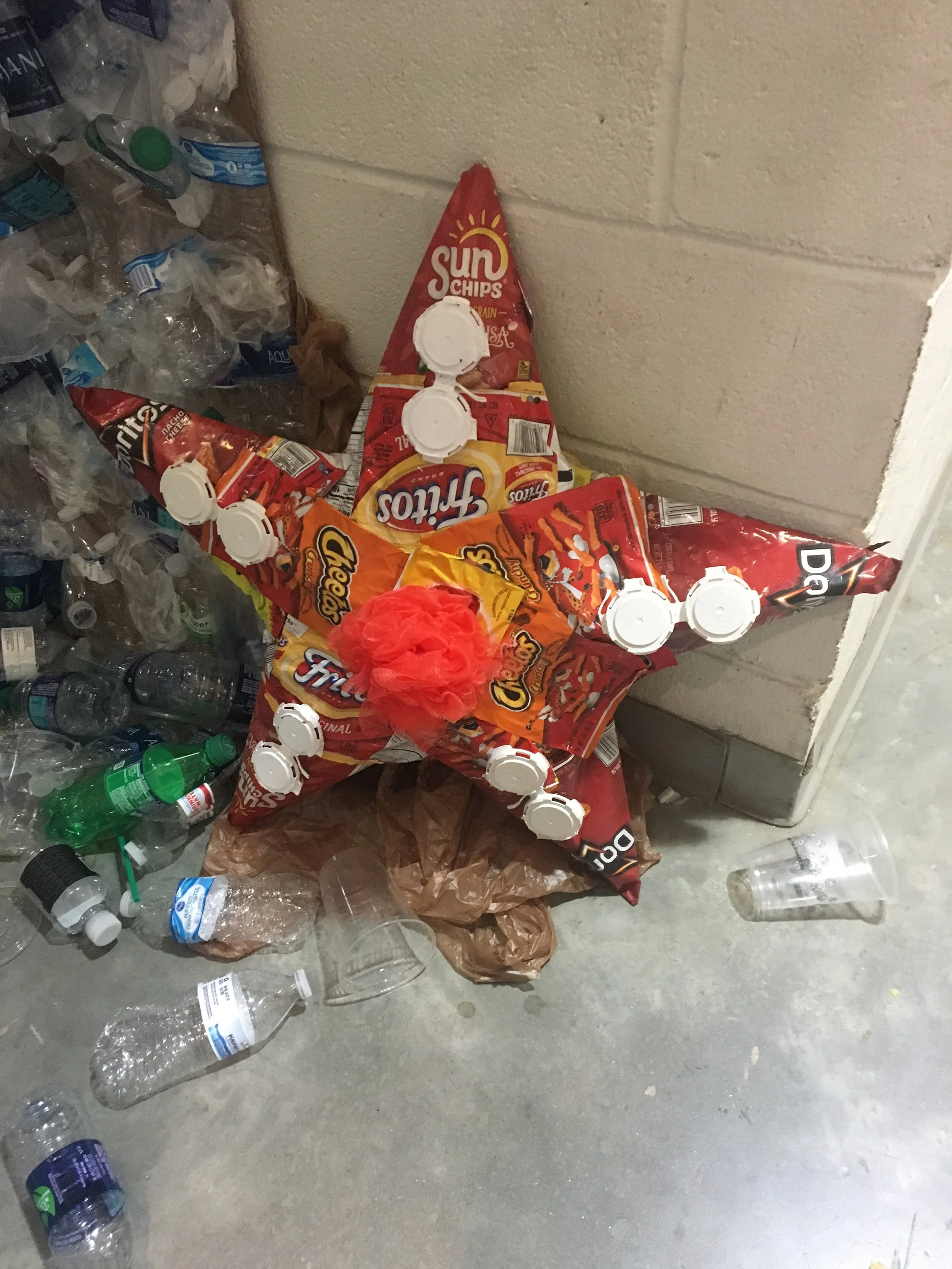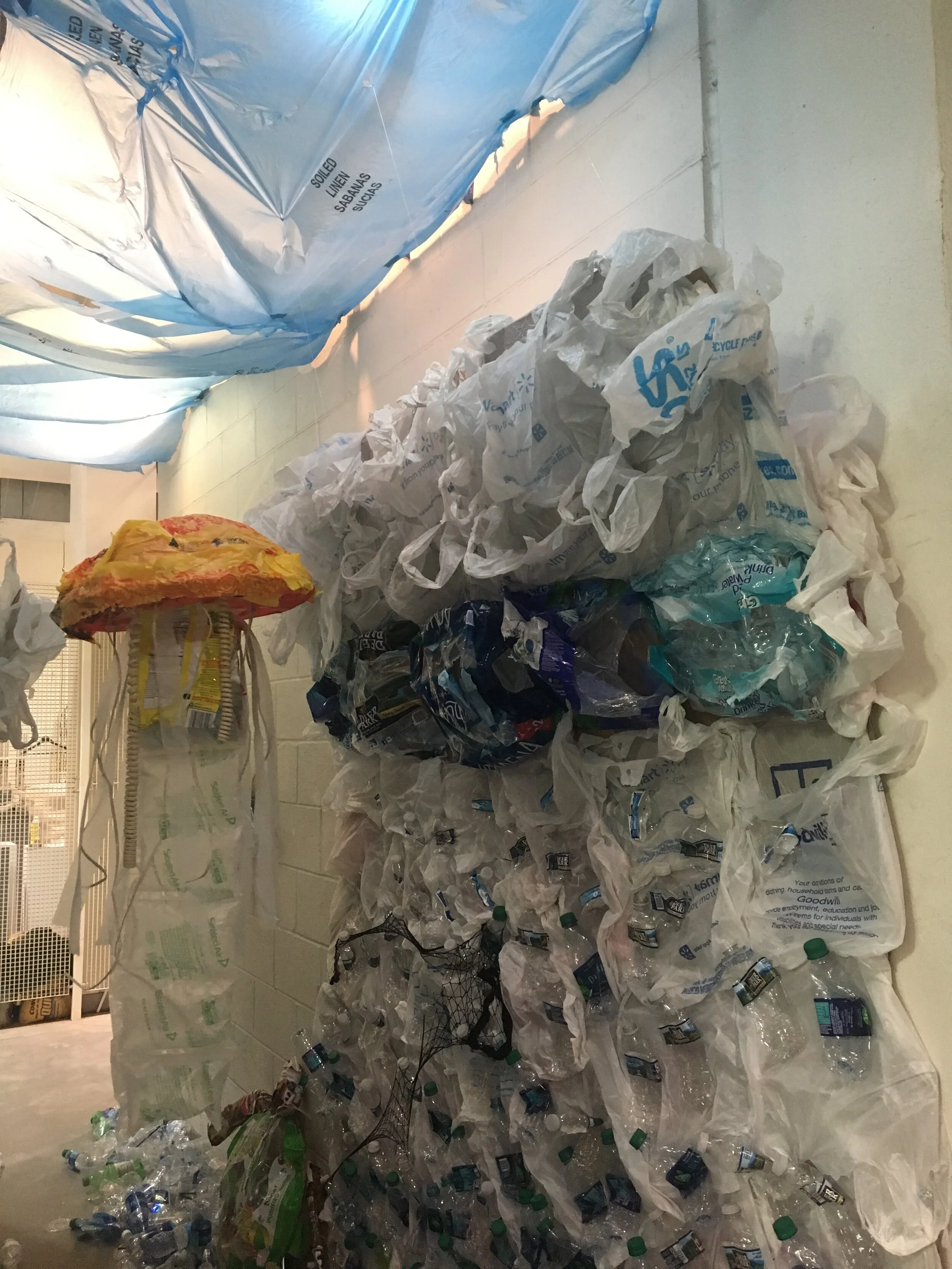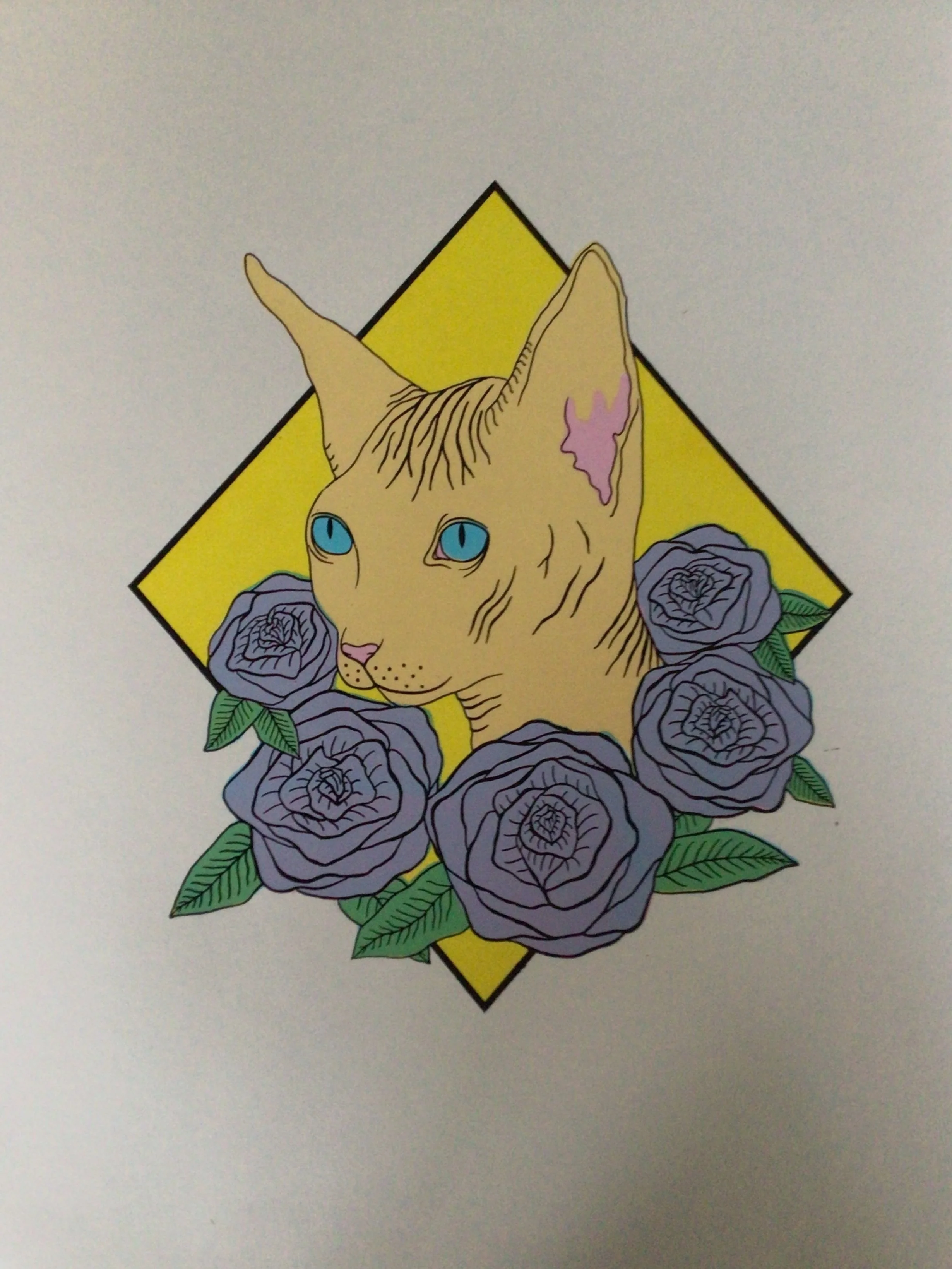(papermache & cardboard)
25ft (Length) x 15ft (Wide)
The Mountain
We all have our own uphill battle to face, whether physical, emotional , or spiritual. We just have to keep putting one foot in front of the other until we reach the top of the Mountain.
(egg carton papermache, chicken wire, & wood structure)
The Road
Each of us has our road to take, filled with trials and tribulations; some are more difficult than other. Directions to the destination aren't always clear but we often know when we have veered from the path.
(gravel)
The Village
It truly takes a village to raise a child or create a large-scale project. Within this archetype, there is a sense of community & connection. But if one deviates from societal norms it becomes one of isolation.
(cardboard)
The River
A place where worry and fear can be washed away or run rampt like rough rapids. The River can represent solitude and peace if we choose not to fight the current. We must choose to go with the flow.
(brokenn blue glass & fabric)
The Voyage
It is never smooth sailing in life, rough waves and uncertain waters threaten stability. But if one can weather the worst of the storms there are brighter days ahead for all who choose to voyage.
(vintage handbuilt boat)
The Forest
The flora and fauna of the Forest offer peace and comfort away from busy city life. This contrast can quickly shift when the sun begins to set, we may feel the instinctual fear for our safety. We often must ask ourselves whether we are prepared to endure the dark forest or stay in our comfort.
(wire armature, papermache, dirt)
The Tower
In tarot the Tower is a card of transformation, it can be an unexpected or big change. Whether upright or reversed it’s an inevitable change that’s taking place. painless or not, the Tower makes us more resilient, brings enlightenment, and aligns us to our path.
(ceramic with stain)
The Four Horsemen of the Apocalypse
The harbingers of the end times... One for Conquest, a self-righteous leader seeking to assert their dominance. Followed by War, fueled by a justified anger and hatred for their cause. Another of Famine, driven by scarcity and inflation this horseman is driven by hunger. The final one, Death, offers surrender from the world's woes and suffering.
(wire, aluminum, & papermache)
Sun & Moon
More about these in the future...this is not their story.
(papermache & light)
Harper's Weekly, A Journal of Civilization
A politicial magazine from 1860's that chronicles the Civil War from the Union's perspective. This shows the archtypes and their echoes through time.
